Eskisehir, Turkey, Monday 5 July 2021
As I write these words, it is still only Sunday 4 July and chances are that if Swiss Miss has finally arrived in Panama City, she is probably seriously jetlagged and tired from her flights and the time zone difference.

I have followed (and have continued to slowly chronicle) Heidi Ho‘s adventures since the start of 2019 when she left her post alongside me at St. Gallen’s Marktgasse Starbucks and went a-yondering to Myanmar, Sri Lanka, Vietnam, Thailand, Israel, Morocco, Mexico, Zanzibar, and (starting today) Panama.

I do this duty with the sole intent of showing my gentle readers that anyone can travel, that everyone should travel, and there is much to see in the world through the eyes of a lady traveller and the words of this worldly wanderer.
In my attempt to chronicle every calendar day of 2021 and intertwine those events with moments past and present of Heidi and myself, it seems sort of fitting that 21 February’s main event is an appropriate opportunity to show how it fits in with what Heidi saw and experienced as she travelled from Hanoi to Halong and Halong Bay.

Landschlacht, Switzerland, Sunday 21 February 2021
It was a bright sunny day this day but I scarcely remember how it was spent.
I remember that there was a landmine explosion in Tillabéri, Niger, targeting members of the electoral commission in this, the second round of the Niger presidential election.

I remember the assassination attempt on the Libyan Minister of the Interior Fathi Bashagha in the capital city of Tripoli.
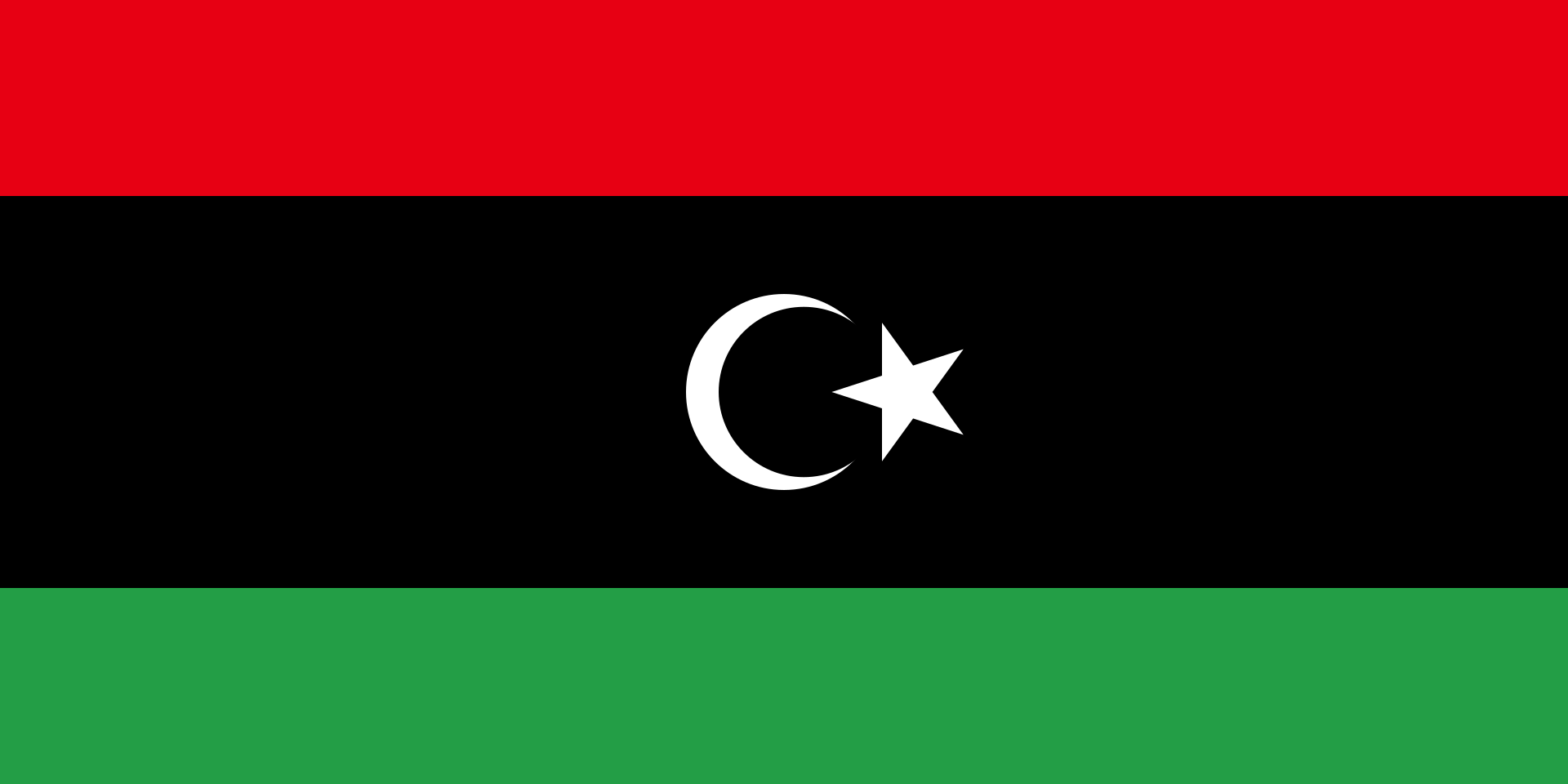
I vaguely remember a military aircraft crash in Nigeria and a Learjet crash in Mexico and an oil spill off the coast of Israel.
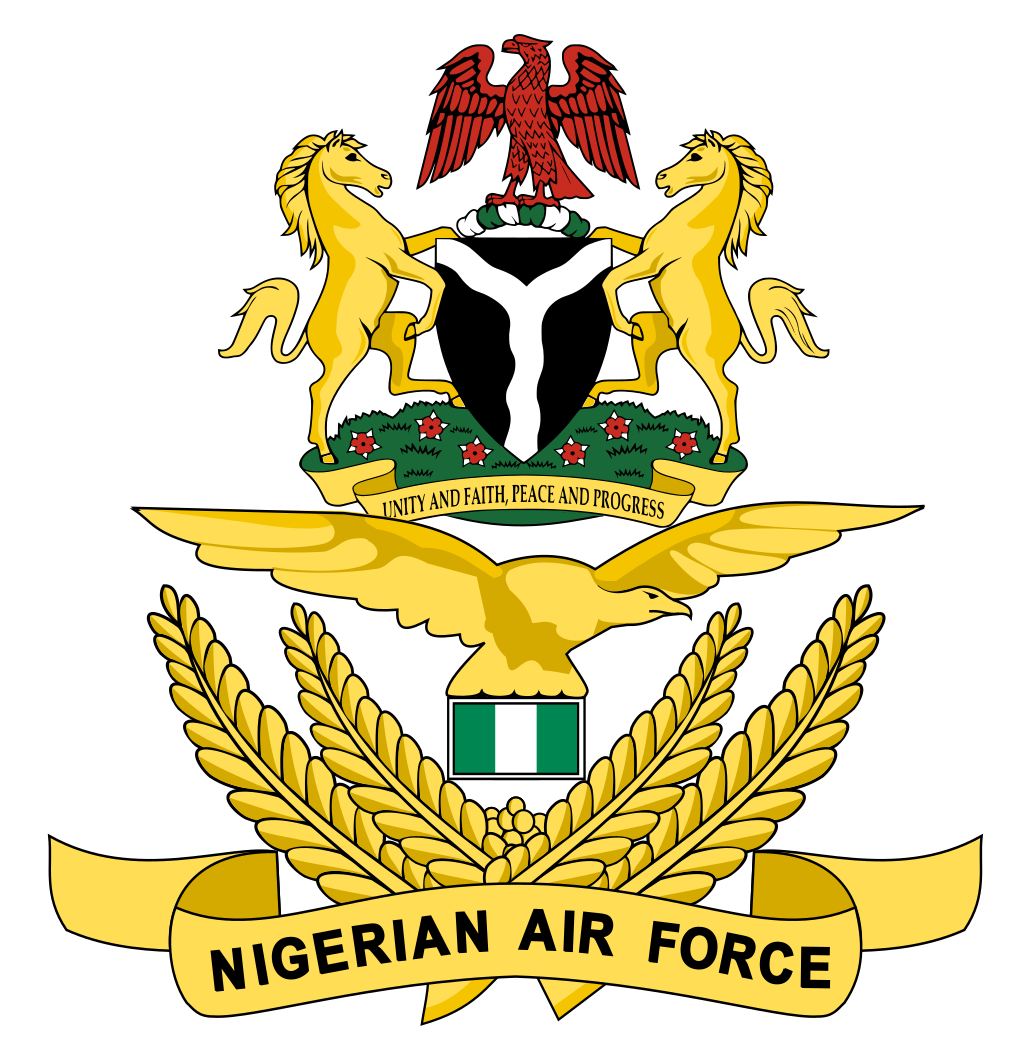

Above: Logo of the Mexican Air Force

I have dim recollection that Israel eased their Covid-19 lockdown, that Malaysia and Serbia received their first vaccine shipments, that there were now corona virus variants in the Philippines, Taiwan and the US.

I remember Iran again permitted inspectors to examine Iranian nuclear reactors, and that there were elections in Niger and Ecuador and Laos.



I recall that Facebook took down the main page of the military of Myanmar a day after two protesters were killed, saying that the account violated its policies of “incitement to violence and coordinating harm“.
Earlier, the military had blocked Internet access in many parts of the country.
Myanmar: not a happy place these days.
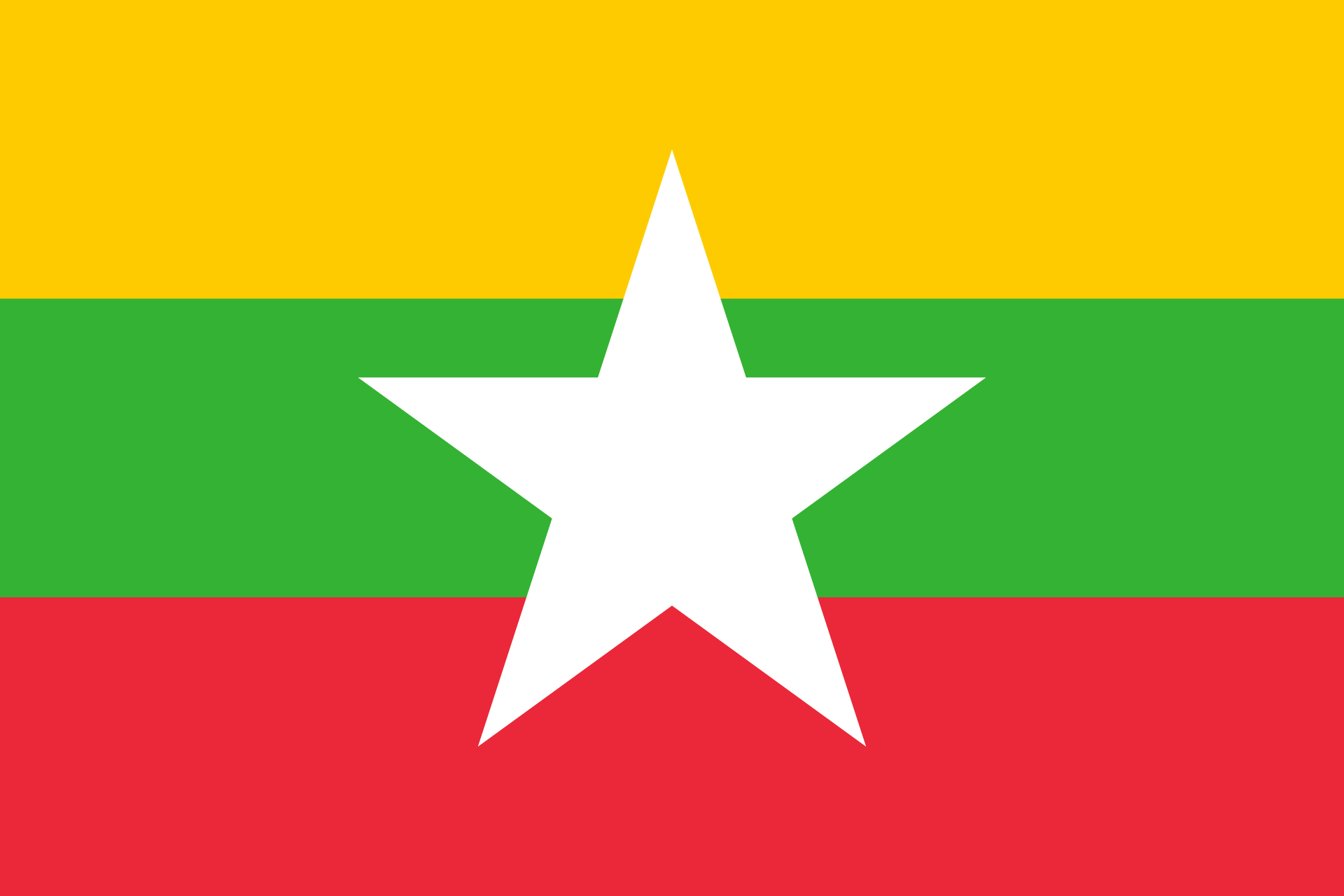
Namely, I remember that it was the 173rd anniversary of the first publication of The Communist Manifesto by German philosophers Karl Marx and Friedrich Engels on 21 February 1848.
We cannot mention Vietnam without taking into account that it is a Communist country.
We cannot mention The Communist Manifesto without wondering whether Vietnam was the vision of Communism that Marx and Engels had meant.



Certainly in Hanoi, Heidi was continually reminded of the presence of the Communist government, for Hanoi is the capital of Vietnam.
But is the capital of a nation the living embodiment of the nation?
I wonder.

Certainly when I compare Ankara to Eskisehir, or Bern to Landschlacht, Berlin to Freiburg im Breisgau or Lörrach or Osnabrück, Seoul to Suwon, Ottawa to Lachute or Québec City or Barrie or Montréal or any other place in Canada wherein I stopped to work for awhile, there are few resemblances between these capitals and my former places of residence.





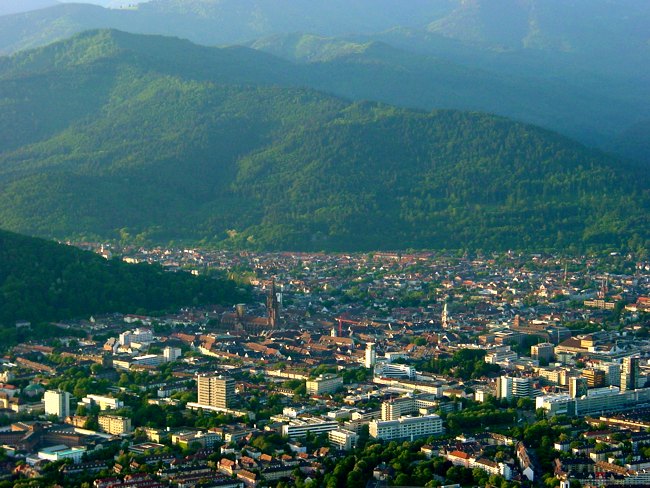




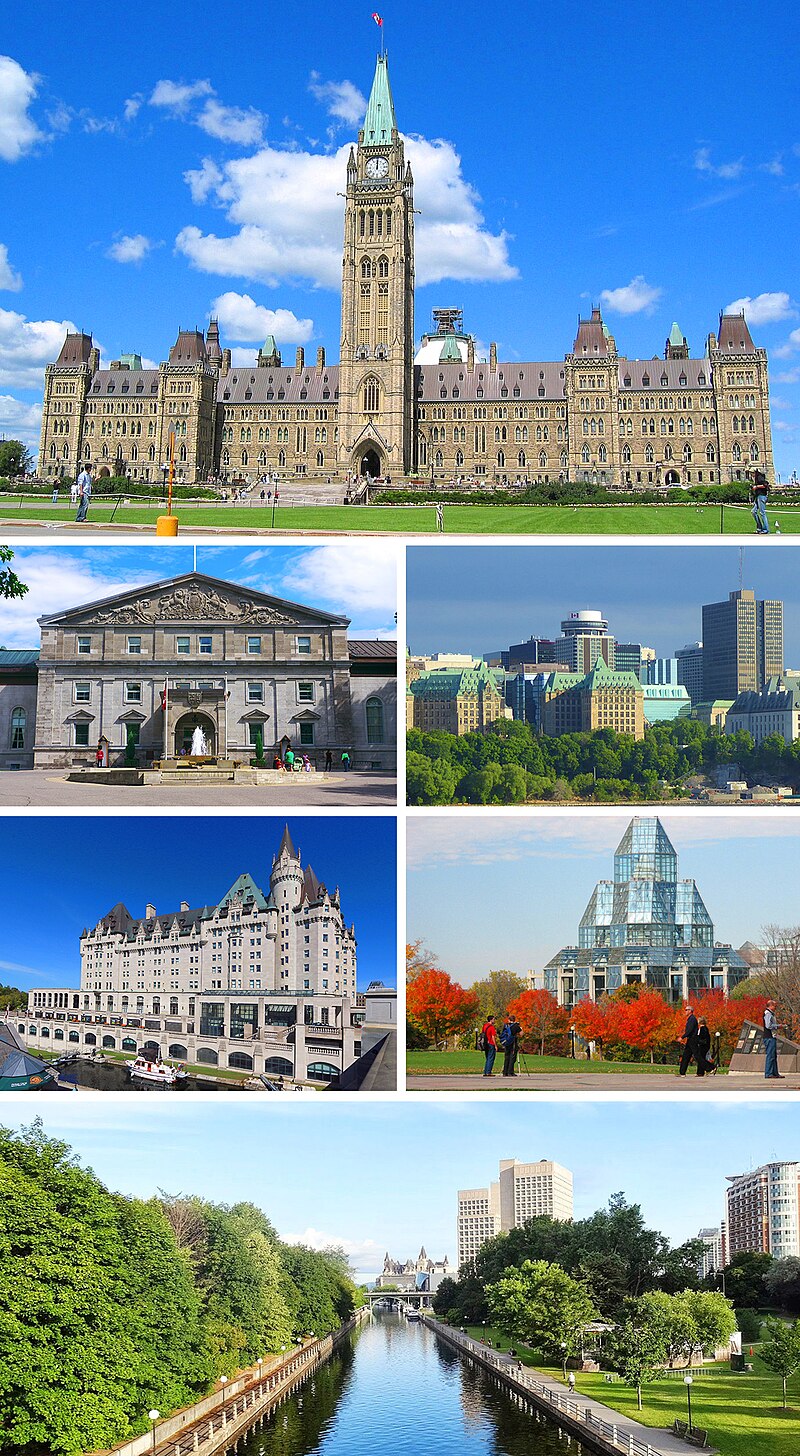
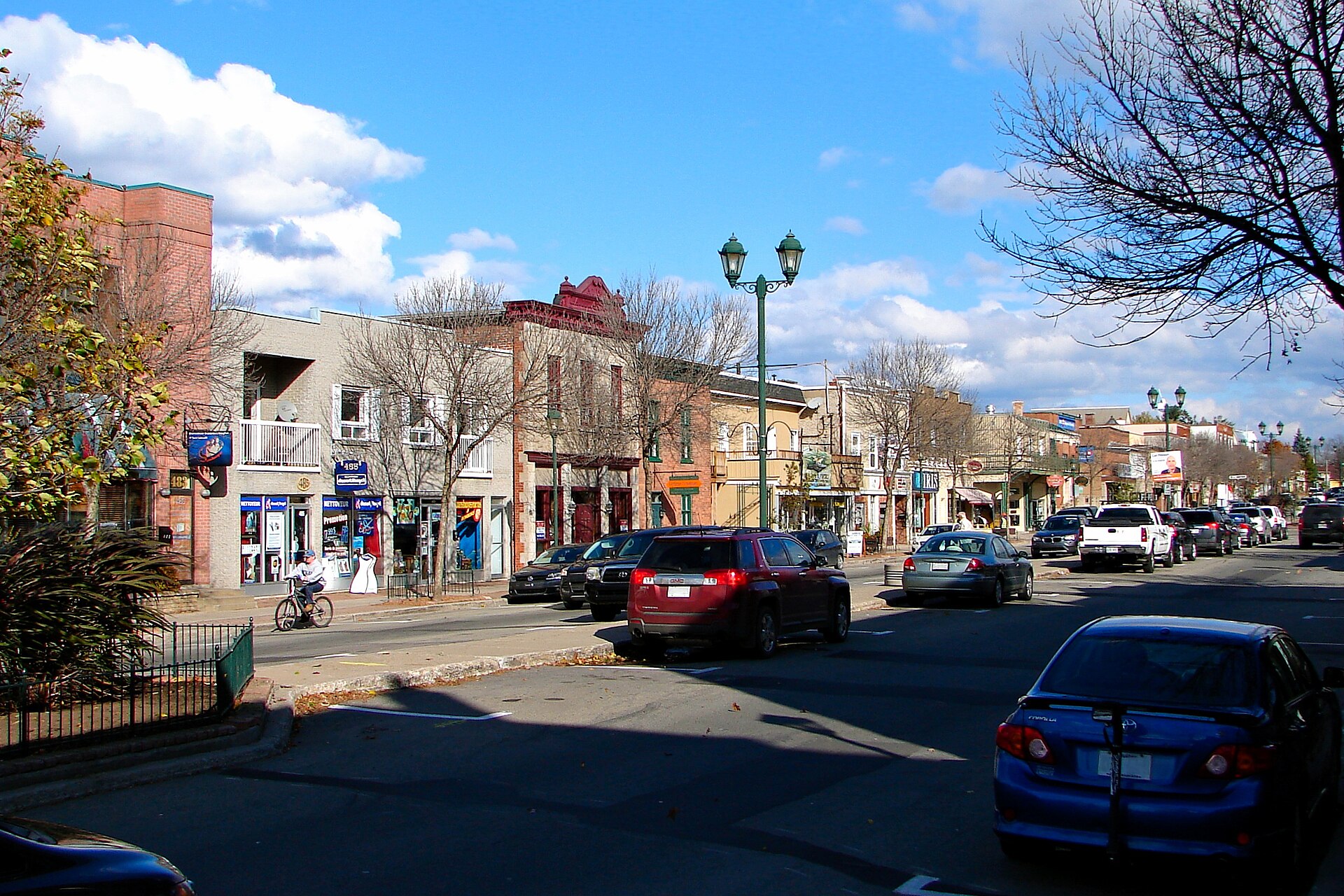



Certainly the same could be said for Heidi‘s travels in Sri Lanka and Vietnam.
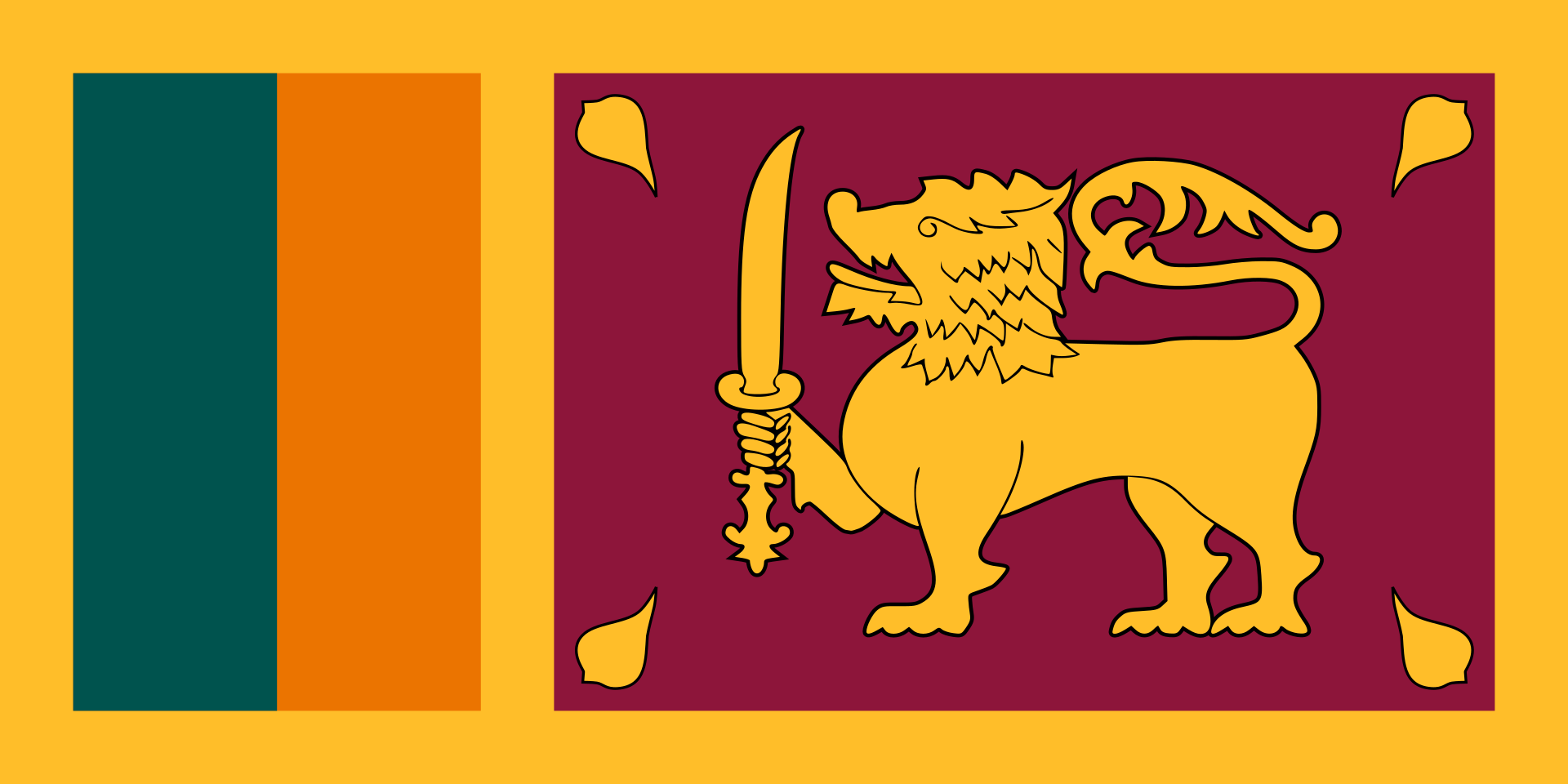
The Sri Lankan capital of Colombo does not at all resemble Kandy or Sigiriya, Ella or Mirissa, Unawatuna or Galle.

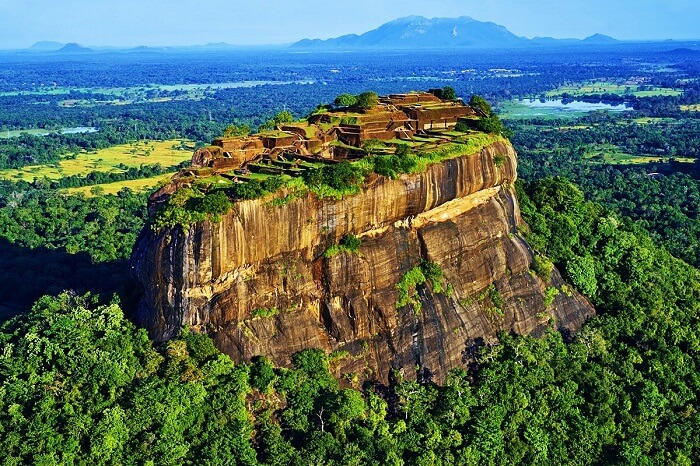


Heidi did not like Colombo in the comparison.
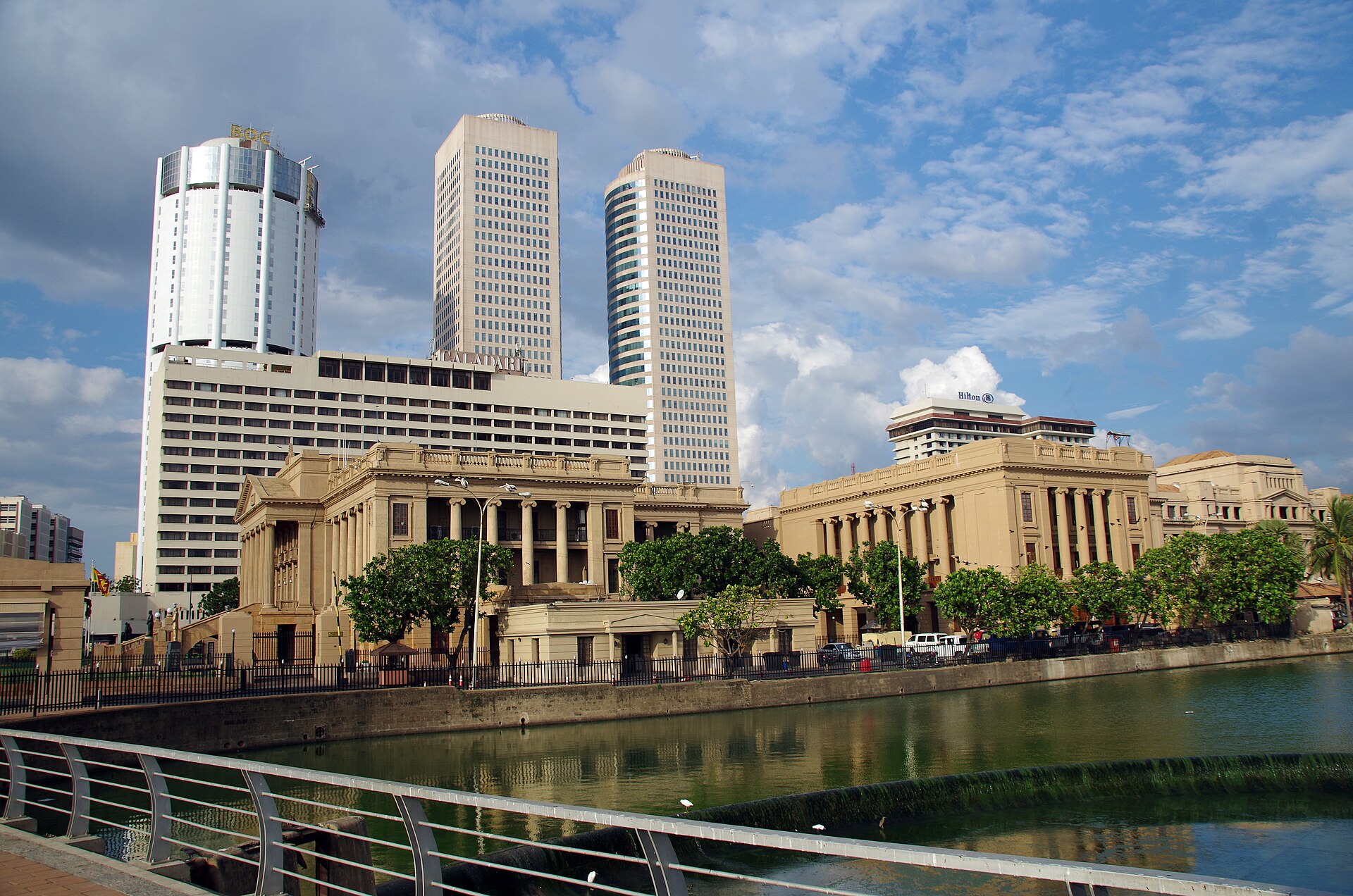
She spent four days in the Vietnamese capital and would later visit Halong Bay and the mountains of Sapa and would later drive down the coast of the country down to Ninh Binh.
Would her feelings toward Hanoi suffer by comparison with other Vietnamese places as Colombo had when compared with other Sri Lankan settings?

Ha Long City, Vietnam, Thursday 21 March 2019
For a lot of people, Halong Bay is a place you need to visit at least once.
For some, it’s a place that’s unheard of and an unfamiliar destination talked about because of its natural beauty or maybe because of its world heritage title.

Halong Bay as known as an UNESCO World Heritage Site is famous because its stunning limestone mountains raising up from emerald waters that formed from thousand years ago.
You also can have a chance to explore amazing caves as well as the culture of Ha Long.
Halong Bay is recognized as a UNESCO World Heritage Site twice and a very popular tourist destination in the northeast part of Vietnam, under the management of both Quang Ninh and Hai Phong provinces.

The whole of Halong Bay or sometimes referred to as the Gulf of Tonkin has an area of around 1,500 km2, which contains approximately 1,969 islands and islets made from karst limestone towering like skyscrapers throughout the bay, formed through millions of years.
A long history and tremendous values lie within Halong magnificent limestone mountains.
Normal limestone mountains are usually found on the ground, however, Halong Bay’s limestones are raised from above the water.
It has taken 500 million years to form Halong Bay’s 2,000 limestone islands of today.
Human beings have inhabited the area for centuries but made no damage to the heritage.
Their appearance, indeed, has added unique cultural values to Halong Bay.

From world leaders, celebrities, fashion icons, to Hollywood directors, Halong Bay has probably welcomed the world’s most influential leaders.
The list includes
- Brad Pitt & Angelina Jolie
- The late celebrity chef Anthony Bourdain
- Numerous presidents and prime ministers
- Facebook’s Founder/CEO Mark Zuckerberg and his wife Priscilla Chan
- Hollywood directors and actors, and many others.





Dominated by the Red River basin and the Gulf of Tonkin, fertile Northeast Vietnam is the cradle of Vietnamese civilization.
Much of Vietnamese history, not all of it happy, was made here.
In particular, Vietnam had less than cordial relations with the Chinese, who invaded in the 2nd century BC and stayed for about 1,000 years.
Indeed, the last invasion took place as recently as 1979.

On a more positive note, this part of Vietnam is showing some real economic potential.
Much investor interest centres on Haiphong, Vietnam’s largest seaport.

However, it is the scenery – not history, politics and economics – which is the major tourist drawcard here.
In particular, the spectacular coastline of Halong Bay, Bai Tu Long Bay and Cat Ba Island offer some of nature’s most bizarre geologic displays.


Add to that such interesting side attractions as Ba Be Lake, the mountains around Cao Bang plus the region’s accessibility to China, so it is not hard to see why Vietnam’s northeast magnet for visitors.
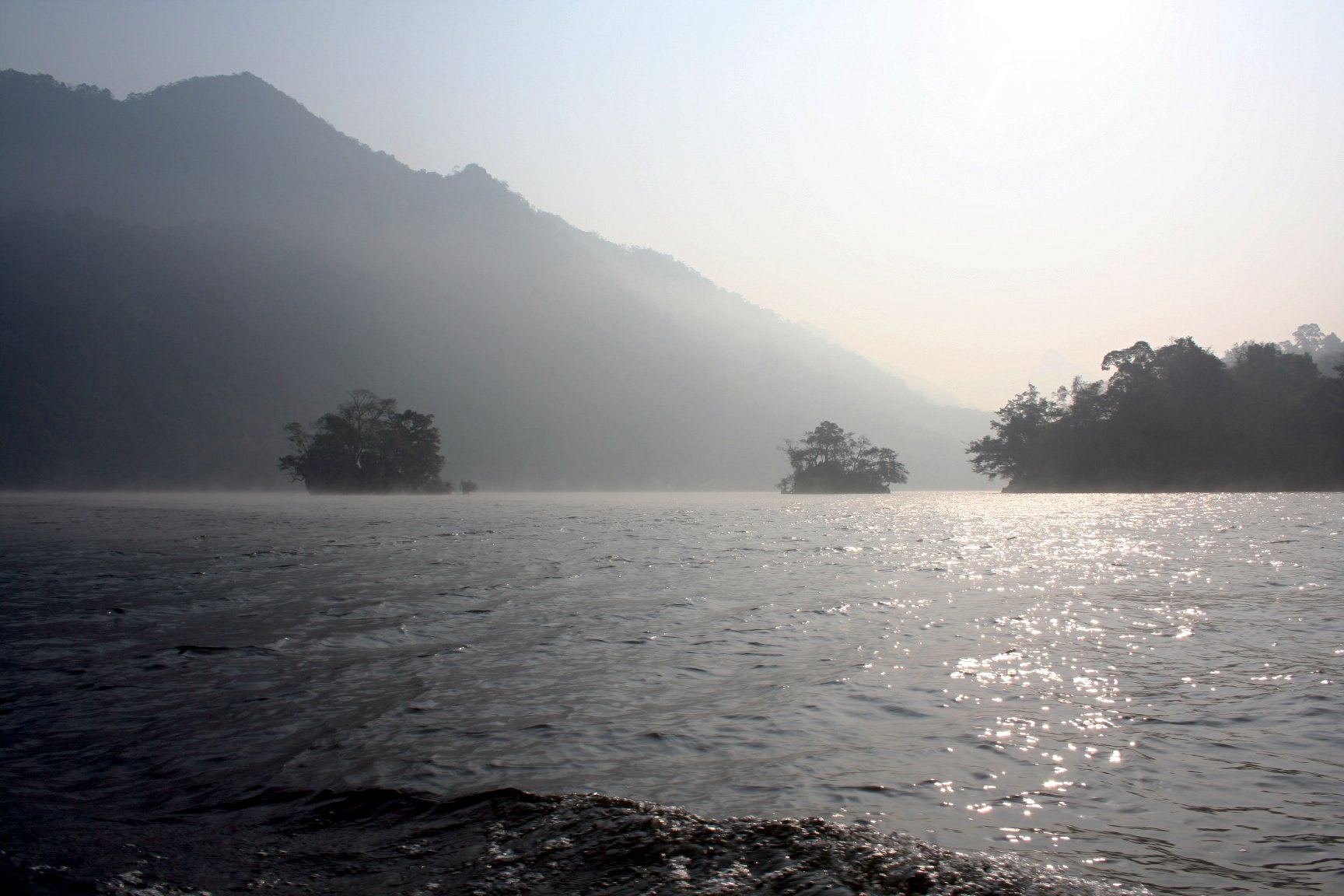

Although largely devoid of beaches, Vietnam’s northern coast boasts one of the country’s foremost attractions and one of the most vaunted spots in all of Southeast Asia – the mystical scenery of Ha Long Bay, where jagged emerald islands jut out of the sea in their thousands.
Heading in by boat, the visitor approaches wave after wave of hidden coves, needle-sharp ridges and cliffs of ribbed limestone.
The waters here are patrolled by squadrons of tourist junks, on which you will be able to spenda night at sea.

Cat Ba Island also makes a great base from which to explore Ha Long Bay, while Bai Tu Long Bay has the same dramatic views without the fleets of tourist boats.


You will find similar karst scenery inland around the small city of Ninh Binh, while other notable sights in the area are the colonial buildings of Haiphong, the ancient Ho Citadel and the monstrous caves around Phong Nha.

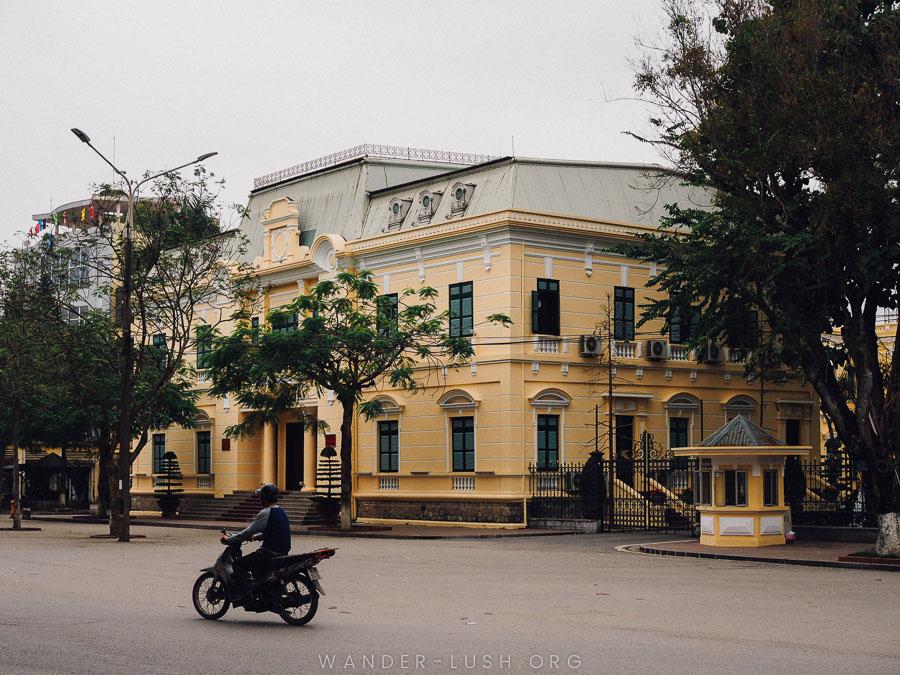
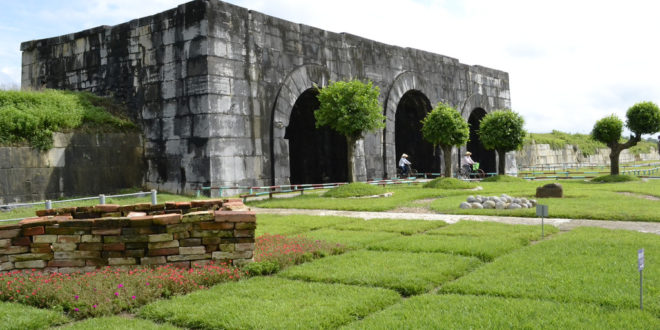

You can get from Hanoi to Halong Bay in six ways: motorbike, coach, shuttle bus, private car, train, helicopter, and waterway transport (in Hai Phong).
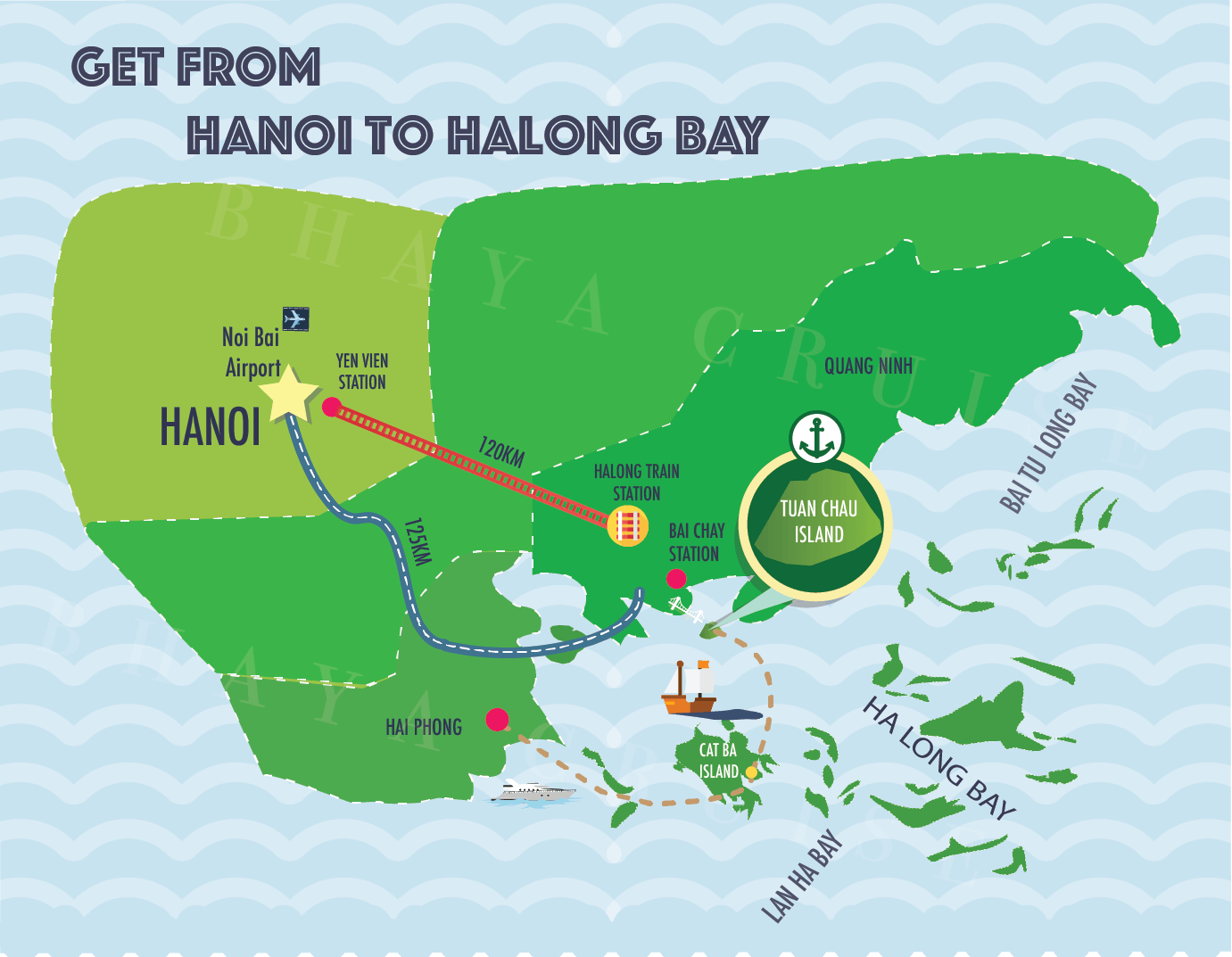
Halong Bay is located in Quang Ninh Province.
Once upon a time it took four hours to get from Hanoi to Halong, so travellers instead travelled to Halong Bay right after landing in the Noi Bai airport.
Noi Bai International Airport- 30 km (19 miles) away from Hanoi.
This is also the closest and biggest international airport to Halong Bay.
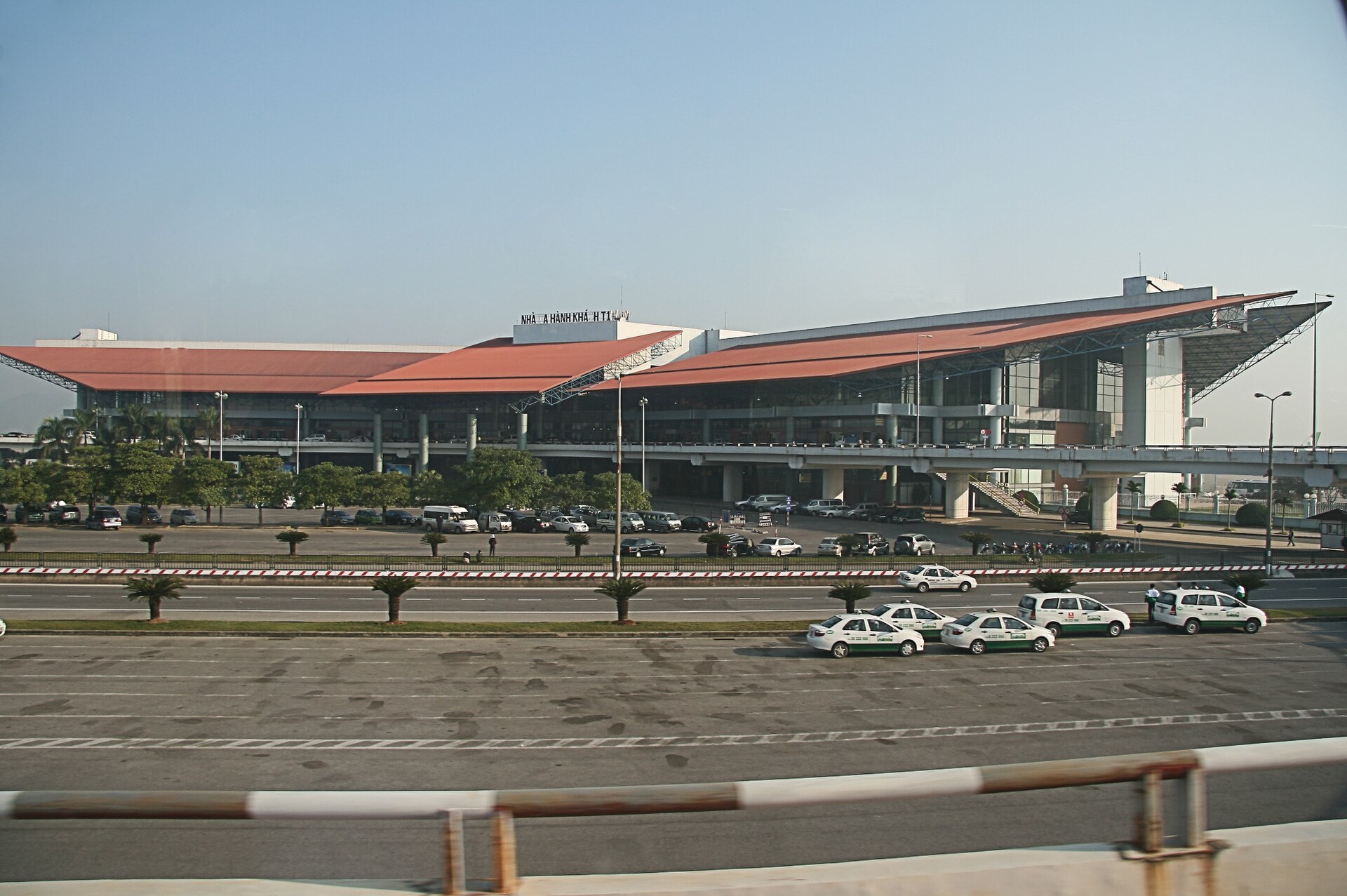
Most travelers spend a day to explore the capital and travel to Halong Bay the next day.
However, after the new highway came into operation at the beginning of 2019, the distance between Hanoi and Halong was shortened from 175km to 125km.
The travelling time from the capital to Halong was reduced from four hours to two hours by car.
So travellers who have limited time still can visit Ha Long Bay from Hanoi and be back in the capital the same day.
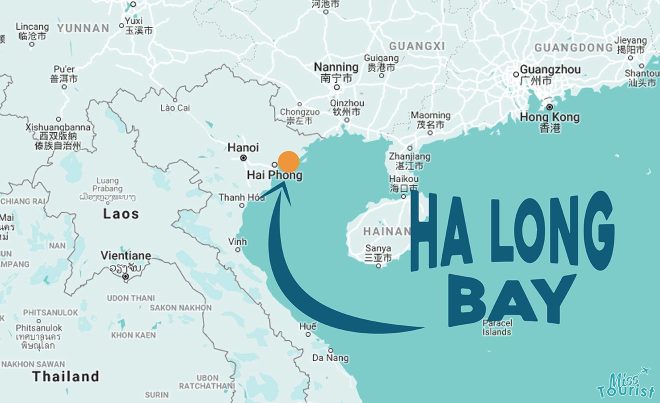
For adventurous budget travelers who wish to explore the local life and scenery, there is no better way than driving a motorbike from Hanoi to Halong, but Heidi‘s Hanoi hostel organized a shuttle bus between Hanoi and Halong.
Later on, Heidi, being an adventurous budget traveller would rent a motorbike to travel down the coast.
But not yet.
Not yet.
It is not hard to rent a motorbike in Hanoi, even if you are a foreign visitor.
You can find many rental stores in the Old Quarter (or the West Lake area) with English-speaking staff and owners.
Depending on how long your stay in Vietnam, you can choose among monthly, weekly, and daily rental services.
These rental shops provide various types of automatic, semi-automatic, manual, and touring bikes with such brand names as Honda, Yamaha, Attila, Air blade, etc.
To rent a bike, you need to pay for the deposit and rent fees.
Generally, the rental shop will request a copy of your passport.
If you are required to provide your original document, try to negotiate because you may need your passport for other occasions.
Driving a motorbike is obviously a cheap and convenient option for free spirits who love to explore Vietnam more closely.
The daily rental and gasoline cost are quite cheap, plus you can start your journey whenever you want.
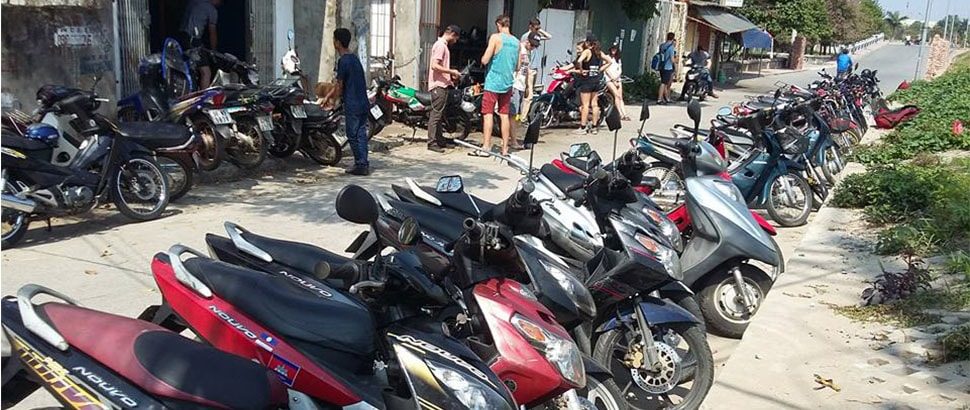
On the other hand, it is quite dangerous to engage in traffic in Vietnam so make sure you are willing to take the risk and have good driving skills.

Plus, it is easy to get lost, especially if this is your first trip in Vietnam.
Even if you pay attention to the weather forecast before your trip, it can rain heavily all of a sudden or your bike may break down along the way.
Last but not least, a three-hour drive can be time-consuming and tiring.
If you insist on this option, choose a good motorbike and protection gear, a map and phone that can connect to the Internet to Google Maps your way.

It is best to go with a friend so that you have someone to rely on in case of emergency.
And remember that as a foreign visitor, you have no Vietnamese driving license so actually it is not legal to drive a motorbike around.
Generally, local traffic officers do not make things hard for you but you need to wear a helmet and follow traffic signals to avoid any trouble.
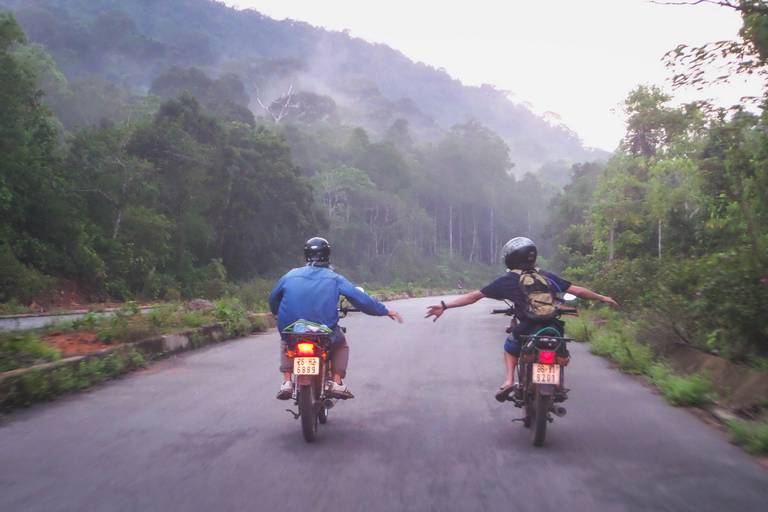
For those who travel on a budget, coach travel is an attractive option as it costs as low as 100,000 VND (less than $5).
This means of transport usually has a lot of seats (the 45-seat type is quite common).
It takes only three hours to travel from Hanoi to Halong Bay by bus, thanks to the new Highway.
Sometimes it takes longer since local buses have to go around to bus stops to pick their customers.
If you want a premium to luxury bus (7-9 seats, air-conditioner, wifi…), there are also variety of options for you to choose from.
Of course, the price could be double or triple compared with a budget bus.

So, how to go from Hanoi to Halong Bay by bus?
First you need to choose the route that stops closest to where your Halong cruise company is at port.
Ask the cruise company that you book with.
You can book directly at the bus station.
You can call the direct number of Hanoi representative office in My Dinh Station to book a ticket or go to My Dinh Bus Station where you will see the ticket box of KumHo Viet Thanh which lies between ticket box number 8 and 9 right at the entrance.
The staff don’t speak English, so prepare yourself with body language and some simple Vietnamese phrases.

To book a ticket online, go to https://vexere.com/en-US, put Hanoi as your location and Halong for the destination.
There are fewer choice of bus providers online comparing to number of providers in the station.
Many providers still prefer in-person selling.

Depending on where your cruise ports, you should pick the nearest bus stop to the port.
Most buses will stop at the city centre in Ha Long City then you will have to take a taxi to the port.
If you choose to go with premium bus or limousine options, they will have more drop off stops that closer to the port locations.

Select your date of departure and you will see a long list with details of coach provider, departure time, coach station, seat available, and ticket price.
After clicking view seat, proceed with booking your ticket
The site is available in both Vietnamese and English so you can navigate it with ease.
If you don’t want to worry about all the hassle of buying ticket and take extra transport to go between station and port, the shuttle bus option might be a better choice.
After getting off the bus at the station in Halong Bay, you need to catch a taxi, or a “xe om” (a kind of motorbike taxi), or simply order Grab via your smartphone.
It will cost you around VND 90,000 for taxi and VND 50,000 – 70,000 (~ $3/person) for a “xe om”.

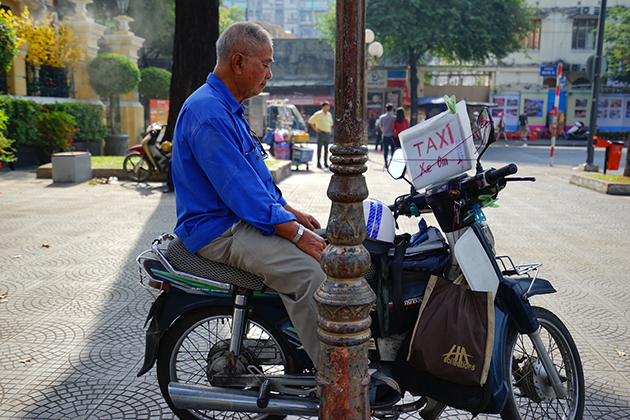
This rate is for those who get off at Bai Chay station, 5 km from Tuan Chau Gate (Cruise Port).
If you can speak with the coach driver, you should tell him to drop you off at Tuan Chau Gate.
From here it takes you half of the taxi rate.

Yes, the local bus option is really cheap and it is quite easy to find coach providers but it has many disadvantages.
The staff at the coach station don’t speak English, so prepare yourself to communicate in body language and some simple Vietnamese phrases, or else you may miss your stop.
Coach stations are not located near the Old Quarter or West Lake where many visitors stay so you need to catch a taxi, city bus, xe om, or Grab (like Uber) to the station.


Coaches often depart early so if you sleep in, you will have to wait for the next coach in a very crowded and noisy coach station.
The travelling time is long, up to 3.5 hours.
And the bus will go around to fill up customers along the road.
However, if you still want to go with this option, do your research or maybe go with premium coach providers.

When booking a cruise, you can ask the agent or a Halong Bay cruise company for a shuttle bus service.
They normally will offer combo package, which is cheaper than if you booked them separately.
Sometimes, cruise companies will run special promotions and offer free transfers if you book a cruise with them.

The cost will vary among different companies and different types of bus.
But the normal price will be around VND 250-500 ($10-20) for a one-way ticket.
In general, it is easy and convenient, because you don’t have to worry about pick-up and drop-off points.
The bus will pick you at your hotel upon request and take you to the cruise center where your cruise ship docks.
After your Halong Bay trip, the shuttle bus will wait outside the cruise center and take you back to Hanoi.

Previously, it took about 3.5 hours to get to Halong Bay as the travelling time has now been reduced to 2.5 hours with the opening of the new Hai Phong – Hanoi Highway since 15 October 2018.
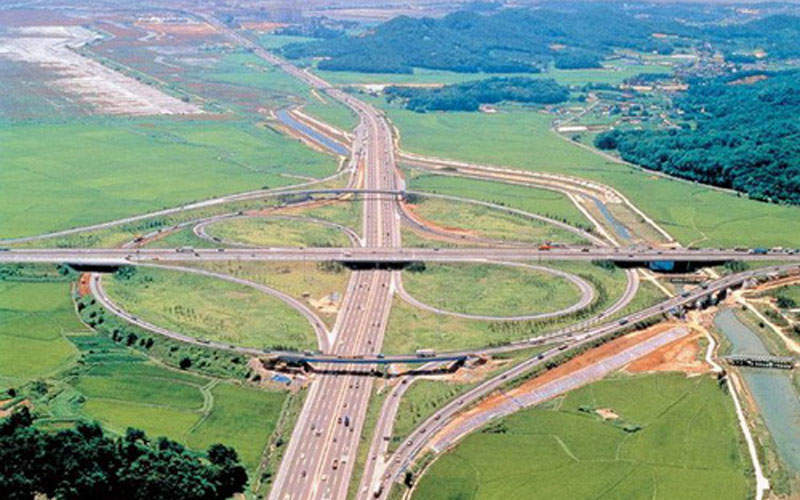
For example, the Bhaya Shuttle Bus departs daily from central Hanoi to Tuan Chau Marina, Halong Bay.
The bus will pick you up at your hotel in Central Hanoi and drop you off at Tuan Chau International Passenger Port.
– Distance (Hanoi – Halong Bay): 125 km
– Rest stop: Two hours after departure, the stop normally lasts around 15 to 20 minutes.
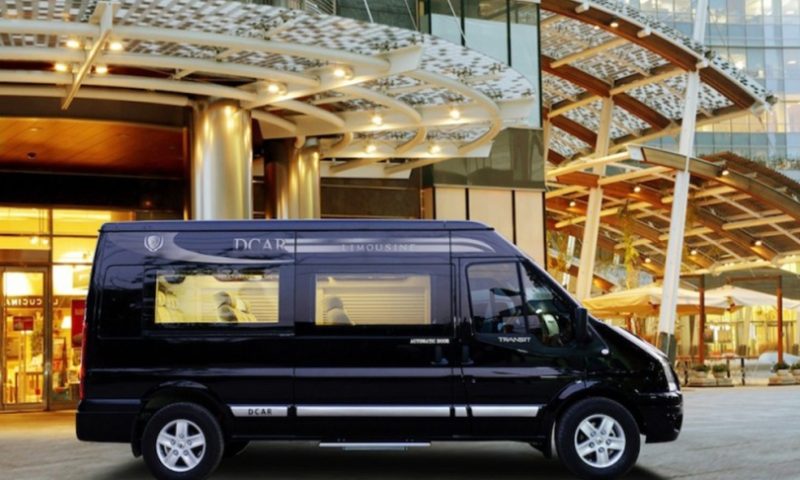
Shuttle buses offer more comfort and convenience than local coaches with normally 7-16 seats only.
The bus goes straight to Halong City and might have only a break within short time (~15 mins).
It will not welcome new customers along the way.
Besides air-conditioning and Wi-Fi, water bottles are also offered on the bus.
Drivers can usually communicate in basic English so this can reduce the language barrier.
You won’t have to worry about buying bus tickets or taking an extra vehicle from the bus station to the port.
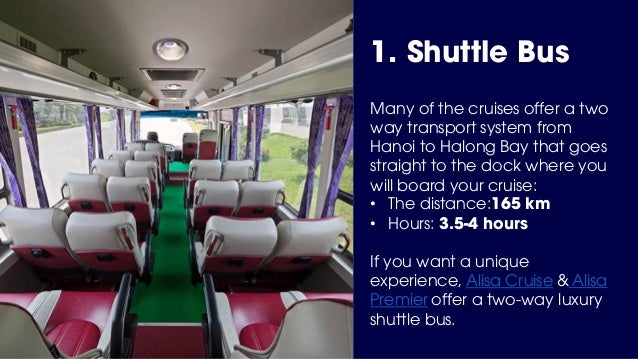
If you do not want to share the trip from Hanoi to Halong Bay with strangers or wish to be totally flexible of your schedule, a private car is your best option.
Whether you are a busy businessman on holiday or on a vacation with your family, a private transfer will ensure the best privacy for you.
At a cost, of course: about VND 1,500,000 – 5,000,000 ($70-100) for a round trip.
You can ask your tour or cruise operator to arrange this service for you or simply book a taxi.

If comfort, flexibility, and privacy really matter to you, then yes, you should consider a private transfer.
If you want to take a taxi to Halong Bay, make sure to confirm the total cost with the taxi driver.
They may charge you more when they take a longer route than necessary.
Or check with your cruise providers, they might have private car pick up at airport services packaged with their cruise tour.

Seaplane is the only option if you want to fly from Hanoi to Halong Bay.
This is also the fastest way to travel from Halong and also the most expensive way.
It takes only 45 minutes to travel from Hanoi to Halong by seaplane.
Travelling by seaplane you will get an amazing view of Halong Bay from above which a normal transfer or cruise cannot provide.
To book a seaplane flight, you can contact directly with the company that operates the seaplane.
Hai Au Aviation is the only service provider in Halong Bay with the cost of around $400/person/round trip.
Bhaya Cruises also offers a combo package with seaplane transfer and cruise at a very affordable price.
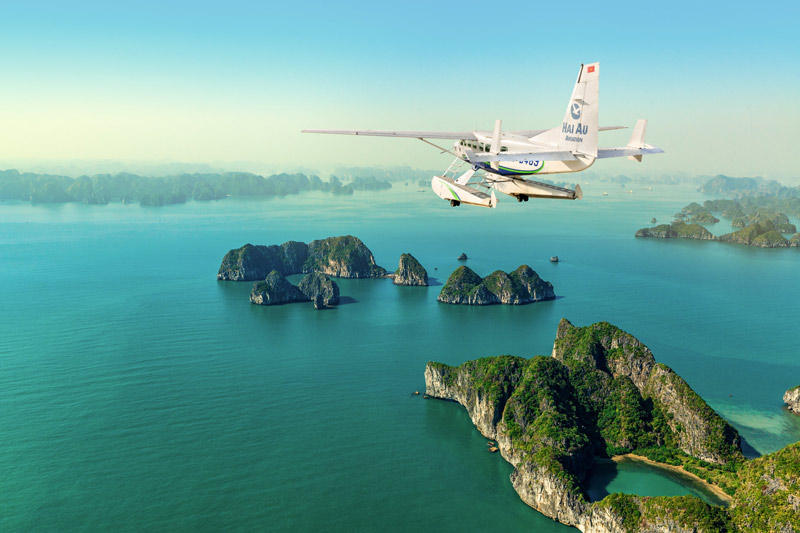
There is a only one train that goes directly from Hanoi to Halong Bay with the ticket fare about $4.5/person
The train departs from Yen Vien Station in Hanoi for Halong City Station at 04:55 am and returns at 13:50 every day.
For those who only have a day to visit Halong, the long travelling time of six hours by train is definitely not a good choice.
From Halong Station, you will need to catch a taxi to get to the city centre so that will add to the cost.
On the other hand, if you do not mind the long travelling hours and love the sound of the train whistle, this safe means of transport can offer you a lovely view of scenery along the way.
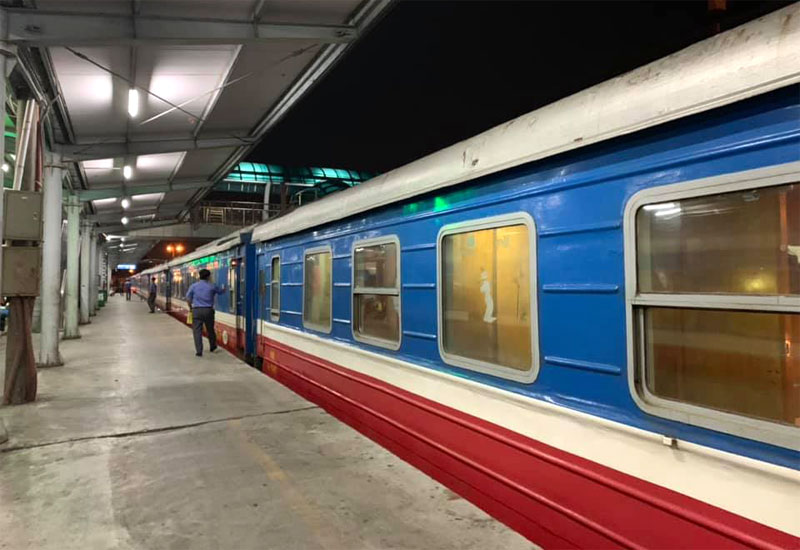
Go to the home page of Vietnam Railway at https://dsvn.vn/ and choose the language at the top right of the page.

After that, enter the following information:
– From: For departure point, type Yen Vien and select the Vietnamese name Yên Viên that appear on the list.
(If you do not see the word Yên Viên on the list, an error that happens from time to time, just enter and the system will automatically correct this mistake).
– To: Type the destination as Ha Long and select the Vietnamese name Hạ Long.
– Other information: departure and return dates, your choice of one way or return trip.
After this, click on ‘Buy ticket” to proceed to the next page of booking information (including payment details)
Once you confirm your ticket ordering information, you will get the order number and the amount of money you have to pay.
Collect your ticket when you arrive at the train station counter.

Every Hanoi tour agent offers Ha Long Bay excursions, which work out easier – and usually cheaper – than doing the same thing yourself.
There are a wide variety of trips available, including day-tours, though since the bay is a 6hr round trip from Hanoi these can feel very rushed.
Most opt for a two-day, one-night tour, with the night spent at sea – this can be a delightful experience.
Others go for a three-day, two-night trip, with the second night spent on wonderful Cat Ba Island.
There’s also the option of getting to Cat Ba by public transport.
You’ll miss out on a night at sea and a few caves, but from your hydrofoil seat you’ll see the bay on the way (albeit in fast-forward).
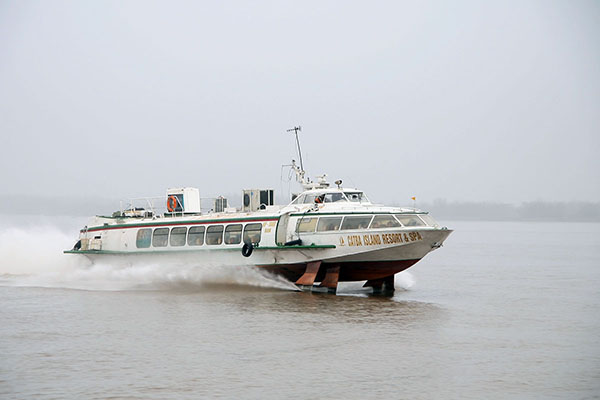
Heidi took a shuttle bus and I can only surmise it took the most direct route from Hanoi to Ha Long City – a two-hour, 153-kilometre express route with tolls.
This would not have been my choice, for I like taking trains and boats and I would have, time and money permitting, taken the train to Haiphong, a ferry to Cat Ba Island and another to Ha Long.
As Heidi did not linger in Haiphong, neither shall we.
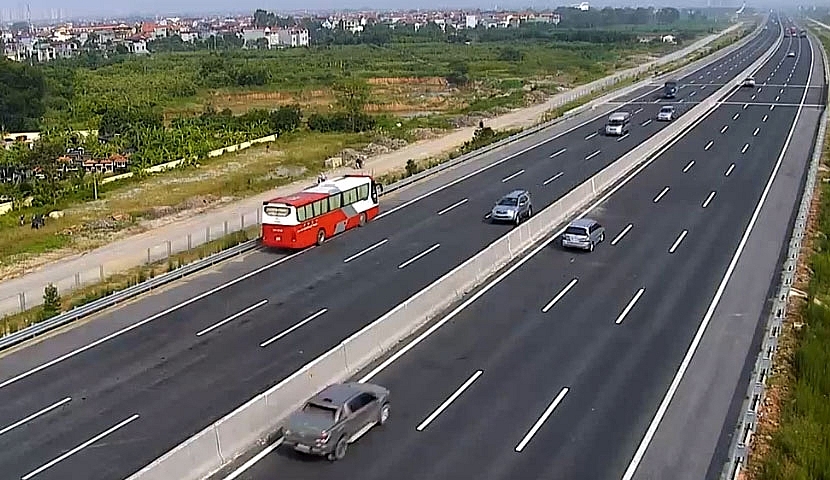
Twenty years ago, Halong City was a sorry and dismal city, despite being the capital of Quang Ninh Province.
This once peaceful outpost was by 1999 a pleasure den for package tourists (both foreign and domestic, with a large following of border-hopping Chinese.
Halong City was a sleazy attempt at replicating Thailand’s Pattaya, a sin city filled with signs advertising “Thai Massage” as slim cover for the prostituton market.
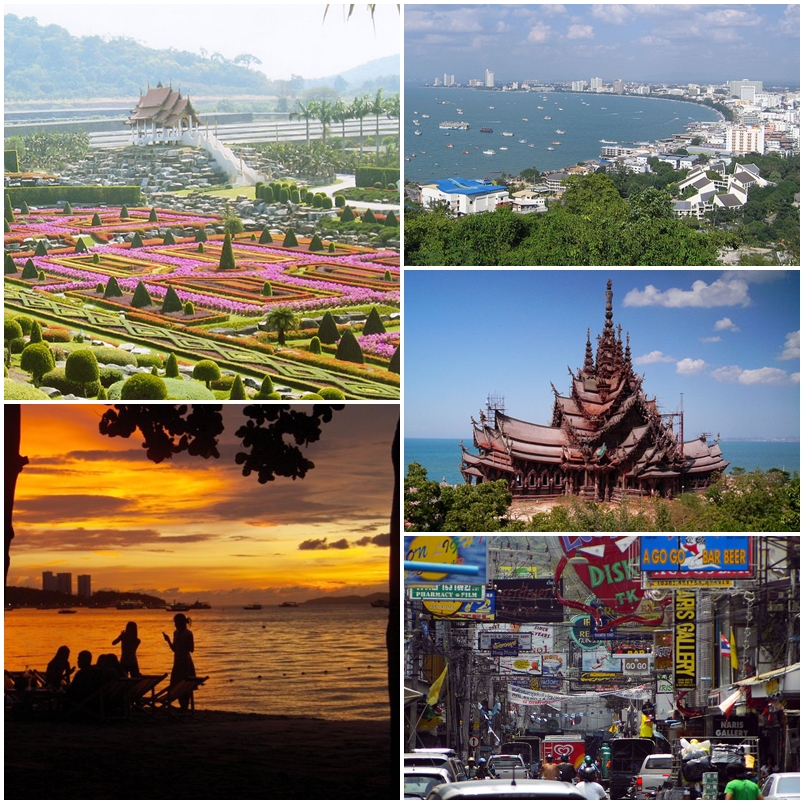
Halong was once a place where the visitor was thankful for arriving on a group tour, for a cartel of persistent young Mafia thugs controlled the flow of local tourist dollars, making the attempt to get a fair price on a self-booked boat into Halong Bay a real nightmare.
At least if you were booked on a tour from Hanoi, you were spared the hassles of spending the night in a Purgatory that felt like the end of the world.
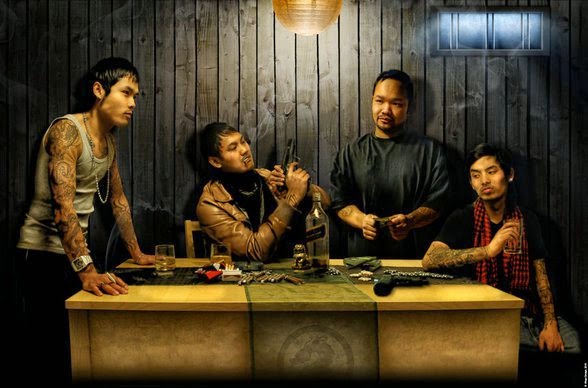
Halong City was, and is, bisected by a bay, and for travellers the most important district has remained Bai Chay on the western side of the city.
Accommodation can be found on both sides of the Bay, but Bai Chay is more scenic, closer to Hanoi, and much better endowed with hotels and restaurants, and is where the majority of tourist boats are moored.

A short ferry ride across the Bay takes you to the Hon Gai district, the main port and coal exporter (a major product of this province), which means this area is dirty, but dirty is honest and genuine and far more a true picture of Vietnam than a row of signs touting massages.
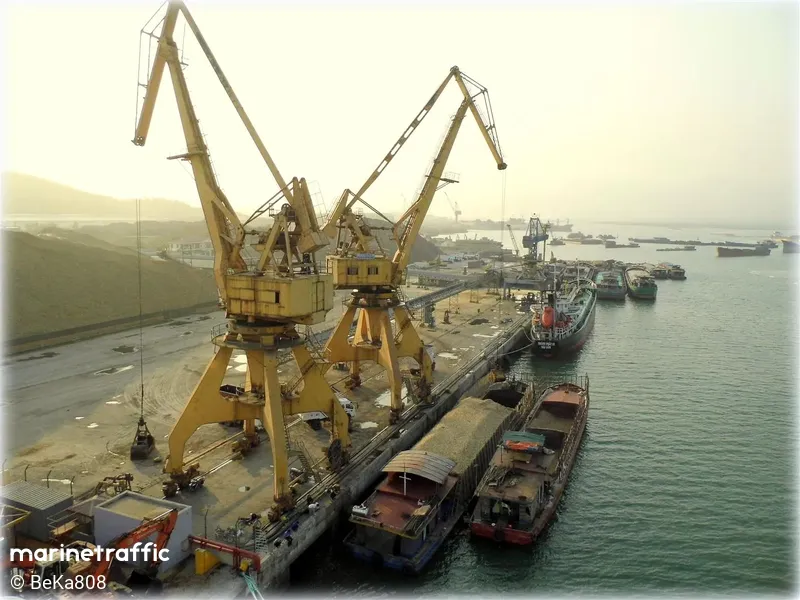
In 1999, the shore around Halong City was basically mud and rock – a problem the authorities have tried to correct.
A Taiwanese company had a contract to build a beach in Bai Chay with imported sand.
In ’99, the beaches were not at all attractive for swimming, but it was common practice to take a swim during a boat trip.
The boats would take you to remote coves with clear water, but only minimal sand.
One never swam alone, for it was always wise to have someone trustworthy to watch your valuables whilst you were cavorting in the water.
By ’99, the promenade had gone through a major facelift and was attractive enough, but generally the consensus was that Halong City was dreadful, full of new hotels and restaurants with depressively repetitive food.
The promenade fooled no one.
It failed as a fake French Riviera and the boat trips were run by bandits and grifters.

Twenty years later when Heidi visited Ha Long City, it was clear that Vietnam still had grand plans for the place.
South-facing, with Ha Long Bay raising its limestone fingers across the sea, the place has potential, but in 2019 as in 1999 development has remained haphazard.
The vast majority of Western tourists hitting the Bay do so on express service from Hanoi, heading straight to Tuan Chau Island, the new tourist wharf 10 km west of the city where all boats for Ha Long Bay now embark.

Ha Long City is an amalgam of easterly Hong Gai and westerly Bai Chay, two town districts with their own distinct characters, merged in 1994 and lassoed together by a bridge.
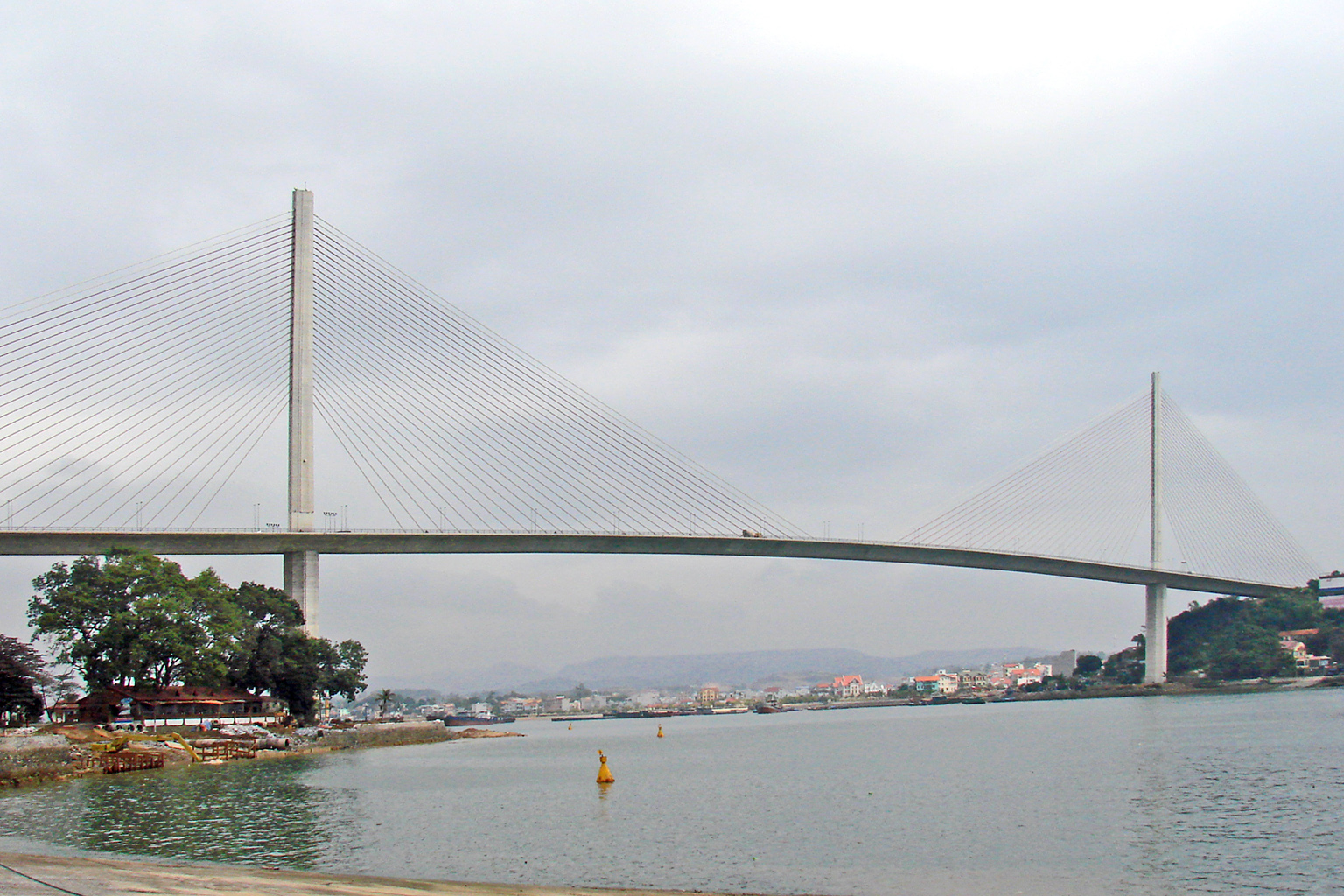
For the moment, locals still use the old names – as do ferry services, buses and so on – as a useful way to distinguish between the two areas.
A recent development has seen a reversible cable car built across the narrow Cua Luc channel.
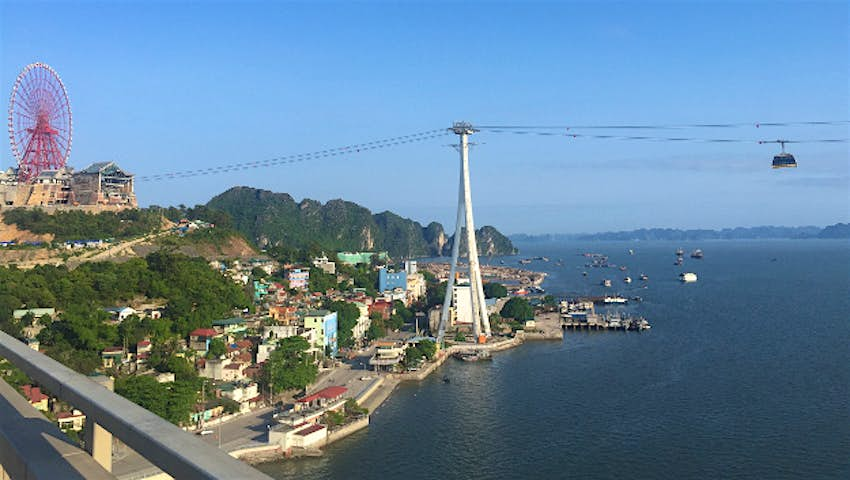
However, the arrival on the Hong Gai side is an amusement complex on the top of Ba Deo Mount.
There is a sense of limbo here, a kind of a Hotel California vibe where “you can check out any time you like but you can never leave“, for this is where local holidaymakers are content to ride the Ferris wheel and return to Bai Chay – the hub of tourist activity and accommodation.
Bai Chay boasts several huge resort-style hotels – packed out by domestic and Chinese tourists in peak season – and a $400 million amusement park.
For those in search of more local colour or who are put off by Bai Chay’s overwhelming devotion to tourism, Hong Gai provides only basic tourist facilities but has a more bustling, workaday atmosphere.
It is from here that you can catch a ferry to Quan Lan Island in Bai Tu Long Bay.
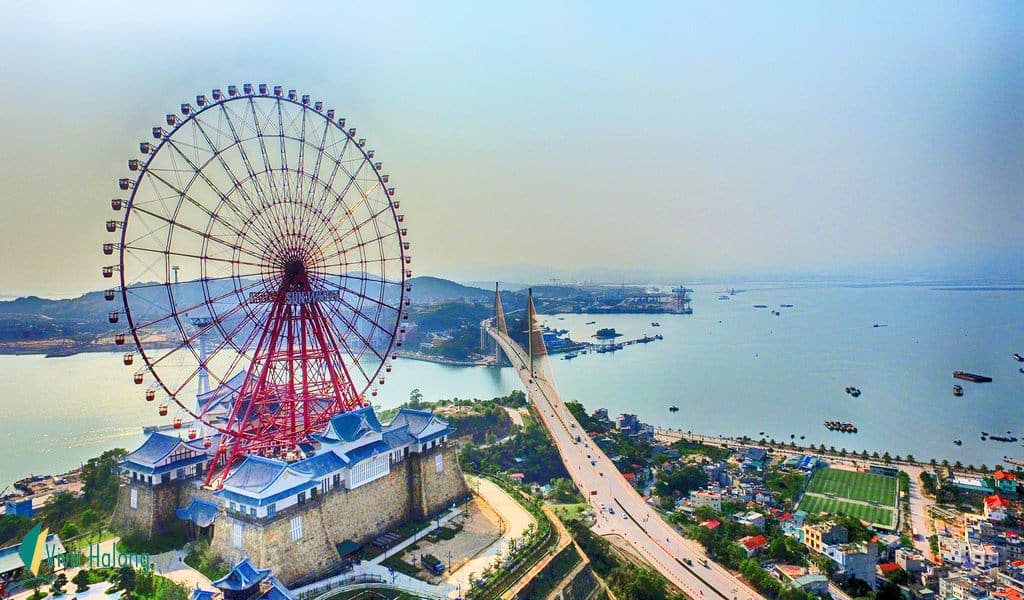
Neon signs and flashing fairy lights blaze out at night along the Bai Chay waterfront, acting like a magnet to foreign visitors and advertising north Vietnam’s most developed resort, with shoulder-to-shoulder hotels and a picturesque backdrop of wooded hills.
While Bai Chay is swamped in summer with local holidaymakers and tourists from China, out of season it is a pretty sleepy place and decidedly less sleazy.

Apart from strolling the seafront boulevard and taking a quick look at its very indifferent beach, Bai Chay has nothing to distract you from the main business of touring Ha Long Bay.
Harbor Bay is typical of the new projects in Ha Long, which feature rows of European-style shophouses.
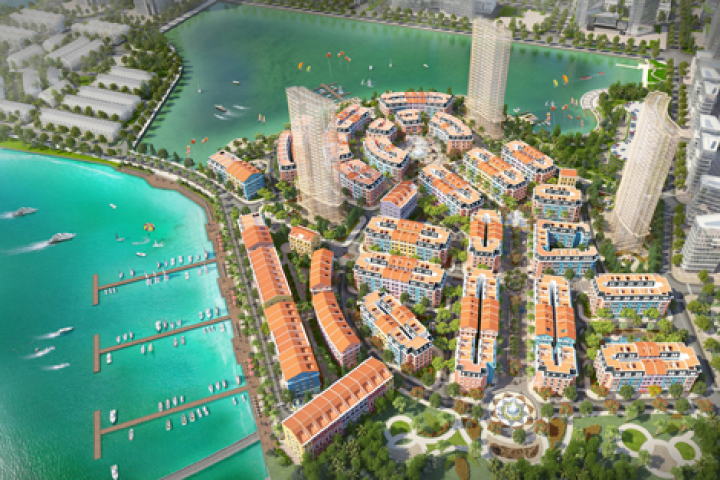
Next to Harbor Bay is Halong Marina Square.
It looks like it is finished, but no one is there.
This area is on reclaimed land, and here is the manmade Bai Chay Beach.

Near the beach is Little Vietnam, which is a low-rise residential area with streets themed like Hoi An and Old Hanoi.
There are some family-run hotels here, and in better times it looks like it would be a good place to stay.

At the large roundabout is the Vietnam Heritage and World Natural Heritage ceramic mural – Vietnam’s largest ceramic mural.

The next big development here is the Sun Plaza Grand World new urban area.
This looks similar to Harbor Bay with its rows of colourful shop houses.
One section is called Shophouse Europe, which features Euro-themed shopfronts with statues of European dudes at prominent intersections.
The city has built far too many new shop houses and I don’t know how they expect to fill them all.

A bike lock on locked doors appeared to be the symbol of these new projects.

Walking further along Ha Long road, this section of Bai Chay feels more lived in.
The central point is Muong Thanh Hotel.

Near here is Vuon Dao Street, which appears to be the most established and lived in street with hotels.
Here you will find the more familiar Vietnamese-style skinny buildings.
It’s on this side of the city where the tour boats depart for Ha Long Bay.
Rows of moored boats indicate how bad things became in the years of the virus.


In the south of the city there is the Bài Thơ (‘Poem’) Mountain with its almost vertical seaward face, which was widely used by some historically famous local poets.
The limestone peak is rich in bio-diversity and offers attractive views of the bay.

There are also places of interest such as:
- Cửa Vận Fishing Village

- Hoàng Gia Park
- Hạ Long Market
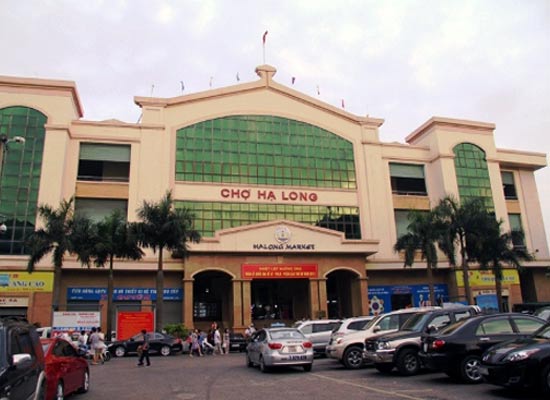
- Bãi Cháy Trading Center

- Quảng Ninh Museum
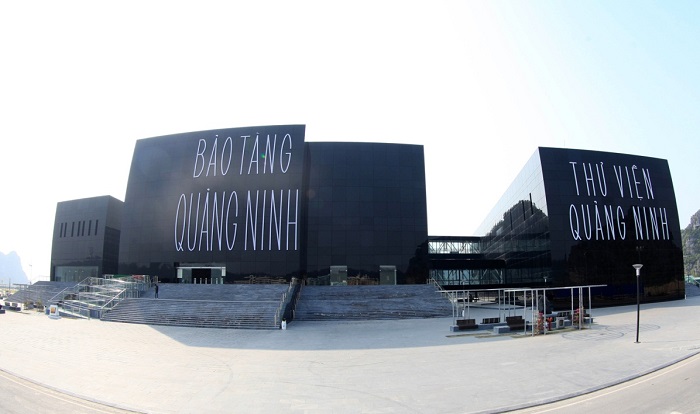
- Vietnam-Japan Cultural House
- Children’s Cultural House

The city has an active Roman Catholic church in its eastern part, Hòn Gai, on the hill near the main post office, which hosts masses every Sunday evening and on Christian holidays.

Vietnamese and cruise-ship tourists flock to the cable car that spans the Cua Luc inlet, offering dramatic views over Halong Bay.
The views are particularly impressive at dusk, though the cabins can get uncomfortably cramped at peak times.
Your ticket includes a ride on the Sun Ferris Wheel on the far Ba Deo Hill and there are lots of other less-interesting attractions.
Families might be interested in the rollercoasters of Dragon Park and the seasonal Typhoon Water Park on the Bay Chay side, but check which rides are open before buying a ticket.
Admission prices for these sights fluctuate seasonally.
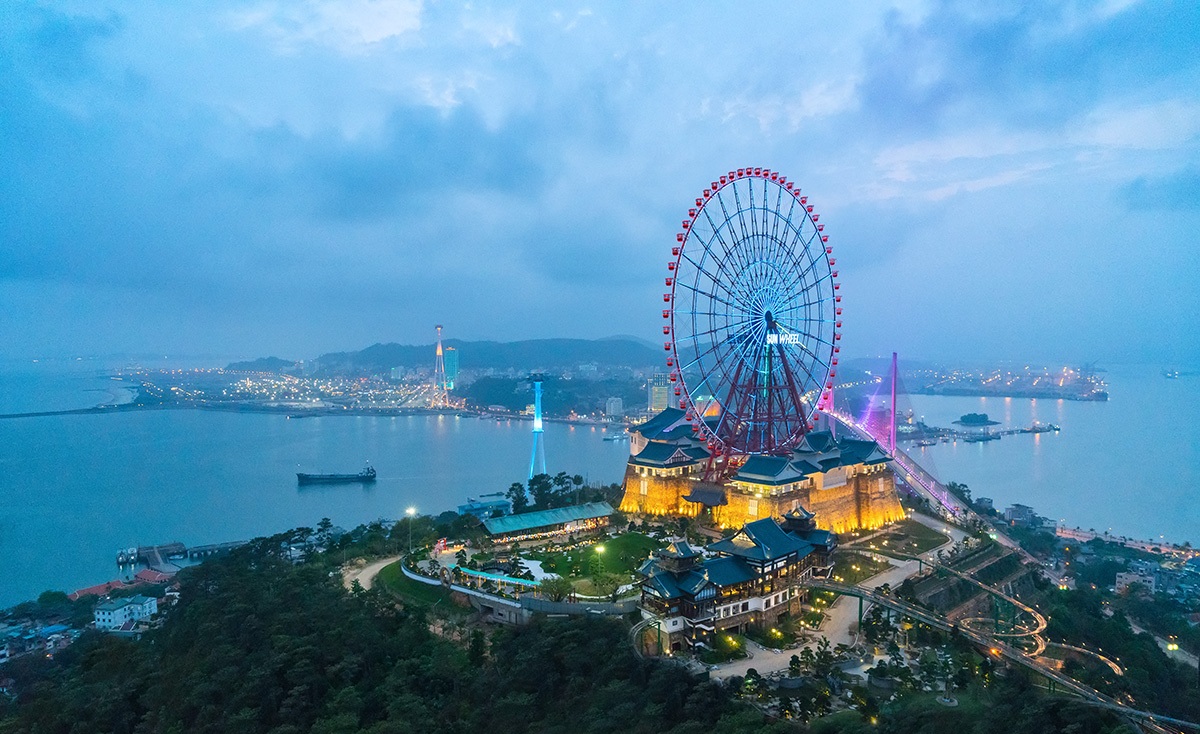
The bridge is not pedestrian friendly and the bridge killed off the ferry between the two areas.

In contrast to Bai Chay, Hong Gai has a compelling, raw vitality plus an attractive harbour to the east, crowded with scurrying sampans.
It is worth spending an hour or so wandering round the market and Long Tien Pagoda, which frequently hosts ceremonies in its small courtyard, offering fascinating glimpses into local rituals.
The pagoda sits in the shadow of Nui Bai Tho, a limestone outcrop named after a collection of poems (bai tho) carved into the rock, that detail Ha Long Bay’s beauty.
The earliest of these poems was penned by King Le Thanh Tong in 1468.

Hon Gai is characterised by flat areas punctuated by mountain peaks.
It explains why there are blank spots on the map with no roads.
This side of the city is what normal city life is like, which requires visiting the main market.
Wander around in the late afternoon and it will be still bustling with activity.
There isn’t an old town here or any remnant of colonial architecture.
The city was once a coal mining port, but the main port of the north is in nearby Haiphong.
Instead of crumbling French colonial architecture, Ha Long is getting these new shop houses with French mansard roofs.

As mentioned before, Ha Long City is the capital of Quang Ninh province in Northeast Vietnam, and as the name would suggest it is also the main city of Ha Long Bay.
Ha Long Bay is one of the most popular destinations in Vietnam, yet most people visit straight from Hanoi.
No guidebook or tour suggests stopping over in Ha Long.
The city has been reinventing itself in a bid to get more tourists to stay here.

For starters a new airport was built in 2018 to serve Ha Long.
Van Don Airport is 50km away so it is not exactly convenient, but there are free transfer buses and the trip is via a new highway that has been carved through this mountainous area.
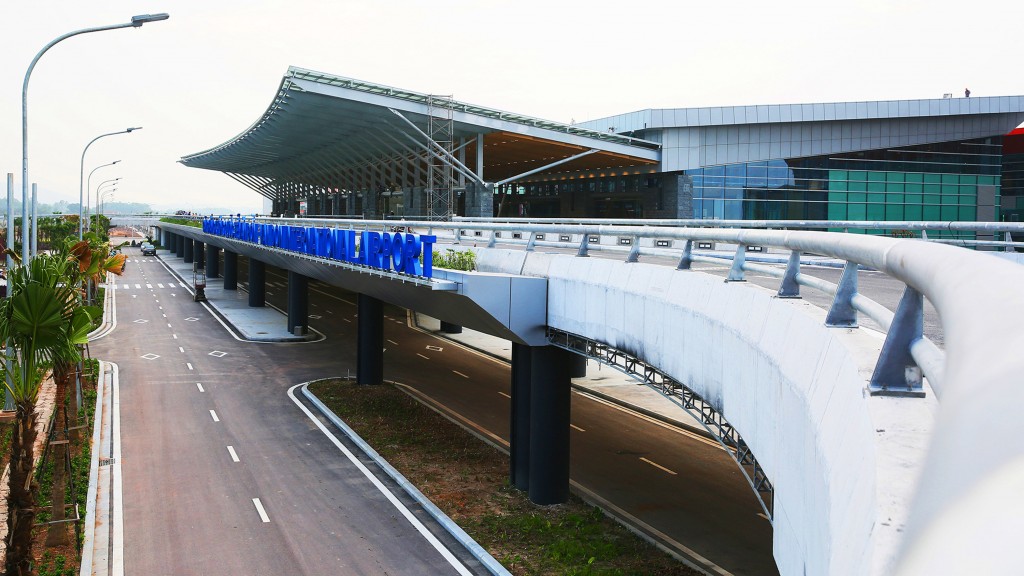
Ha Long is a city of two distinct halves, cleaved in half by the Cua Luc Straits.
On the east side is Hong Gai, which used to be the provincial capital.
On the west side is Bai Chay, which is where new tourism developments are being built.
The two cities were merged in 1993 to become Ha Long, and in 2008 the Bai Chay Bridge unified the two.
There is not much written about the city of Ha Long, and I do not know if I should be the one to add to previous descriptions of the place.

Living up to its Ha Long name, the city is right on the doorstep of the bay.
Walk along the waterfront and you can see the famous rock formations without even getting in a boat.
Obviously you should get in a boat, because Ha Long Bay lives up to the hype.
Going to Ha Long City and not visiting Ha Long Bay would be like visiting Cairo without seeing the pyramids.

It was predicted that by the year 2020 that Ha Long would be the city of tourism, the seaport industry, and commercial enterprise, playing the role of the urban core in Northern Vietnam, a place attracting investment and tourism in the world with a growing, dynamic, stable economy which is friendly with the environment.
They said that Ha Long City would become an urban centre, developing harmoniously in the Ha Long Bay World Heritage Site with the living environment equipped by technical and social infrastructure meeting international standards, an eco-urban typical for special heritage and culture, ensuring high living standards for all the people.
They said many things, but no one predicted the pandemic.

Ha Long is a highly urbanized and rapidly growing city.
There is extensive construction activity taking place particularly in Bai Chay.
The World Heritage listing of Halong Bay generates a large number of domestic and international tourists supported by a well-established tourism services sector.
This provides one pillar for the city economy.
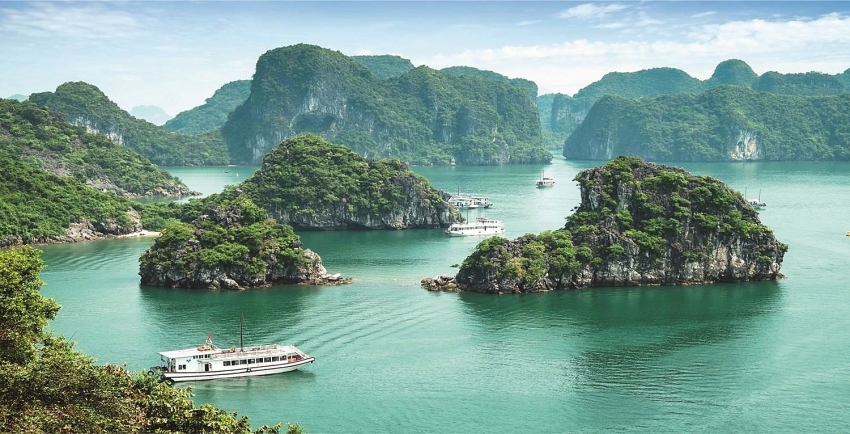
The other pillars are the mining industry and a production sector which has a significant number of new enterprises which use modern information technologies.

As a result of its economic and urban development the City has a lower ratio of poor households than the surrounding
region and compared with other Vietnamese cities, and it enjoys increasing standards of living overall.
The City is located at a focal point of the provincial and regional transportation systems with good links to China, an international port and the recently opened bridge at Bai Chay.
Its water and sanitation infrastructure are being improved with donor support.
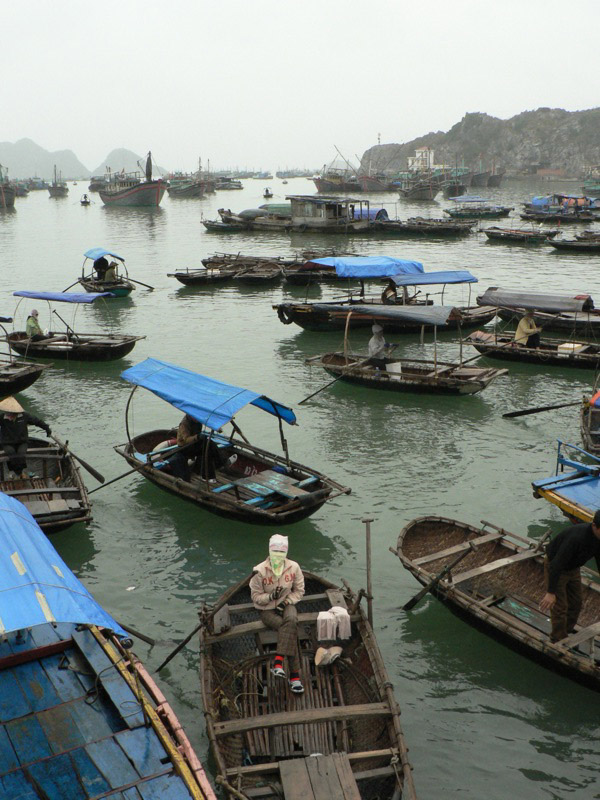
The City has a balanced budget with increasing revenues and foreign investment.
It has been successfully implementing block grant reforms.
Administrative reforms have already resulted in both a simplification of investment procedures and devolution of capital investment in construction to wards and communes.
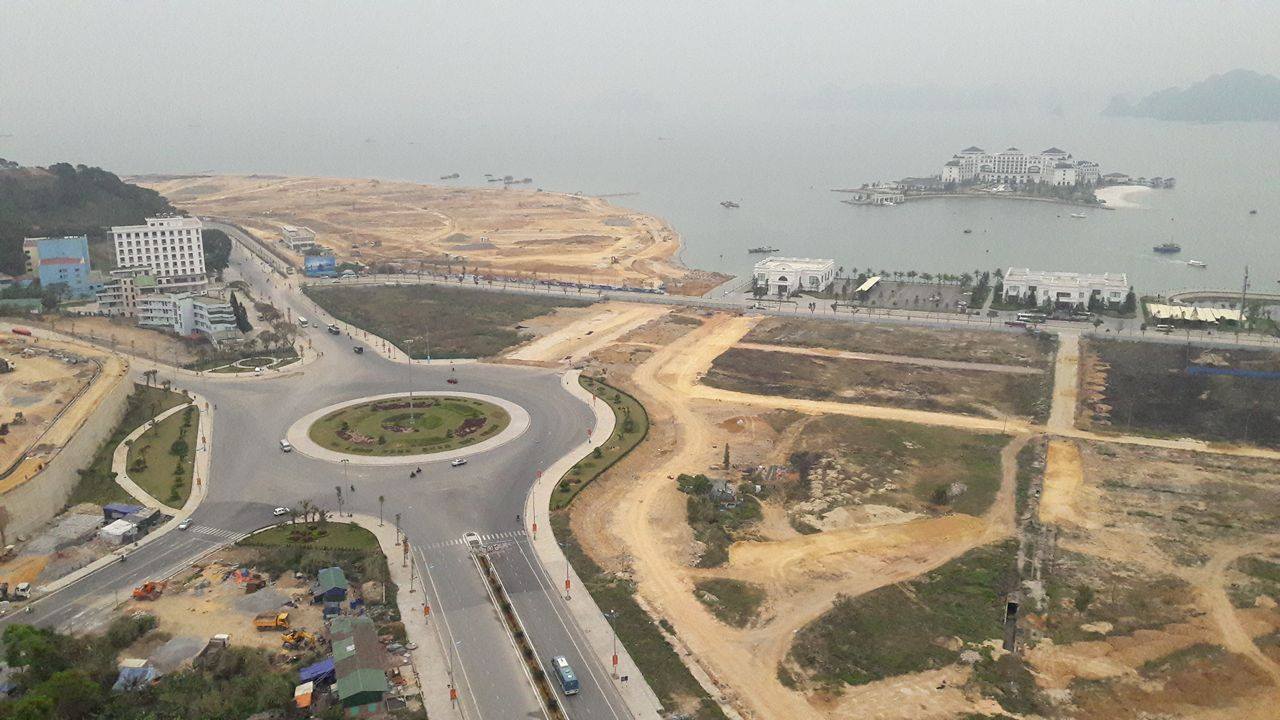
However, the rapid urban growth of the city has been largely uncontrolled resulting in degradation in the natural environment through encroachment of the city, and threatening areas on which the City depends for its tourism.
Local mining, treatment and transportation of coal have also added to environmental pollution.
The location and topography of the city places limits on its expansion with the result that land prices have risen as population grows and demand increases.
The supply of basis services, including water and sewerage, is problematic to some areas away from the urban centre’s of the city.
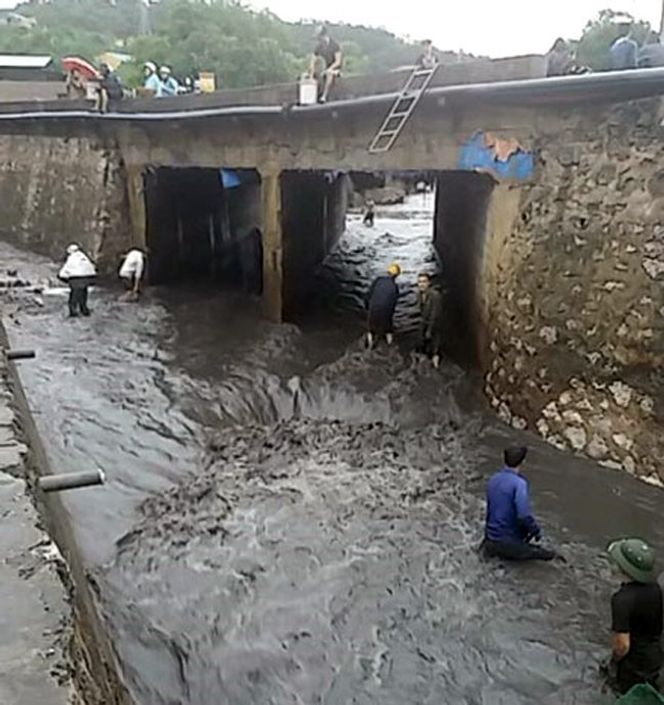
So, while official statistics show relatively little poverty overall in terms of family income, some areas of the city are lacking in basic infrastructure and the relatively high level of average income has been maintained by employment in a limited number of industries, notably mining.
Economic growth and rapid urbanisation are also increasing differentials in income and living standards between urban and rural areas and between the low-lying areas close to the city and the more mountainous parts of the north.
There is an absence of an overall plan for the management of the Halong Bay area which is essential if any balance is to be achieved between maintaining the natural environment with the continuing exploitation of mining resources and making full use of new port facilities.
The plan prepared in 1999 has never received government approval and is in need of updating.
At present the responsibilities of the City and the Province for environmental management overlap so making precise roles unclear.
Unofficial immigration is placing increasing pressures on the residential housing market.
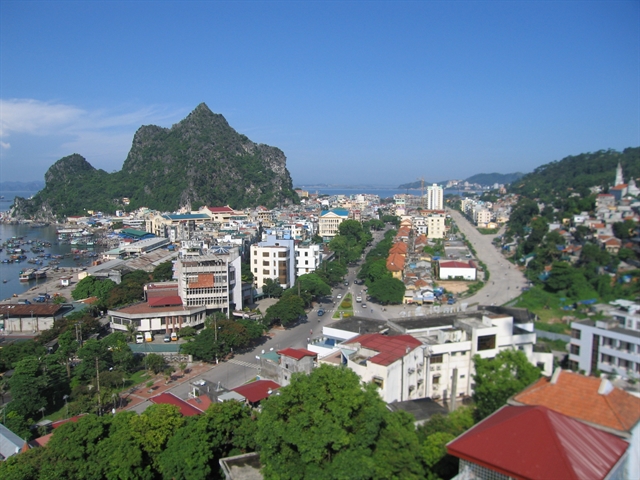
It also contributes to the problem that though the labour force is growing it is without the necessary training and skills to support high value added and high technology industries.
Concerns about labour training is also one of the factors that has resulted in Quan Ninh Province’s score in the Provincial Competitiveness Index (PCI) falling between 2005 and 2006 from a position where the Province was deemed by business to be one of the Provinces most amenable to and supportive of the development of the private sector, to
being only judged as “average”.

The city’s location and its transportation links provide the potential for it to develop as the urban service centre for the Red River Delta.

It can connect the northern key economic region to the northern coastal region and as the entry point for the southwest region of China provides access to China’s rapidly growing national economy.
Access to the Chinese market and the opportunity for further growth in international tourism could further integrate the city into the international economy and provide the basis for the envisaged export industry focus (both in products and services).

There is international support for and interest in the conservation and protection of the Halong Bay World Heritage area.
The fund established from mining revenues to revert the environment to its previous state provides a potentially
significant sources of funds to contribute to environmental reconstruction.
The Province’s investment will give priority to construction projects in the City adding to the potential for
mobilizing domestic and international finance for infrastructure development.
Residential and infrastructure investments will require greater focus if they are not to contribute further uncontrolled urban development resulting in further rises in land prices.
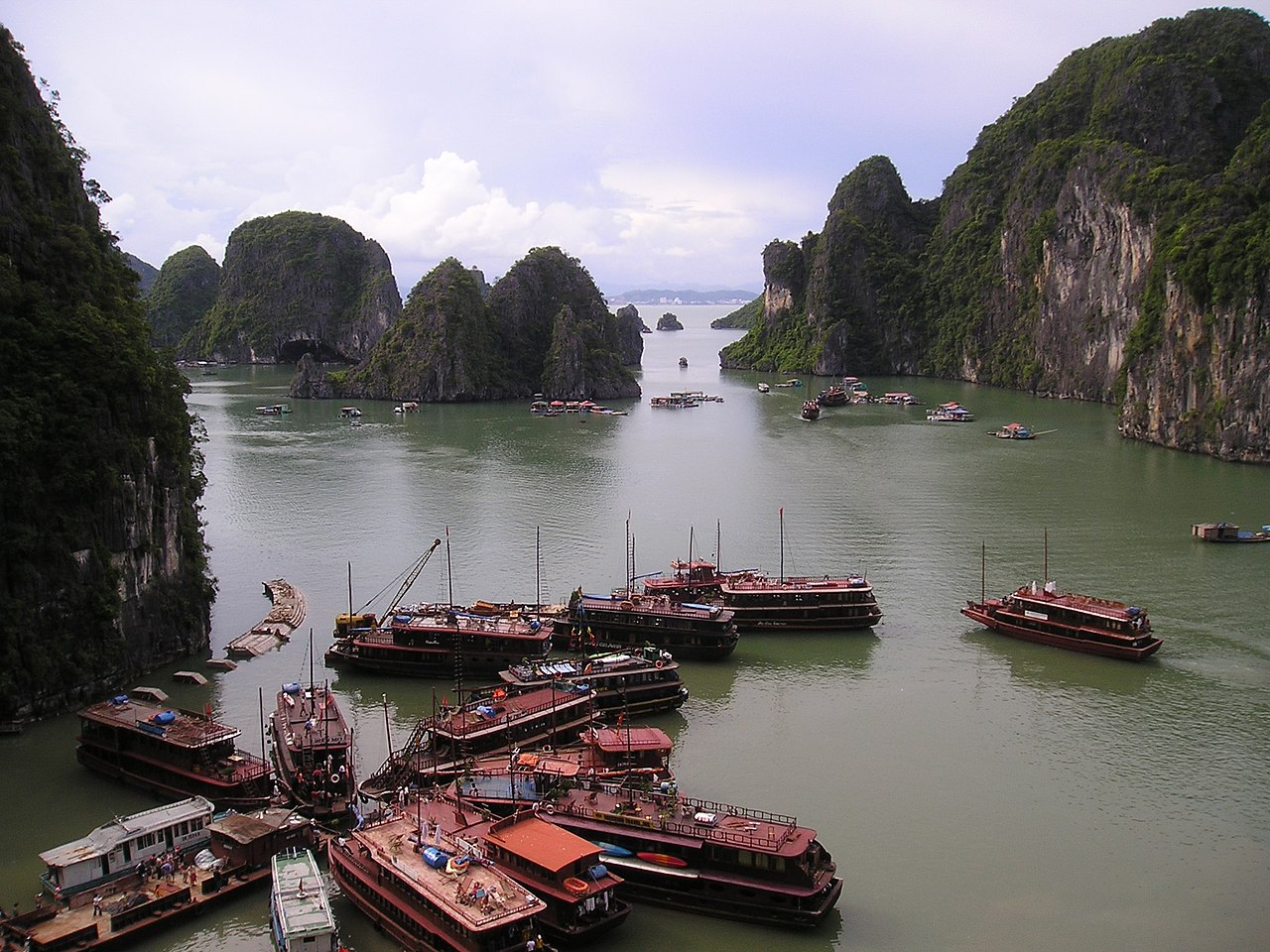
The major threat to the development of the city is that the management of the natural environment does not keep pace with urbanization and industrial developments resulting in further environmental degradation and undermining the potential for growth of tourism.
The projected demands for investment capital are massive (between VND 17 and 22,000 billion for 2006 – 2010) with sources of investment funding not yet clearly identified.
While the levels of official poverty are relatively low, there is potential for poverty to increase if there is further unofficial immigration and as land prices continue to increase.

To meet the objectives of the region and deliver the City’s vision for its future, the strategy must build on the city’s comparative advantages, its strengths, but address directly the current weaknesses and potential threats to the successful achievement of its objectives.
The overall strategic objective for the city’s future economic development is that it will become a regional and national centre for tourism and a regional centre for industry, commerce and services exploiting the potential from the new port at Cai Lan and the city’s comparative advantage in terms of its access to natural resources and its geographical
location.
There is particular need to provide further impetus to the development of high technology industries and industries which do not have detrimental environmental impacts if there is to be an effective move from the domination of
extractive industries in the local and regional economy.
Development of high technology industries will require a physical and technological infrastructure supported by trained and skilled labour.
The pace and pattern of further urban growth needs to accommodate and be integrated with several demands.
Inward migration of labour (some of it informal) generates the specific need to be able to provide affordable housing for the growing urban population which will provide the labour force for the tourism and service sectors, but in a context of rising land prices.
To support the growth of the tourism sector the city’s urban landscaping will require improvement and maintenance.
Urban landscaping, especially park space, open space and public transportation space, should also contribute to improving the overall quality of life of urban residents of the city.
However, there will need to be a balance between urban development and the maintenance of the Halong Bay environment.
It is well recognised by the city and all its stakeholders that a major objective of the development strategy is to maintain a delicate balance between further industrial development and urban growth with retention of the natural environments in and around Halong Bay on which future national and international tourism will depend.
Although the city does not carry the administrative responsibility for the management of Halong Bay the management and protection of the environment of city, as well as a key component of its economic development, is linked intrinsically to the future and protection of Ha Long Bay.

This points to three strategic objectives for the city’s environmental management.
The first is to provide a healthy living environment for the local residents and in local settlements within the city.
But the second is to protect and manage Halong Bay as a World Heritage natural resource as part of the joint commitment between the Vietnam government and UNESCO.
The third is to use and develop this natural heritage facility and resource for tourism in manner which is sustainable.
Meeting these objectives of maintaining controlled and sustainable urban growth with adequate environmental management will require adequate physical and social infrastructure including extending and upgrading the electricity and water treatment networks, and facilities for the collection and treatment of waste.
Improving access to health care and education facilitates which meet national standards are major social objectives.

The official figures for families living below the poverty line indicate that poverty is not an extensive problem in Halong City.
The strategic objective for the city is to ensure that the number of families living below the official poverty line is reduced even further with no families having to live in extreme poverty.

In the short to medium term, employment creation will make a significant contribution to alleviating poverty which requires both an increase in the size of the labour market and an improved skill base, but also increased opportunities for business development in the poorer wards and amongst poorer households.
However, tackling the emerging and increasing differentials in income and living standards between the urban areas and the more remote rural and mountainous areas of the city, and between some of its urban wards, will also require focused investment in infrastructure, including social infrastructure, in the poorer wards of the city, including Ha Khanh, Ha Trung and Tuan Chau.
More controlled and focused urbanisation, economic and social development and infrastructure requires a more focused and prioritised approach to investment.
The strategy needs to focus around two key dimensions.
The first is to attract increasing private investment through a combination of administrative reforms and sound management of the state budget.
The second is to provide an effective basis for decentralisation of financial management and investment decisions from provincial to municipal government, and from municipal government to ward and commune levels.
At the same time that mechanisms are being put in place to achieve a effective de-centralisation of finances and decisions, it will be necessary also to develop mechanisms for more concerted regional investment.
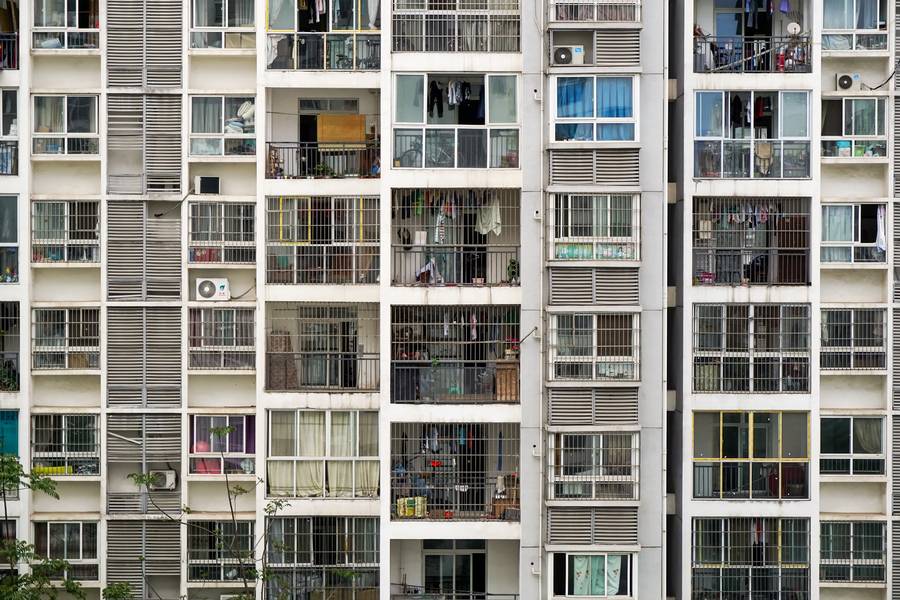
At present, Hạ Long is enjoying rapid growth not only in the tourism sphere, but as a destination upon the main pathway to southern China.
In 2007, the Vietnam-China Business Forum, a $400 million deal was signed to build a highway linking Hạ Láng, Móng Cái and Quang Ninh.

The structure of Ha Long’s economy includes: industry, tourism, services, trading, agriculture, forestry and fishing.
In 2002, the city’s GDP increased up to VND 1,6669.7 billion, accounting for 38% of the whole province, of which industry and construction occupy 31%, tourism and services occupy 53%, revenue collection accounts for 86.3% of the province.
Annual GDP growth rate is 11.4%.
GDP per capita reached US $1,070 in 2002, higher than per capita income of the country at that time.
Ha Long City has 1,470 industrial and handicrafts manufacturing units, including coal mining and processing, ship building, building materials, mechanic, wood processing, food, foodstuff and garments.
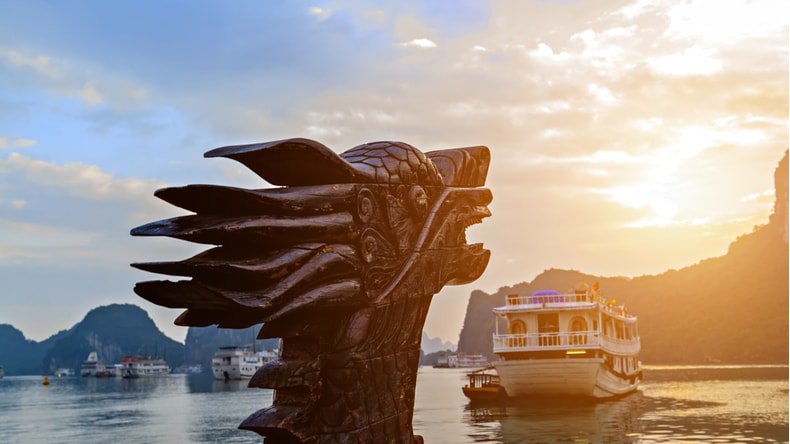
Tourism is both Ha Long’s hope and hindrance.
Unfortunately the place is a tourist trap and the unique panorama is spoilt by a tremendous amount of “junks” which are in fact slimly disguised tourist boats that bear no resemblance to the authentic Chinese sailing vessels of the same name.
These diesel-powered floating money-makers careen about the bay with casual indifference to safety as they bump and crunch against each other in a frenzy to drop their fares onto the obligatory island or floating shop before depositing the harried passengers back at Halong Bay dock feeling like they’ve been cheated out of their Dong, even if that isn’t particularly true.
The romantic setting is forever spoilt by the cattle market mentality.

“Ha Long” is literally translated as “Bay of Descending Dragons.”
Prior to the 19th century, this name was not recorded in any document or archive.
When mentioning the present-day Quang Ninh Sea or Ha Long Bay, old historical books often referred to them by the names of An Bang, Luc Thuy or Van Don.
Not until the late 19th century did the name of Ha Long Bay appear on a French marine map.

The Hai Phong News, a French newspaper of the time, had an article, “Dragon appears on Ha Long Bay“, reporting the following story:
In 1898 a sub-lieutenant named Lagredin, captaining the Avalanse reported seeing a huge sea snake on Ha Long Bay.
This was also witnessed by many of the crews.
Thus emerged the European image of the Asian dragon.
Whether this appearance of a strange animal looking like a dragon resulted in the name of Ha Long Bay is not known.

Without a doubt, Halong Bay is famous for its timeless karst landscape, towering limestone pillars, islands and islets, and spectacular caves and grottoes.
But what is also of interest to visitors, particularly those who have a love of history, is the culture of Halong, which is steeped in ancient traditions, mythology and legend
Even the legend of how Halong came to be is fascinating because – like so many legends – the myth is grounded in fact and the birth of Vietnam as a nation.

When Vietnam was still in its infancy and forming its identity as a country – somewhere between 900 and 1300 – Halong was the battleground for territorial conflicts with coastal neighbours, primarily the Chinese and Mongols.
Legend has it that the gods wanted to protect Vietnam against warfare so they sent dragons to shield the country from invaders.
These dragons showered precious gems onto the area – including jade and emeralds – which were transformed into the islands and islets of Halong Bay.
These islands and islets offered natural protection against trespassers and attackers, and provided the perfect setting for protective ambushes by the Vietnamese warriors.
And often, like magic, mountains of rock would rise protectively from the ocean, and sink the ships of invaders.
Once Vietnam was secure as a nation, the dragons toured the world in peace.
When the tour was complete, the mother dragon descended to Halong – the name literally means descending dragons – and settled there, while her dragon children found sanctuary on Bai Tu Long Bay and Bach Long Vi Islands.
The residents of Halong could live without fear, knowing they were safe from invaders.
While the legend of how Halong came to be has been passed down through generations, references to “Halong” did not appear in Vietnamese literature until the early 19th century.
Halong may not have appeared on maps, but it is home to a rich tradition of ancient Viet culture, the Soi Nhu culture being the oldest culture, followed by Cai Beo, then Halong.

The Soi Nhu culture was first detected by Swedish archaeologist, geologist and paleontologist Johan Gunner Andersson in 1938.
On digs in the area, he found evidence of ancient Vietnamese in Halong Bay and the Bai Tu Long area.

In 1967, Vietnamese archaeologists uncovered stone tools, ceramic fragments as well as human and animal fossils in Soi Nhu Cave.
Piecing together the archaeological evidence, it was clear that the Soi Nhu people subsisted on shellfish, supplemented by local fruits and vegetables.
Subsequent geological studies have revealed that Soi Nhu culture existed between 6,000 to 18,000 years ago, and were scattered across the Gulf of Tonkin in Halong, Bai Tu Long and Lan Ha.

Around the same time as Johann Andersson’s uncovered the existence of the Soi Nhu people in 1938, French archaeologist Madeline Colani (1866 – 1943) discovered the Cai Beo culture.
These peoples lived in the Lan Ha Bay and Halong Bay areas some 4,000 to 7,000 years ago, and were a continuation of the Soi Nhu culture.
Excavations in these areas have yielded a rich supply of over 500 artifacts used by the Cai Beo: pestles and mortars, grinding tables, axes, nets, statues and unfired pottery, as well as human and animal bones.
Bronze implements and decorated pottery have also been uncovered that indicate that the Cai Beo culture was quite advanced.
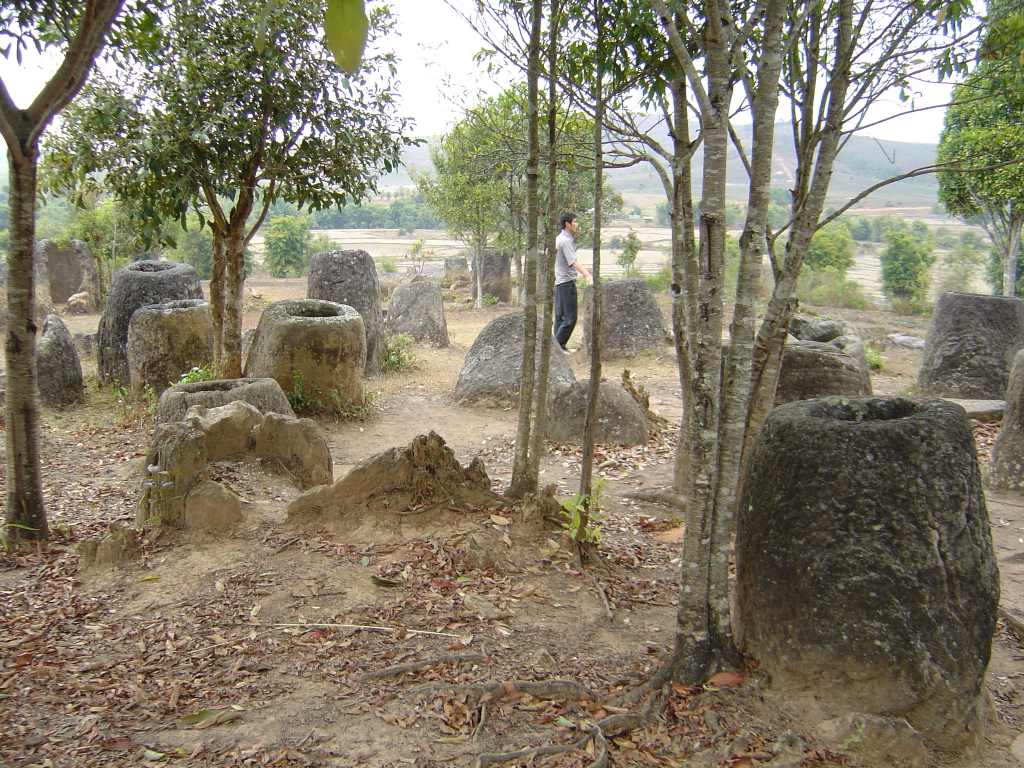
In the late Neolithic Age to the early Metal Age – between 3,000 to 4,500 years ago – the Gulf of Tonkin was home to the Halong culture.
Also known as the sea culture, the Halong people occupied Halong, Bai Tu Long and Lan Ha.
The Halong people were essentially fisherman, and many artifacts associated with their way of life – including nets, implements and boats – have been discovered on the islands and in the caves of the Bay.

Humankind has been present on Hạ Long Bay for a long time.
Over the years, archaeologists, researchers concluded that over the course of history, there were three cultures known as Soi Nhu, Hạ Long and Cai Beo culture.
It shows that the bay and its surrounding areas were one of the cradles of mankind.
The heartland of today’s Hạ Long City is formerly just a fishing village called the Oyster Coast.
By the beginning of the Nguyen dynasty, it was renamed to Mau Le.

The current city was then part of Hoanh Bo District.

In 1883, during the French occupation era, the French carried out coal mining in the mines on the Gulf Coast.
As on many islands there were lots of hemp so the French called them Ile des brouilles or a name translated from Hon Gai to Hon Gay, later renamed Hon Gai.
According to the researchers, “Hon Gai” is a deviation from the place of the French Red Sea at that time.
The “H” in French is a silent sound.
During this period, Hon Gai was an administrative unit of Quang Yen Province.
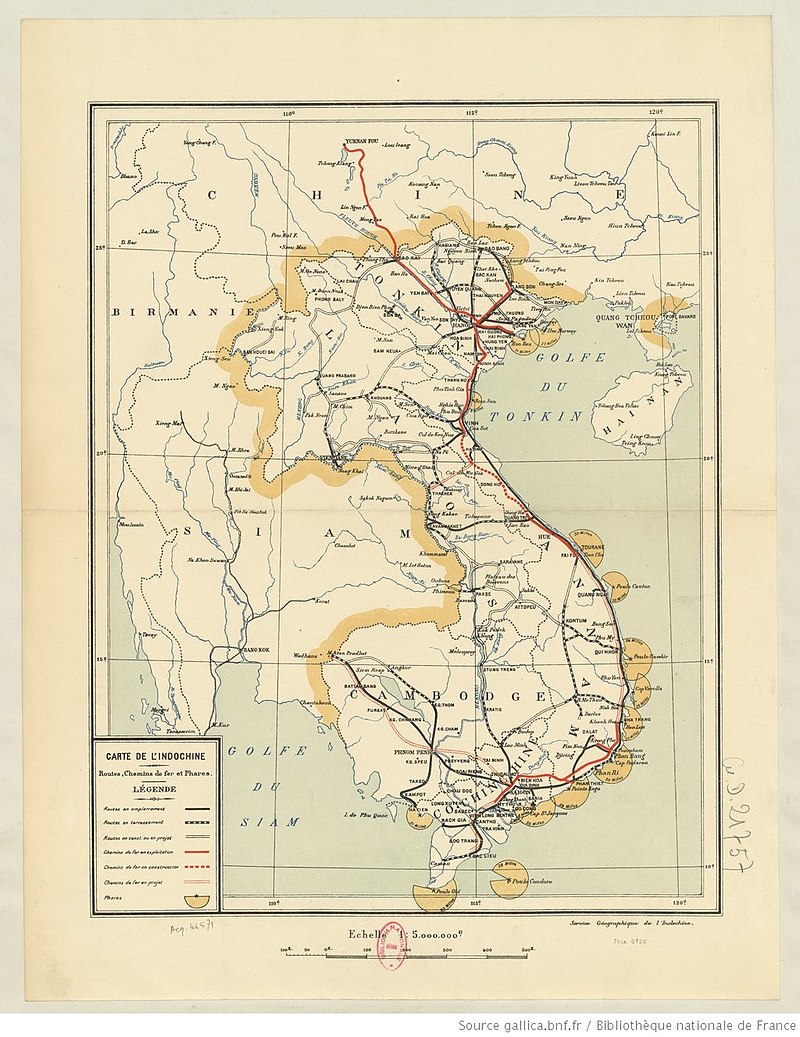
After the August Revolution in 1945, this township became the capital town of the huge Hong Gai mine area.

The August Revolution (Vietnamese: Cách mạng tháng Tám), also known as the August General Uprising (Vietnamese: Tổng Khởi nghĩa tháng Tám), was a revolution launched by Ho Chi Minh’s Viet Minh (League for the Independence of Vietnam) against French and the Japanese Empire colonial rule in Vietnam, on 19 August 1945.

Within two weeks, forces under the Việt Minh had seized control of most rural villages and cities throughout the North, Central and South Vietnam, including Hanoi, where President Ho Chi Minh announced the formation of the Provisional Democratic Republic, Hué, Saigon, except in townships Móng Cái, Vĩnh Yên, Hà Giang, Lào Cai, Lai Châu.
However, according to Vietnamese document, the Việt Minh, in fact, seized control of Vietnam.

On 2 September 1945, Ho Chi Minh declared Vietnamese Independence.
The August Revolution sought to create a Việt Minh unified regime for the entire country.
August 19 is considered as the unofficial Victory over Japan (V-J) Day in Vietnam.)
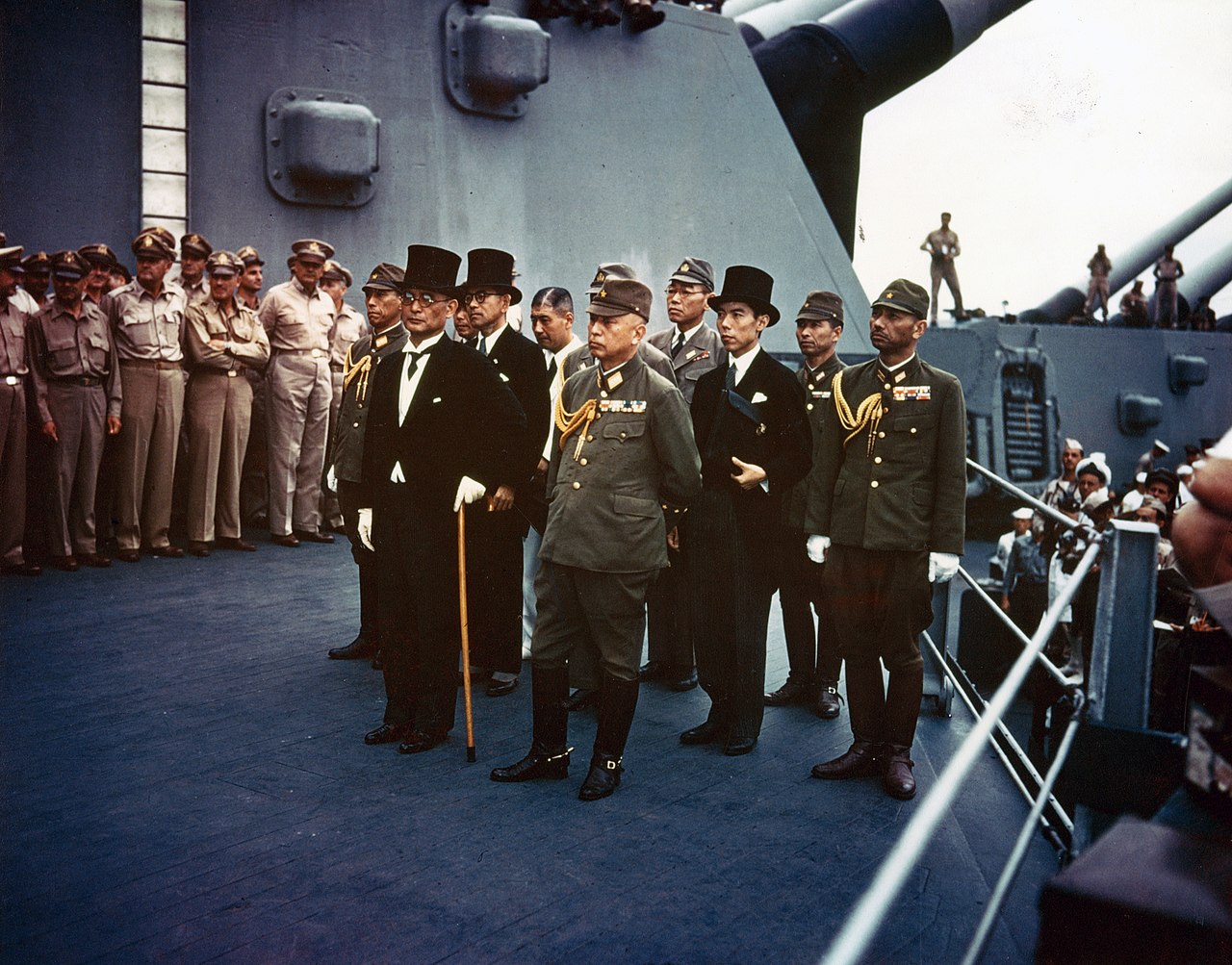
Late in 1946, the French reconquered Hon Gai.
After the Geneva Conference (1954), Hong Gai town became the capital of the Hong Quang special district.

On 30 October 1963, the Vietnamese government combined Hai Ninh Province and Hong Quang Special District to create Quang Ninh Province, Hong Gai became the capital of Quảng Ninh, and the province’s boundaries were expanded.
The Hong Gai town centre provided coal for all industrial zones of North Vietnam.
It also was the gateway to China so it was one of the main target of the US during the Vietnam War (1955 – 1975).


The Bãi Cháy Ferry (decommissioned in 2007, replaced with the Bãi Cháy Bridge) was the most important transportation hub, was the target of many American bombardments, and was awarded Hero of the People´s Armed Forces three times.

On 27 December 1993, the government issued Decree No. 102/CP.
Hong Gai town officially gained its city status and was renamed to Hạ Long.
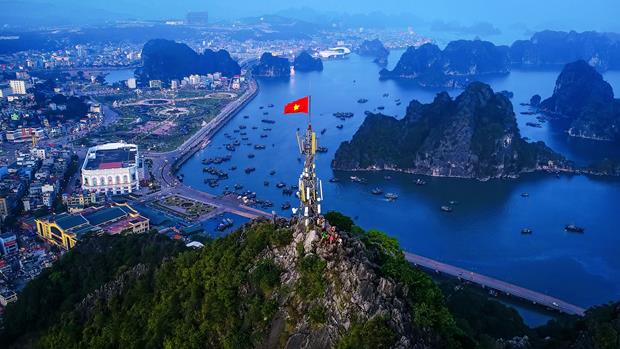
Drifting south from Vietnam’s north coast in a wooden junk, your eyes will be riveted on what, at first, appears to be a jagged wall of emerald green.
After an hour or so the wall swallows you up, and you find yourself in a fairyland of otherworldly limestone peaks, jutting from the water at sheer angles – this is Ha Long Bay, one of the most spectacular places in the whole of Vietnam.

From Guilin in China to Thailand’s Phang Nga Bay, the limestone towers of the bay are by no means unique, but nowhere else are they found on such an impressive scale:
An estimated 1,969 islands pepper Ha Long Bay itself, with a further two thousand punctuating the coast towards China.

In 1469, King Le Thanh Tong paid a visit to Ha Long Bay and was so inspired by the scenery that he wrote a poem, likening the islands to pieces on a chessboard.

Ever since, visitors have struggled to capture the mystery of this fantasy world.
Nineteenth-century Europeans compared the islands to Tuscan cathedrals, while a local tourist brochure opts for meditative “grey-haired fairies”.
With so much hyperbole, some find Ha Long disappointing, especially since this stretch of coast is also one of Vietnam’s more industrialized regions – a major shipping lane cuts right across the bay.
The huge influx of tourism has, of course, added to the problem, not least the litter and pollution from fume-spluttering boats, but a sizeable proportion of tourist income does at least benefit the local communities.

Bar a clutch of gorgeous caves, conventional sights may be few on the ground, but even if you tire of the scenery there’s a lot to do in the bay – kayaking across the tranquil waters, swimming amidst the twinkles of phosphorescent plankton, or even climbing up a rocky cliff with your bare hands.
The vast majority of visitors come on organized tours from Hanoi, travelling by road to Ha Long City, on the bay’s northern shore, then transferring to cruise the bay on a replica wooden junk – it’s not really any cheaper to do it by yourself.
However, if you can do without the night on board, it’s possible to hit Cat Ba – the largest and most beautiful island in the bay – from Hanoi using public transport.
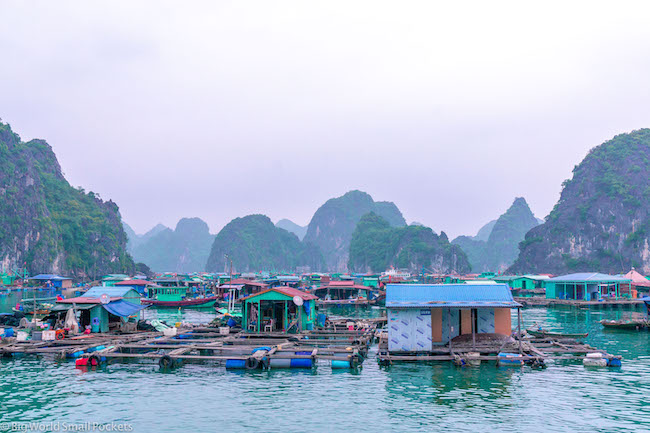
Competition among Hanoi tour operators is incredibly fierce, meaning that you can get an overnight trip for next to nothing – sometimes as low as $30.
However, at this price range you really could be running the gauntlet, and many travellers encounter difficulties which sour their appreciation of the bay:
Vessels can be dirty, have poor facilities or be horribly overcrowded.
It’s always best to ask operators if they have a maximum group size (sixteen is the usual upper limit), though such promises are often broken.
Some junks are also simply unsafe, though regulations have been tightened up since a boat went down in early 2011, killing 11 tourists and their local guide.
Do also note that if your trip is cancelled – due to bad weather, for example – you are entitled to a full refund under Vietnamese law.
Compounding the confusion is the fact that very few operators have their own vessels – travellers tend to be shunted on to whichever junk has room.
As such, you may find yourself sharing a vessel with people who have paid far more or far less for the same thing.
In short, it is almost impossible to give concrete recommendations for budget tour operators.
You pay your money and you take your chances.

In fairness, the Bay is worth seeing.
But what of the city?
This is a city of over 300,000.
Hạ Long is a jumping-off point for Hạ Long Bay, a broad inlet of dramatic, often mist-covered limestone islands.
Replicas of traditional junk boats tour the bay and depart from the city’s Bai Chay district.
Bai Chay also has an artificial beach, a casino, cafes and dozens of hotels from resort-style complexes to hostels.
But is that all it is?
Few people know that Halong also has a fascinating landscape beyond the bay.
Bai Tho (Poem Mountain) is an ideal place for those who prefer a little adventure, a little challenge, and a chance to explore the city and the surrounding area,to get a different perspective on the famous bay.
Bai Tho Mountain is a limestone mountain 200 meters high, located in the heart of Halong City.
This mountain is quite special:
Half of its foothills rove over the land, and the other half are immersed in the ocean.
People have a long history of interpreting the mountain’s shapes to look like a crouching tiger, a preying lion, or a dragon preparing to fly.
Not only does the mountain have a high value in regard to tourism, Bai Tho Mountain also has a rich, storied role in the culture and history of this province.

A long time ago, Bai Tho Mountain was called Truyen Dang Mountain (Lighthouse/Light Projecting Mountain).
Legend has it that soldiers perched atop the mountain would use their high vantage point to announce oncoming aggressors by lighting up the top of the mountain to warn the city below.
In 1468, King Le Thanh Tong patrolled the northeast coast by boat and stopped at the foothill to drink wine and recite a poem.
Touched by the charming scenery of natural mountains and sea, King Le Thanh Tong had the poem carved into a cliff face.
From that time forward, people have chosen to call this place Bai Tho Mountain (Poem Mountain).
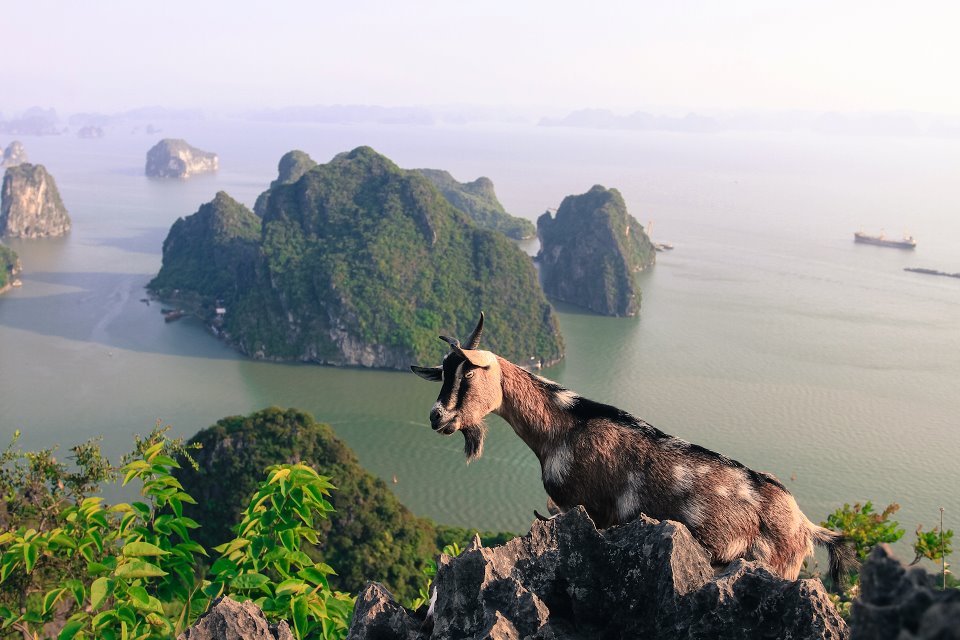
It’s amazing that this mountain is located in a residential area, but it is not a well-known place as there are no signs nor nothing that tells you where or how to climb it.
Here comes the most interesting part…
You need to navigate the doors of a local house – basically walk through their house – to set your feet on the hiking trail that will lead you to the top.
If you thought you would pass through someone’s house for free, you’d be very wrong!
We’re in Vietnam, baby!
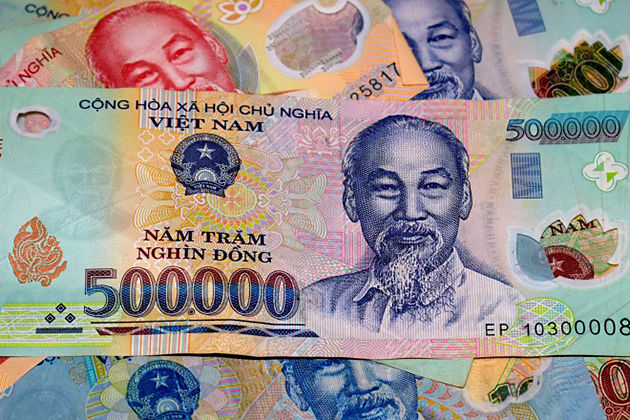
To access the entrance to the mountain, you first have to walk up through the house of a local lady.
It is the entrance to this house that can be tricky to find.
The entry way to the house is through a blue door which is right next to a photocopy shop.
You really do have to walk right through somebody’s house to reach the base of the mountain, passing a couple of puppies, heading up the stairs, passing the kitchen and living room to come out into the backyard amongst chickens.
This is where you finally meet the infamous lady who owns the house with access to the mountain.
There is no set entrance fee to Poem Mountain.
The lady will charge you whatever she feels like and it varies from person to person.
You can try your best to haggle with her, but even if you have to pay VND 100,000 per person it is still totally worth it.
Plus, the visitor does not have a lot of buying power when she is providing access to the mountain entrance.
Once you have negotiated an entrance fee, it’s time to break into the mountain.
Some people have had to climb over barbed wire while others climbed through a hole underneath the main gate.
By 2019, the authorities had closed both of these access points.
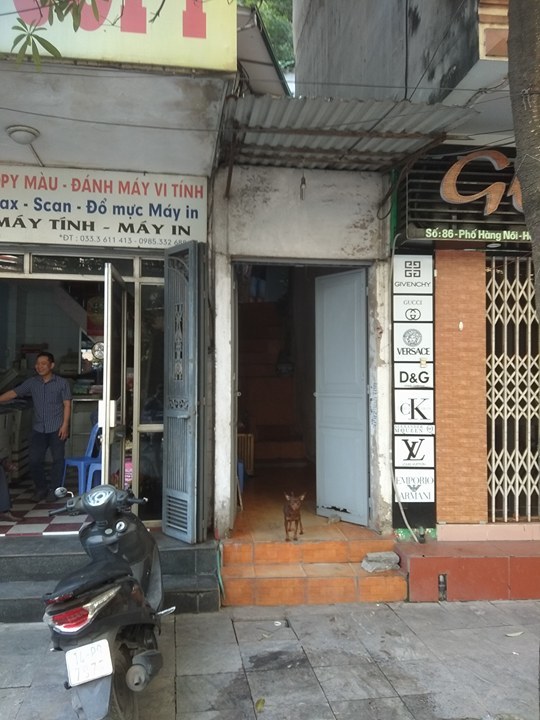
Above: She Who Must Be Paid
Now you have to scale a 10-foot rock wall and climb underneath the fence.
They have literally carved away part of the mountain to allow tourists to gain access.
It is a bit of a sketchy climb but the lady will help guide you up by showing you where to place your feet.
Depending on your level of fitness, the hike to the top can take anywhere from 20 minutes to one hour.
It is not a particularly long hike, but it is straight up and steep the whole way.
So although it is quite a short hike, it is fairly difficult.
The first two-thirds of the hike are up cement stairs that are still in very good condition.
As it is officially closed, there are several sections where the trees and bushes are overgrown and you have to duck down low and shuffle underneath the greenery to get by.
The last part of the climb is along mud and rocks and involves a bit more scrambling, but nothing too crazy.

Once you have huffed and puffed your way to the top of Bai Tho Mountain you will be greeted by the best view in Vietnam, potentially even in Asia.
It really is amazing.
Seeing thousands of these cliffs rise out of the water for as far as the eye can see, is simply inspiring.
The dodgy entry and tough climb to get here is all worth it when you catch your first glimpse of Halong Bay from above.
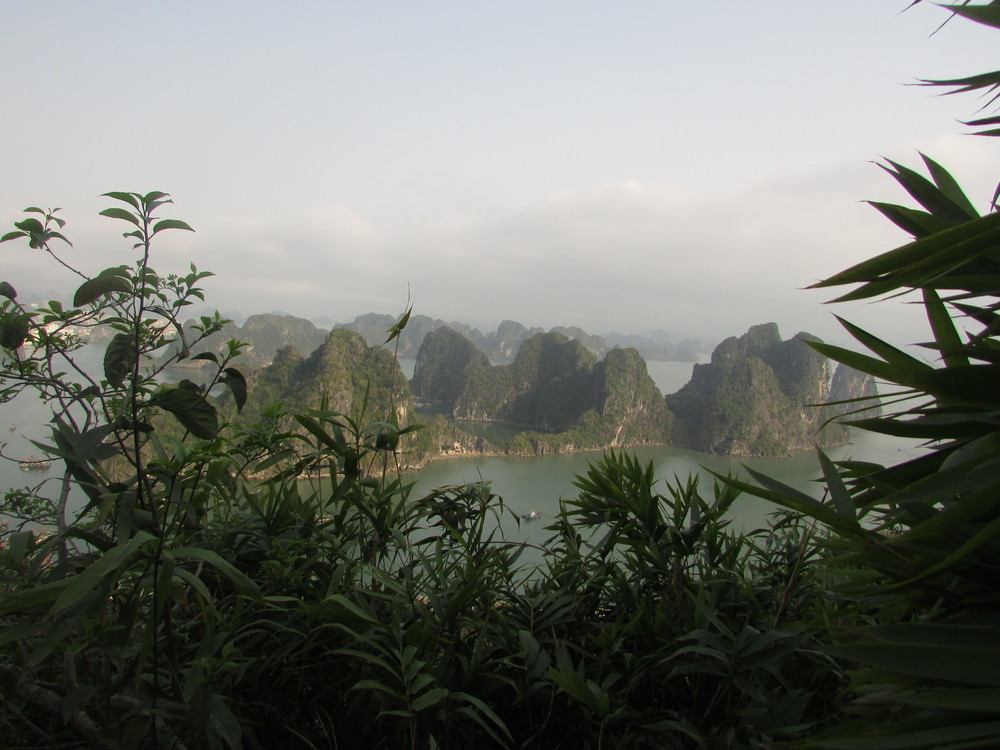
Sunset and sunrise from Poem Mountain is absolutely breathtaking.
Sunset can be a bit misty and foggy which makes a trail a bit slippery, so be careful!
Sunrise is usually extremely clear without many clouds and you can see thousands of limestones in the bay.
When reaching the highest point of Bai Tho Mountain, standing from the top of the mountain, the visitor cannot stop admiring and being overwhelmed by the image of an immortal Ha Long.
This is wonderful Ha Long Bay with blue sea, white sands and ships floating far away.
This is also the crowded city surrounded by various houses and traversed by suspension cable – an immense and majestic Ha Long seen from the peak of the mountain.

Not every local person knows that Bai Tho mountain used to be called as “Roi Den” or “Truyen Dang Son” (“shining light”).
According to some legendary stories about the mountain, its name as “Truyen Dang” was born when the ancient soldiers guarded on the mountain.
If they saw the enemy coming, they would light a fire to send a signal to the citadel.
The history of Bai Tho mountain written in the work of protecting and building the country closely attach with the glorious victory of the Hung Dao King – Tran Quoc Tuan in the battle against Mongolia on the Bach Dang River in 1228.

Today, the important and strategic position of the mountain in this battle is still carved in the stone stele that:
“From this mountain peak, thousands of years ago, stood a key watchtower of the border of the North East of the country.
In the night the guards burned the signal lights, directed the boatmen to dock.”
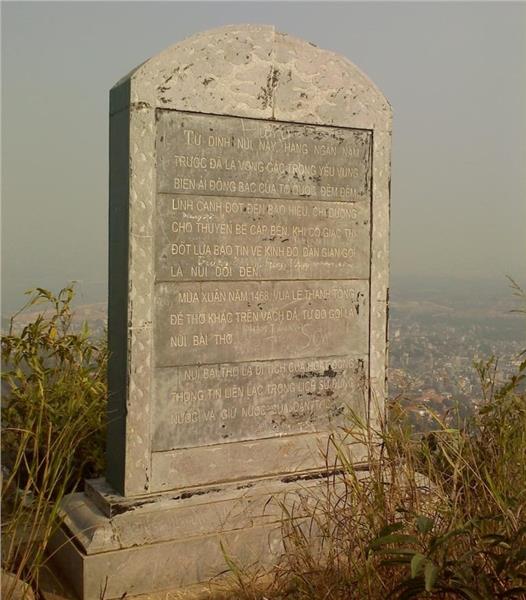
In the spring in 1468, King Le Thanh Tong sent his troops to practice on the Bach Dang River and travelled throughout the An Bang.
When he stopped under the foot of Truyen Dang Mountain extremely impressed by the Mountain’s natural beauty with the blue sea, the King wrote a poem and asked his soldiers to carve it on the cliff.
Since then, the mountain has been called De Tho Mountain or Bai Tho Mountain and become an important historical monument of the nation.
After King Le Thanh Tong, the Lord An Do Vuong Trinh Cuong (1686 – 1729), a famous poet under the Le Trinh dynasty, taking his troop’s patrol across the mountain in 1729 depicted the poem of King Le following the poetry style that has seven words per sentence and eight sentences per poem.

Not only having touched the poetic spirit of many heroes in the past centuries, Bai Tho Mountain also strongly impressed many 20th century visitors so that many of them, immersed in its wonderful beauty, made interesting impromptu poems themselves.

Also on this poetic peak on 1 June 1903, when the land was simmering with revolutionary spirit, the rebel flag fluttered atop the Mountain like a symbol of truth that justice would defeat the subjugation and brutality of French colonialism.

Although the inscriptions on the cliffs have become faded from natural conditions, through the ups and downs in the history of an independent nation, the historical values and the meaning of these poems remain.
The difficult journey of exploring mystery always brings a surprise.
Each mile of the road under the mountain also marks the time of revolution, of the secret caves of the mining people.
With luck, in the morning, visitors may see wild goats grazing.
But the climb is steep and the descent is dangerous.
And the tourists still come and the lady gatekeeper still scowls and her dogs still threaten.
Halong Bay’s scenic beauty has become renowned throughout the world, causing thousands, near millions of tourists to visit the bay every single year.
But these tourists were not the first people to visit.
Dating back thousands of years, Halong Bay has been populated by small local communities living on floating villages tucked away in between the karst, sunken mountains.
Over 500 million years of erosive forces from the wind and sea, the softer pieces of limestone on the mountains were worn away, leaving the harder areas behind.
These now form what we recognise as Halong’s distinct geomorphic topology- or in other words: the otherworldly sunken mountains that jut out from Halong’s emerald green waters.
Originally built as a place for returning fishermen to sell their fresh catch from the night before, the Halong Bay floating villages became residential quite quickly.

But it didn’t stop there:
People lived, ate, slept, worked, partied, and even went to school on these tiny, self-sufficient floating villages.
Each village is a completely self-contained society, in perfect harmony with the land and sea, and surviving everyday trials and tribulations by working together.

Now:
These are resilient people, unfettered by modern day problems, living out lives that are little changed by the passage of time.
The villages have houses, shops, schools and even police stations.
Their boats and houseboats are tethered together to provide safety and stability when tested by elements.

Sure, at one point the Halong Bay floating villages were the most unique and close-knit communities you could ever imagine.
But then something changed:
A couple of years ago, the government sent out a directive that would force the residents to move inland and leave their floating homes behind.
At first, the people in the village were indignant, refusing to leave behind the homes – the community that they had spent generations to build.
But the government’s standpoint was firm:
The people’s quality of life, and particularly their children’s access to education, would vastly improve if they moved inland.
Pollution and environmental protection were also a big factor.
The directive was final.
In 2014, the authority started resettling families and residents to the mainland in order that they could reap more benefits from the flourishing economy and tourism development.
However, a minority of Cua Van local people chose to remain offshore in the daytime, earn a living by traditional fishing or running services for tourists.

Now, the Halong Bay floating villages are preserved intact, just the way they were when the residents still lived here full time.
Although people do not now live here full time, the locals do still carry out a lot of activities and work tasks here, such as fishing, net weaving, and pearl processing.
Visiting the Halong Bay fishing villages is one of the top rated activities in the region, which tourists enjoy a lot thanks to the chance to get a look at Halong’s deep-rooted culture up close, and learn about the people who once lived here.
The people who lived in the four villages only number about 1,600.

Today, there are four main villages in Halong Bay, and this is their story:
Originally two fishing villages were formed at the start of the 19th century, one called Giang Vong and the other Truc Vong.
But they didn’t always live on the sea:
Originally land dwellers, the people made their homes on boats, maintaining their ancestral shrines on the mainland.
When they needed to discuss local politics, they simply dropped anchor, and held them.
Between 1946 and 1954, during the war against the French, these people scattered throughout the bay, finally returning to build their new floating villages when the area eventually stabilised.
Today it’s like this:
The descendants of these villagers are now the people who – until recently – inhabited the four remaining villages: Cua Van, Vung Vieng, Cong Dam, and Ba Hang.
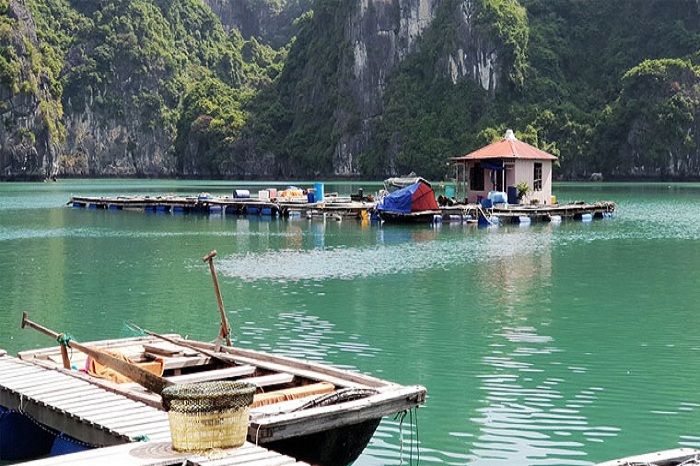
You will find Cua Van (the closest village to Ha Long City) in Hung Thang Commune, just 20 km from the tourist boat wharf at Halong City.
It can be accessed either from here or from Cat Ba Island.
The village lies in amidst calm waters surrounded by mountains.
Listed as one of the finest examples of ancient villages, today there are about 200 boats there.
The largest fishing village in Halong Bay situated at Hung Thang Commune, Halong City, lies in a calm bay surrounded by karst limestone mountains and islets.
With approximate 180 households living mainly by fishing, Cua Van floating village has a population of 733 and they all live on floating houses.
Having been voted as the most 15 beautiful ancient villages in the world by the website Journeyetc.com, this floating village earns a lot of respect from visitors all over the world because of their sense of responsibility when it comes to keeping their surroundings clean.
Every day, locals roam around the village by boat to collect garbage and floating waste along the waters to reduce the risk of water pollution that could potentially harm their families and the rest of the community.

Leave the bustle and hustle of big cities behind and find yourself immersed in tranquility.
There are over 300 households in the area, living in houseboats tightly attached to each other so that they stand fewer chances of being blown by strong winds.
One of the most original characteristics of Cua Van floating village is a whole host of small boats and rafts anchored in front of every house, embodying the spirit of fishermen who hope to bring a brighter future to their kids and family.
The native residents of Cua Van are warm, hospitable and friendly, always trying to make people feel welcome.
If you happen to meet some kids, don’t forget to wave.
They will be all smiles and happy to show you all the village’s hidden attractions.
Your trip to Cua Van would not be fulfilled unless you experience the following:
- Enjoy the special cuisine cooked by the locals.
- Join in a variety of cultural activities, including boat sailing and listening to people singing out at night, or catching cuttlefish.

Normally, it is advised to spend a day and a night to discover Cua Van fishing village since there are many interesting things for you to experience, many unforgettable memories as priceless gifts.
Cua Van fishing village is nearly the farthest point in Halong Bay and it is the endpoint of almost Halong Bay discovery tours.
After spending the first day to get a view of Halong Bay by boat or cruise, you will stop at Cua Van at the end of the itinerary, where you will have wonderful experiences that night and the next day.

Cua Van Floating Culture Center is a construction specialized for displaying and preserving traditional values of culture which originates from the long-standing fishing village.
This site introduces a whole host of educational, cultural exchange activities, not to mention hundreds of archeological antique collections including ancient fishing tools that trace back to centuries ago.
In addition, extraordinary sequences of documentaries and archival research pictures are consistently exhibited so that everyone can admire and get the gist of the village’s ancient image.

Despite the fact that the majority of residents have moved to the mainland, a number of local families chose to maintain their living here during daytime.
To most of the fishermen, the sea is regarded as their hometown, and the boat as their shelter, as if it was all a matter of common sense for the fact that they shared weal and woe and blended in harmony with the sea.
Their kids are used to swimming and sailing, even dealing with risks and danger from a very early age.
The people of Cua Van believe in spiritual practices and avoiding forbidden customs, such as preventing women from getting on the boat before heading for the open sea.

Apart from fishing, the local people also earn their living from providing kayak services or tour guides who know the village like the back of their hands and help you steer the boat properly.
Surprisingly, kayak sailing is among the most requested services by foreign tourists, because it is so amazing a scene that can help them to take incredible and one-of-a-kind pictures.

Vung Vieng village is located in the heart of Bai Tu Long Bay, and is about 40 km from Halong City.
Thanks to its picturesque setting, Vung Vieng is a favoured stop off for cruise boats.
While the residents used to earn their wage through fishing and pearl farming, nowadays their income is mainly supplemented by tourism.

Known for its mountains, reefs, and underwater lakes, Cong Dam is one of the smallest and oldest villages in the bay.
Thanks to its beautiful beaches, it is also a favoured stop-off point for cruise boats.

Home to 50 families, Ba Hang is a small village that lies in a peaceful strip of water between two karst formations.
Again, while it used to be a fishing village, now the people who work here mainly serve the tourism industry.
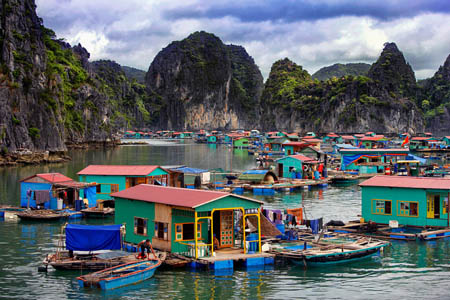
Psychologically separate from scenic summits and floating fishing villages is Hoang Gia International Park or Royal Park which runs along Bai Chay Beach, from Bai Chay Tourist Wharf to Hạ Long Night Market.
It is a comprehensive resort totaling eight hectares, including Zone A, Zone B, Zone C, Royal Villas and Hotels.
Restaurants in the park serve European, Chinese and Vietnamese food and seafood.
The deluxe shopping centre, located nearby on Bai Chay Beach, has a total of 25 blocks with 138 units, offering international and Vietnamese products.
You can enjoy yourself to the fullest with the entertainment and recreation services:
- a 400-metre artificial beach
- bars
- a bathing services center
- an emergency station
- a park
- a garden of birds and orchids
400 metres from Bai Chay is Reu Island, an attractive eco-tourist site with several kinds of rare birds and animals, namely pythons, ostriches, dwarf horses, fish, and ornamental trees.
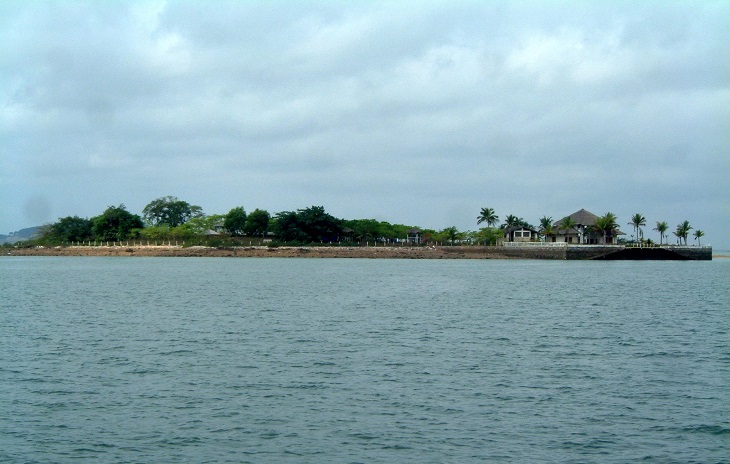
- archery grounds
- cacti
- a sensational train
- a haunted house
- a discotheque
- a karaoke bar
- electronic cars
- an art gallery – The gallery displays more than 200 outstanding paintings by renowned Vietnamese artists.
- an open-air stage
- water puppetry – Formed in the 12th Century during the Ly Dynasty, the water puppet show became part of Vietnamese traditonal culture.
Each day there is a presentation of three shows with a duration of 45 minutes per show at 18:30, 19:45 and 20:45.

- traditional music and singing – You will have a chance to enjoy Vietnam’s traditional dances and songs, such as Moi Trau, Katu and Champa.
Each day there is a presentation of three shows with a duration of 45 minutes per show at 19:30, 20:45 and 21:45.

- museum
The museum has one of the largest selection of antiques, such as Bat Trang pottery and porcelain, Dong Son bronze drum, Cham Pa wooden sculpture etc., from Vietnam, China, Japan and Thailand.
Especially noteworthy are two antique tombs from the Han and So dynasties.

- the quay for sightseeing tours

Located right in the heart of Halong City, Halong Market is both a leading wholesale market of the province and a fascinating rendez-vous to visit.
Originally built in 2003, Halong Market has exploited its available advantages because it is situated in Halong city centre with convenient transportation.
Setting foot in the Market on weekends, tourists can engage in the crowded shopping and sightseeing.
The market is much more crowded in the summer when tourists spend their vacation in the majestic Halong Bay area.
Locals go shopping with their families here.
Stepping into the main entrance of Halong Market, tourists are lost in the world of electronics, home appliances, groceries, handicraft products, cosmetics and gifts, all arranged neatly and conveniently.
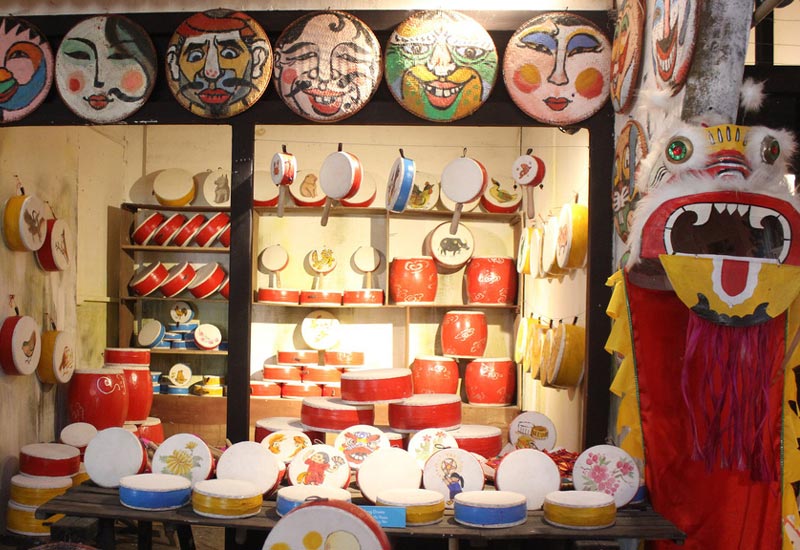
Tourists encounter daily familiar objects such as combs, chopsticks, bracelets, hair pins, glove boxes, etc., but dressed up in extremely eye-catching ways.
The wind chimes of supended seashells thereby are unique and sound like the sea breeze.
Shopkeepers are courteous, hospitable and uniquely thoughtful.
The Market pleases even the most demanding guests.

Going to Halong Market tourists get lost in a culinary kingdom.
The selection is diverse, especially with seafood products from Quang Ninh waters, such as delicious and cheap Halong squid and dried fish.
Furthermore, the Market is home to numerous snack products, such as tortilla chips, chicken stew, bread rolls, and dried cow dummy.
Tourists should not miss “sam” – a distinctive cuisine of Halong culinary.
As one of marine species of crab family, “sam” is processed into many delicious dishes, such as “sam” rolls, sweet and sour “sam” eggs and “sam” legs.
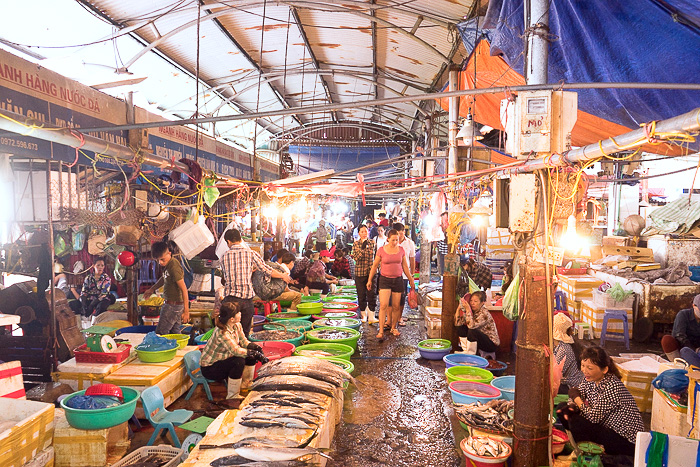
Opened in early 2015, Halong Night Market is a part of the Halong Marine Plaza Entertainment and Trade Center.
With the total area of 5,000 square metres, the Halong Night Market – featuring 335 stalls that sell plenty of goods with a huge selection, such as souvenirs, clothes and food – has become a must-visit spot for tourists and travellers.
The Halong Night Market is equipped with a great infrastructure, vibrant lighting system, electric fan system, convenient parking, 24-hour security, and good hygiene.
The target audience of Halong Night Market is domestic and international tourists here to visit and shop.
In this market, you can see hundreds of stalls that sell diverse types of items, such as handmade accessories, clothes, handicrafts and other indispensable products like suntan lotion, swimwear or hats, which creates a wonderful night of multiple colors.
Tourists visit this place to purchase a unique product of the Halong beach city such as small wooden boats, seashells necklaces, or T-shirts with pictures of Halong Bay.
The items sold in Halong Night Market have different prices, from cheap, affordable to more expensive than the original ones sold in other markets of the city.
But the locals are friendly and open, so they are willing to let you bargain for the best prices.
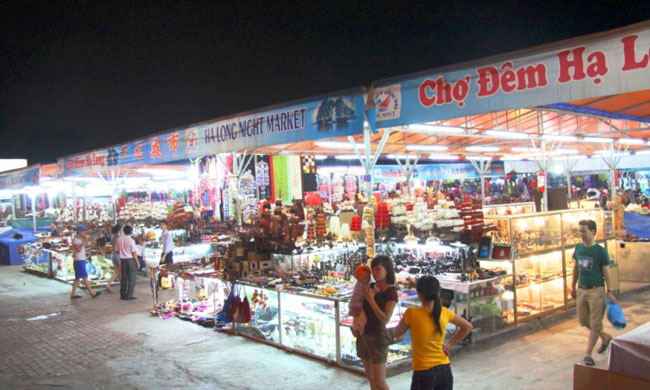
You have to get up early in the morning to enjoy the fruit on offer at the floating Halong Bay market.
Purveyors come out with dragon fruits, lychees, durians and other fruit as early as 5 a.m. and then wind up sales by about 10 a.m.
While this floating market is smaller than those in the Mekong Delta and others in southern Vietnam, it still provides for some amazing photo opportunities.

To think of Quang Ninh province is to think of Ha Long Bay, but aside from exploring the Bay, the city also has interesting stops extremely suitable for young people.
In many people’s minds, the Quang Ninh Museum is a boring place and usually just a point to briefly visit, observe a little and then quickly forget about it.
But this is simply not true for the Museum – Quang Ninh library combination.
This place is more interesting than you might have imagined.
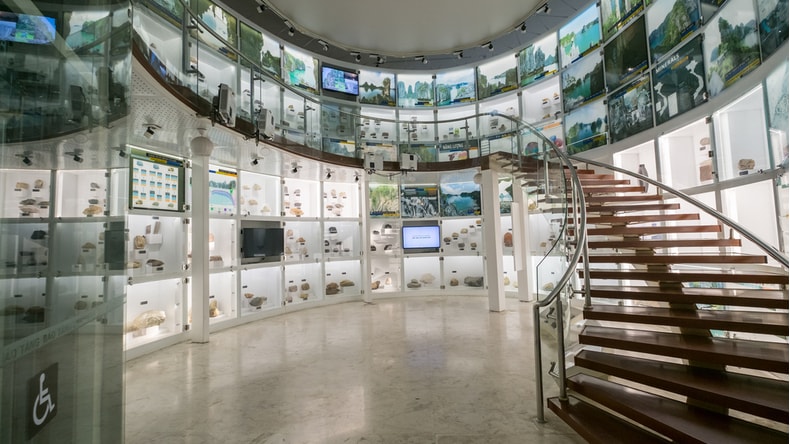
Designed by Spanish architect Salvador Perez Arroyo, the Quang Ninh Museum and Library is located on an area of nearly 24,000m², which includes three blocks of museum, library and convention complex, connected together by an overhead bridge system.
Inspired by the icon of coal, a typical mineral of Quang Ninh Province, the building is a symbol on the beautiful coast road in Ha Long City.
The building was assembled with 14,000m² of glass, resistant to temperature change.
Thanks to its specific architecture, the building looks like a giant mirror reflecting Halong Bay.
Upon entering the ground floor of the Museum, visitors admire a whale skeleton and sailboat models.
The first floor features tubular display columns made of modern materials, such as steel frame, tempered glass and fabric with images of Ha Long Bay.
Light projection technology makes visitors feel like they are walking on the waters of Halong Bay.
The 2nd floor design, based on a wooden boat, introduces Quang Ninh Province through prehistory, history, the Bach Dang victory, the resistance wars against the French and Americans, and Truc Lam Yen Tu Buddhism culture.
On the 3rd floor, visitors see display spaces of economic achievements, cultural identities and characteristics of ethnic groups in Quang Ninh Province, including images of visits of President Ho Chi Minh to Quang Ninh, as well as artifacts utilized in mining – especially the coal industry.
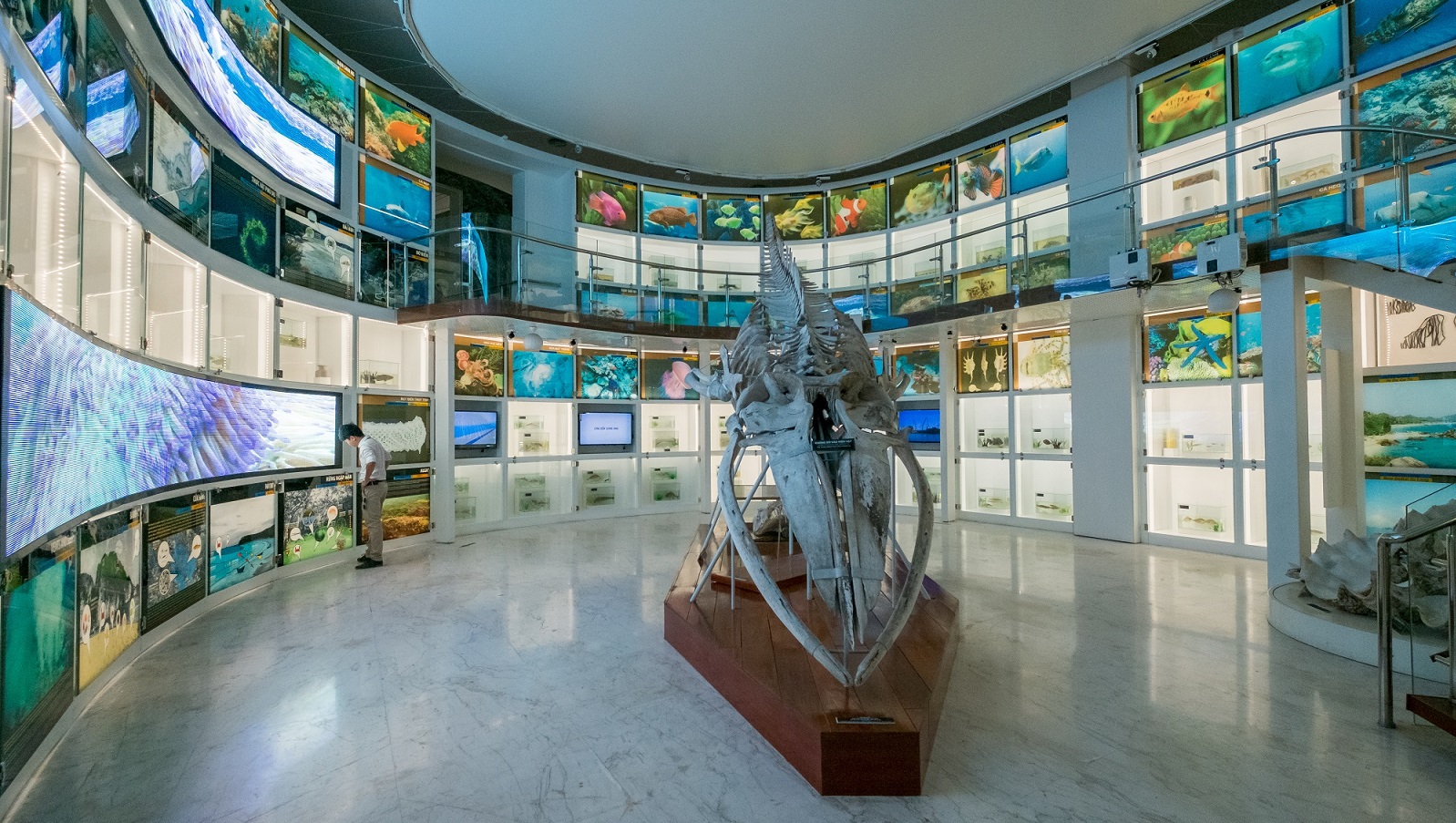
Aside from the Museum, the library block is also designed in a modern style.
The ground floor stores over 100,000 book titles of all fields.
The first floor consists of conference rooms, rooms for kids, a screening room, a theatre and a coffee shop.
The pendent floor has rooms for business, a display room of books and newspapers, a foreign language book room, and an Internet room.
The 2nd floor is made up of general reading rooms, reading rooms for the disabled, a general book warehouse with over 200,000 titles.
Also there are conference rooms with individual capacity of over 60 people per room.

I do not know if Heidi visited Cua Van or any of the aforementioned fishing villages.
I have been unable to find information about the Bai Chay Trading Center or either of the cultural centres Vietnam-Japan or Children’s.

Certainly from the summit of Poem Mountain, Ha Long appears immortal, but I find myself wondering how immoral the city actually is.
In 1999, it was said to be a den of backstreet activities best not discussed with the clergy.
Heidi, though not an innocent in the ways of the world, is not a woman to gravitate to the shadowlands of the urban world, for as brave a traveller as she is I believe that she can be sensible enough not to stray into alleyways where even curious cats hesitate to go.
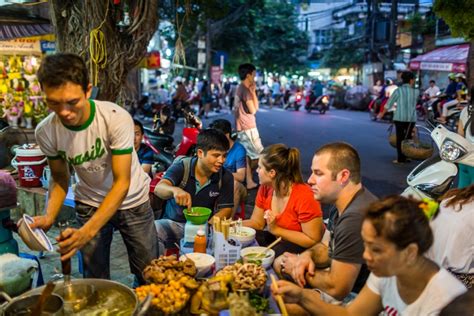
Since the 1980s, some women from Vietnam have become victims of kidnapping, the bride-buying trade, human trafficking and prostitution in China, Taiwan, South Korea, and in the cases of human trafficking, prostitution and sexual slavery, Cambodia.
The present-day struggle of the Vietnamese female victims of “bride brokers” can be summarized by the larger-than-life poem known as “The Tale of Kieu” which narrates the story of a female protagonist of Vietnam who was purchased by foreigners and was violated, yet kept fighting back against her captors and offenders.
Women and girls from all ethnic groups and foreigners have been victims of sex trafficking in Vietnam.
The main human rights issue in Southeast Asia is human trafficking.
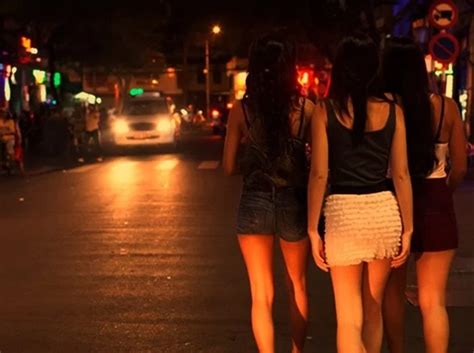
According to one study, Southeast Asia is a large source of human trafficking, with many individuals who fall victim to human trafficking being sent to Australia.
Vietnam, as well as other countries such as Cambodia, Laos, and the Philippines, are major source countries for human trafficking.
Southeast Asian countries preference for boys over girls is further tipping the balance between the sexes in the region, already skewed by a strong bias for boys.
The trend has led to increased trafficking of women.
While many of the victims that are a part of human trafficking are forced/kidnapped/enslaved, others were lured in under the assumption that they were getting a better job.
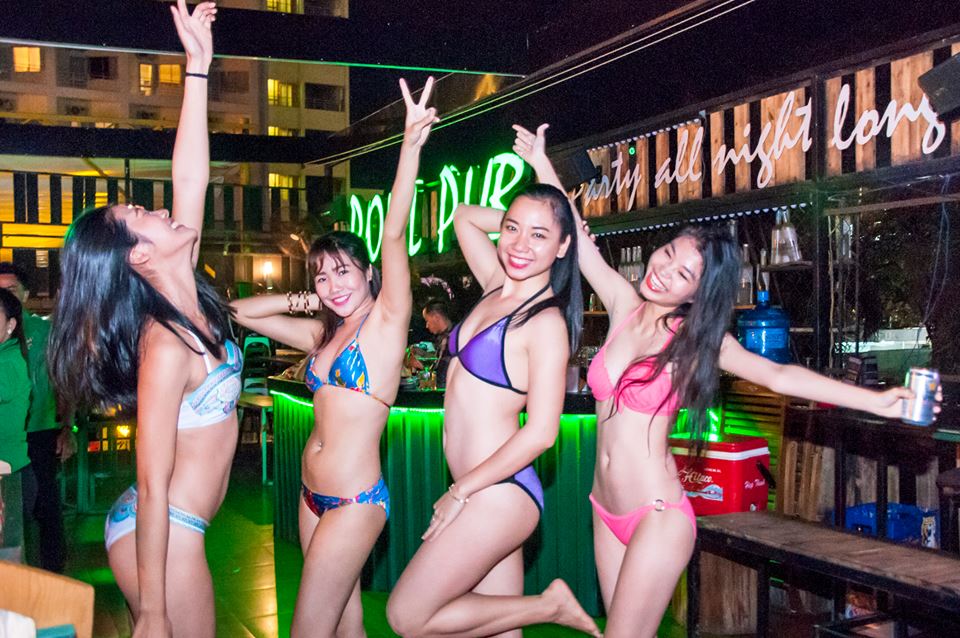
According to a policy brief on human trafficking in Southeast Asia, although victims include girls, women, boys, and men, the majority are women.
Women tend to be more highly targeted by traffickers due to the fact that they are seeking opportunity in an area of the world where limited economic opportunities are available for them.
Unskilled and poorly educated women are commonly led into human trafficking.
According to the United Nations Office on Drugs and Crime (UNODC) report, the numbers for women and men in forced labor may be skewed due to the fact that only a few countries released the numbers for adult men.
However what is known is that women are trafficked the most.
The main causes of human trafficking in Southeast Asia are universal factors such as poverty and globalization.
Industrialization is arguably also another factor of human trafficking.

Many scholars argue that industrialization of booming economies, like that of Thailand and Singapore, created a draw for poor migrants seeking upward mobility and individuals wanting to leave war torn countries.
These migrants were an untapped resource in growing economies that had already exhausted the cheap labor from within its borders.
A high supply of migrant workers seeking employment and high demand from an economy seeking cheap labor creates a perfect combination for human traffickers to thrive.
The sex industry emerged in Southeast Asia in the mid 20th century as a way for women to generate more income for struggling migrants and locals trying to support families or themselves.
Sex industries first catered to military personnel on leave from bases but as military installations began to recede the industry turned its attention to growing tourism.
Even as the industry is looked down upon today there is still a large underground market that is demanding from traffickers.
Between 2005 and 2009, 6,000 women, as well as younger girls, were found to be victims of human trafficking.
The majority of the women and girls are trafficked to China, 30% are trafficked to Cambodia, and the remaining 10% are trafficked to the destinations across the world.

Sex trafficking in Vietnam is human trafficking for the purpose of sexual exploitation and slavery that occurs in the Socialist Republic of Vietnam.
Although India, China and Pakistan are amongst the worst perpetrators of trafficking, Vietnam is a source and, to a lesser extent, destination country for sexually trafficked persons.
Sex trafficking victims in the country are from all ethnic groups in Vietnam and foreigners.
Vietnamese citizens, primarily women and girls, have been sex trafficked into other countries in Asia and different continents.
They are forced into prostitution, marriages, and or pregnancies.
Victims are threatened and physically and psychologically harmed.
They contract sexually transmitted diseases from rapes.
Abuse and malnutrition are common.
Some women and girls are tortured and/or murdered.
Sex trafficking and exploitation have pervaded all levels of Vietnamese society.
Male and female perpetrators in Vietnam come from a wide range of backgrounds and a number are members of or facilitated by organized crime syndicates and gangs.
Some government officials, troops, and police, as well as foreigners, have been complicit in sex trafficking in Vietnam.
Although the extent of sex trafficking in Vietnam is unknown because of the lack of data, the underground nature of sex trafficking crimes, inadequate victim identification procedures, and other elements.
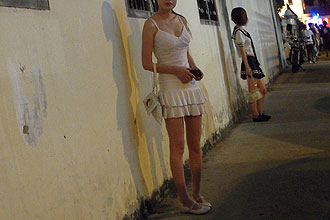
The enforcement of sex trafficking laws and investigating and prosecuting of cases have been hindered by corruption, apathy, border management problems, lack of cooperation among sectors, ignorance of anti-trafficking law, and more.
Globalization and the Association of Southeast Nations’ (ASEAN) shift towards a formal community with freer movement of trade and capital may lead to an increase sex trafficking.
![Flag of Association of Southeast Asian Nations Burmese: အရှေ့တောင်အာရှနိုင်ငံများအသင်း Filipino: Samahan ng mga Bansa sa Timog Silangang Asya[1] Indonesian: Perhimpunan Bangsa-bangsa Asia Tenggara[2] Khmer: សមាគមប្រជាជាតិអាស៊ីអាគ្នេយ៍ Lao: ສະມາຄົມປະຊາຊາດແຫ່ງອາຊີຕະເວັນອອກສຽງໃຕ້ Malay: Persatuan Negara-negara Asia Tenggara[3] Chinese: 东南亚国家联盟 Tamil: தென்கிழக்காசிய நாடுகளின் கூட்டமைப்பு Thai: สมาคมประชาชาติแห่งเอเชียตะวันออกเฉียงใต้ Vietnamese: Hiệp hội các quốc gia Đông Nam Á[4]](https://upload.wikimedia.org/wikipedia/en/thumb/8/87/Flag_of_ASEAN.svg/1920px-Flag_of_ASEAN.svg.png)
Cantonese outlaw bandit pirates in the Guangdong maritime frontier with Vietnam in the 17th, 18th and 19th centuries frequently kidnapped and raped Vietnamese women and Vietnamese boys.
Vietnamese women and girls were mass trafficked from Vietnam to China during French colonial rule by Chinese and Vietnamese pirates and agencies.
![TMP] "Got Your Own 15mm Wokou/Wako, Asian Pirate Crew?" Topic](https://buildingeverest.wordpress.com/wp-content/uploads/2021/07/d3514-swisspirate2.jpg)
French Captain Louis de Grandmaison claimed that these Vietnamese women did not want to go back to Vietnam and they had families in China and were better off in China.

Vietnamese women were in demand because of a lower number of Chinese women available in China and along the borderlands of China there were many Chinese men who had no women and needed Vietnamese women.
Vietnamese women in the Red River delta were taken to China by Chinese recruitment agencies as well as Vietnamese women who were kidnapped from villages which were raided by Vietnamese and Chinese pirates.
The Vietnamese women became wives, prostitutes, or slaves.
Vietnamese women were viewed in China as “inured to hardship, resigned to their fate, and in addition of very gentle character” so they were wanted as concubines and servants in China and the massive traffic of Tongkinese (North Vietnamese) women to China started in 1875.
There was massive demand for Vietnamese women in China.
Southern Chinese ports were the destination of the children and women who were kidnapped by Chinese pirates from the area around Haiphong in Vietnam.

Children and pretty women were taken by the pirates in their raids on Vietnamese villages.
A major centre for human trafficking of the slaves was Hai Phong.
Vietnamese children and women were kidnapped and brought to China to become slaves by both Chinese and Vietnamese pirates.

Mung, Meo, Thai and Nung minority women in Tonkin’s mountains were kidnapped by Vietnamese pirates and Chinese pirates to bring to China.
The anti-French Can Vuong rebels were the source of the Vietnamese bandits while former Taiping rebels were the source of the Chinese rebels.

These Vietnamese and Chinese pirates fought against the French colonial military and ambushed French troops, receiving help from regular Chinese soldiers to fight against the French.
Chinese and Nung pirates fought against Meo.
The T’ai hated the Viet Minh and fought against them in 1947.
Nung were said to be fit for banditry and piracy.
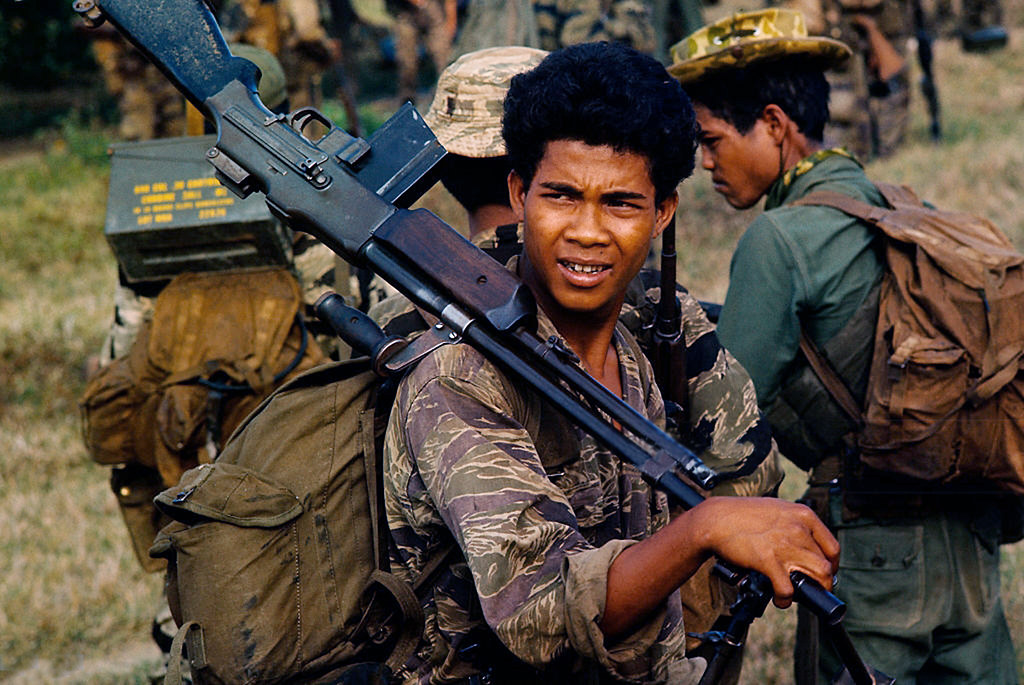
Brothels in Bangkok bought kidnapped Vietnamese women fleeing South Vietnam after the Vietnam war who were taken by pirates.

Vietnamese women and girls are sex trafficked into China, Hong Kong, Cambodia, Malaysia, the Philippines, Taiwan, South Korea and other nations.
They are forced into prostitution or marriages, as well as unfree labour in homes and on farms.
A number of women are raped so they become pregnant and are forced to be surrogates.
Some women and girls have been trafficked to groups of men, who are poor and pool their money together to buy one wife.
Forced prostitutes are raped in brothels, massage parlors, karaoke bars, and other establishments.
They are kept under strict surveillance and it is not uncommon for them to be guarded and/or tied or locked up.
A number of victims are drugged.
Minorities and people in poverty with little education and awareness of trafficking, as well as children, are vulnerable to sex trafficking.
Victims face social stigma after escaping or being rescued.
Some are reluctant to report traffickers to the local authorities because they fear reprisal from the criminals.
Vietnamese victims have been sex trafficked to businesses catering to people seeing the Southeast Asian Games and other sporting events.
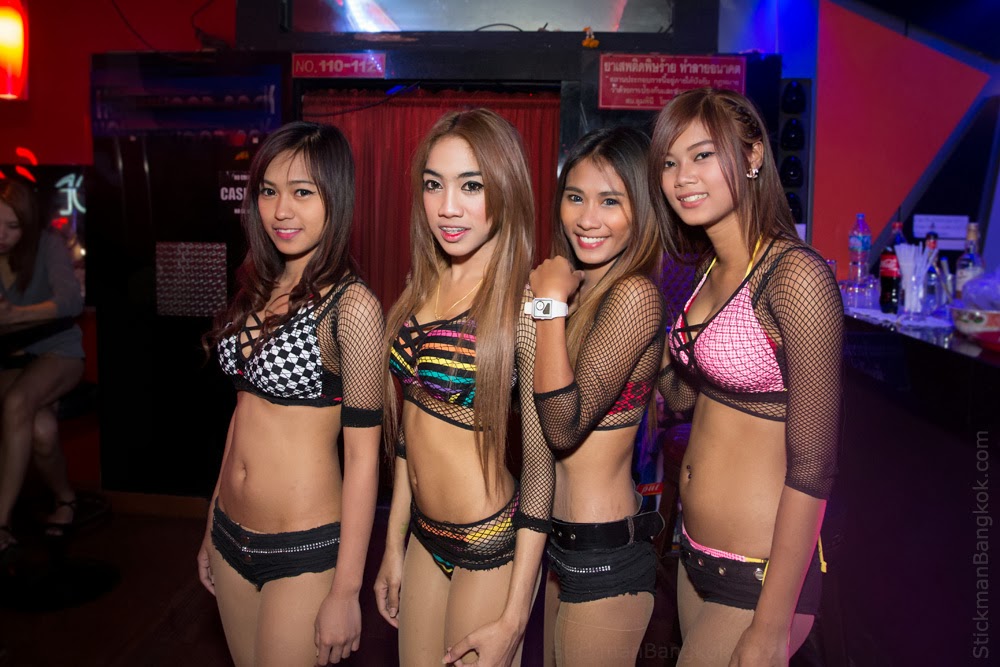
The perpetrators are often members of or collude with organized criminal groups.
Some perpetrators are government officials, military officers or enlisted men, or police.
Loan sharks have been involved in sex trafficking as well and take advantage of debt bondage to control their victims.
The traffickers are sometimes the victims’ family members or friends.
Perpetrators are motivated by monetary incentives.
A number of perpetrators are coerced victims of trafficking themselves.
Perpetrators use the Internet for cybersex trafficking crimes and the production and sale of child pornography.
They also use cryptocurrencies to help hide their identity.
Some sex traffickers pose as police officers to gain victims’ trust.
Traffickers use chat sites and social networks such as Facebook and Zalo, a popular Vietnamese messaging app.
Traffickers threaten victims’ families to ensure submission.
The government had inadequate re-integration services, therapeutic support, legal and financial assistance, and education for victims.
Limited protections are available for women and girls returned to their homes.
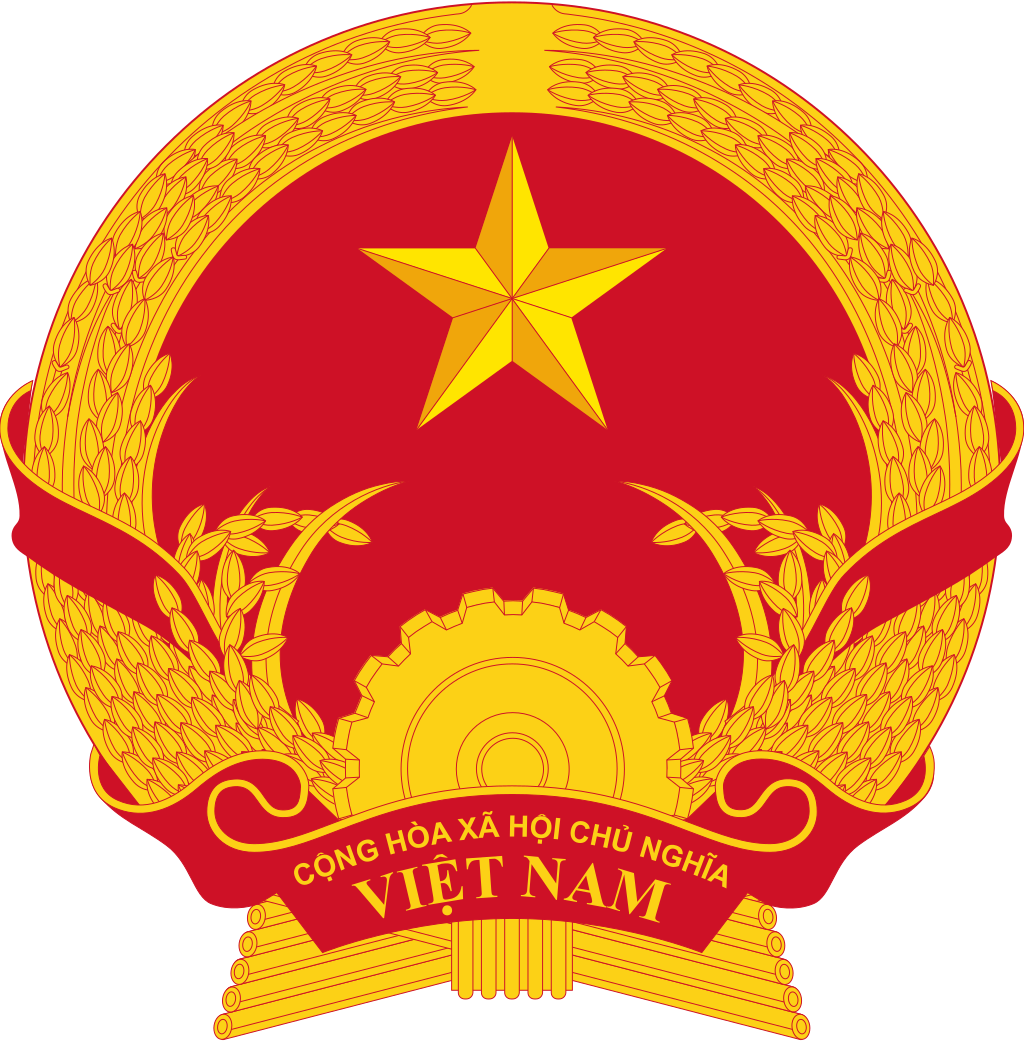
Blue Dragon Children’s Foundation rescues and restores sex trafficked victims in the country.

It is supported by the United Nations Trust Fund for Victims of Human Trafficking.

Pacific Links Foundation is an organization working to end sex trafficking in Vietnam through education and economic empowerment.

Prostitution in Vietnam is illegal and considered a serious crime.
Despite this, Vietnam’s Ministry of Labour, War Invalids and Social Affairs (MOLISA) has estimated that there were 71,936 prostitutes in the country in 2013.
Other estimates puts the number at up to 200,000.
Sex workers organizations report that law enforcement is abusive and corrupt.
MOLISA reported that in 2011, 750 prostitutes and 300 pimps were arrested.
251 businesses had their business licenses revoked for involvement in the sex trade that year.
It is unclear when prostitution and other forms of sex work first appeared in Vietnam.
Possibly the earliest depiction or mention of female sex work in Vietnam is in The Tale of Kieu (Vietnamese: Truyện Kiều), an epic poem written c. 1800 by celebrated Vietnamese writer Nguyen Du.
The poem’s story centers on the life of Thúy Kiều, a young woman living in mid-16th century Dai Viet who sacrifices herself to save her family.
To prevent the imprisonment of her brother and father, she sells herself into marriage, unaware that her new husband is a pimp, who forces her into sex work.
Despite the poem’s focus on forced sex work, it remains popular and moving even for present-day readers, suggesting that sex work is not strictly taboo in Vietnamese society.
The poem is set during the reign of the Jiajing Emperor of Ming China, at a time when Đại Việt was politically independent from China but asserted its membership in a shared, Confucian cultural world alongside China.
Unsurprisingly, the poem depicts a form of sex work that resembles Chinese courtesan culture.
The protagonist, Kiều, is not just a provider of sexual services but also an entertainer, a performer, and a potential lover.
This view of female sex work in Đại Việt, though fictional, complicates the assumption that sex work is necessarily or has always been a transactional exchange of sex for money.
The poem reveals a 19th century understanding of sex work in Vietnam that is rooted in performative and affective, not just sexual, labour.
Its continued resonance suggests that this understanding of sex work persists in the present.
Apart from the depiction of female sex work in The Tale of Kiều, scholars have found scant mention of the topic in other documents and texts from the Đại Việt period of Vietnamese history.
This suggests that even if sex work was present, it was treated ambiguously by Đại Việt rulers.

To illustrate, the 1812 legal code promulgated by Emperor Gia Long of the Nguyen dynasty, the most well-known of pre-colonial legal documents from Vietnam, does not contain any explicit prohibition of sex work, but it does contain a provision for punishing male court officials who visit ả đào singing houses, which have a reputation as historic sites of female sex work coupled with courtly entertainment.

During the colonial period, female prostitution and other forms of sex work were not banned but instead heavily regulated by French authorities.
The regulations focused heavily on encounters between the colonizing and the colonized (i.e., European men and Vietnamese women) leaving other kinds of sexual encounters and other forms of sex work, including ones involving native men or European women, unregulated.
Even then, there was plenty of clandestine or “black market” sex work that took place outside of the regulation system in the colonial period.
This situation is akin to that of the pre-colonial period, when sex work was regulated, albeit more loosely, and clandestine sex work also took place outside of the Đại Việt regulation system.
The regulation of female sex work did not exist in a vacuum.
Instead, it was part of the colonial government’s general system of regulating carnal encounters between the European and the Vietnamese populations.

As anthropologist-historian Ann Laura Stoler observes, sex work came to be seen as increasingly permissible when concubinage began falling out of favor with the government in the early 20th century.

Concubinage, both in Indochina and much of Southeast Asia, was initially seen in the late 19th century as more conducive than sex work for stabilizing racial hierarchies and preserving public health, because it provided European men in the colonies with an opportunity to build interracial relationships outside of marriage that are stable and do not risk the spread of venereal diseases.
However, concubinage produced mixed race (French: Métis) progeny whose identities were seen, increasingly in the early 20th century, as threatening to blur the boundary between colonizer and colonized and, thus, undermine racial hierarchies.

In that context, another historian notes that to colonial authorities, sex work became permissible or even preferable to concubinage, because it was seen as a loveless transaction; as such, it was highly regulated but not prohibited outright.
Both colonial records and contemporary native reportages (Vietnamese: phóng sự) tend to frame female sex work in colonial Vietnam as a problem that was not only morally and medically improper but was also a microcosm of some larger problem or fear, whether it had to do with the ineffectiveness of French colonial governance or the decline of Vietnamese society.

A clear example of this framing can be found in Lục Xì, a classic reportage of sex work in colonial Hanoi, written in 1937 by Vu Trong Phung, a renowned journalist and author of modernist Vietnamese literature.
The work was originally published in a local newspaper (Tương Lai, ‘Future‘) in a serialized format, before it was published as a book later in 1937.
Phụng’s detailed study of the sex industry was only possible because Hanoi’s officials wanted to showcase the city’s ostensible success in dealing with sex work to journalists and writers like Phụng, which give him and his contemporaries unprecedented access in 1937 to the municipal dispensary (Vietnamese: nhà lục xì, literally. ‘the look-see house‘) where sex workers were treated for venereal diseases.
However, sex work was by no means hidden from public view at the time, nor was the reportage Phụng’s first foray into writing about sex work, as he had just published a novel in 1936 (Làm Đĩ, ‘Prostitute‘) with a fictionalized account of how an upper-class woman becomes a sex worker, written in the style of social realism.
Phụng’s view is not simply that sex work was immoral, but that the outsize presence of sex work in Hanoi was a symptom of larger problems — such as exploitative or ineffectual colonial policies, materialistic attitudes, poverty, and the spread of venereal diseases — which stood in stark contrast to French claims that Vietnam was prospering under colonial rule.

On the other hand, the academic scholarship on the colonial period generally presents a view of female sex work as more than just an object of colonial regulation in the name of dealing with moral or medical impropriety, but also as an indication of the sex workers’ agency and a metaphor for the gendered and racial hierarchies that are at the heart of the colonial enterprise.

Many sex workers chose this line of work because they wished to escape rural poverty, and the sex industry provided a viable professional opportunity for them to uplift themselves economically.
This sense of agency also compelled sex workers to ply their trade in the black market, outside of onerous regulatory requirements and the state’s taxation regime.
At the same time, sex workers did not always make the choice of entering the profession freely.
They might have turned to sex work out of sheer economic desperation or fallen victim to indenture or trafficking schemes.
The fact that sex work was even a viable pursuit at all — that Vietnamese female sex workers would be patronized by European men — also had to do with the gendered and racial order in place at the time, which frequently cast Vietnamese women, in literary, visual and epistolary depictions, as sexual objects for the European male gaze and desire.

In general, historians have observed that regulations pertaining to sex work in colonial Indochina frequently echoed and influenced similar regulations in France, as described and analyzed by French historian Alain Corbin.

Shortly after the establishment of Tonkin as a French protectorate, in 1888, the Hanoi Municipal Council put in place formal regulations on prostitution in the city.
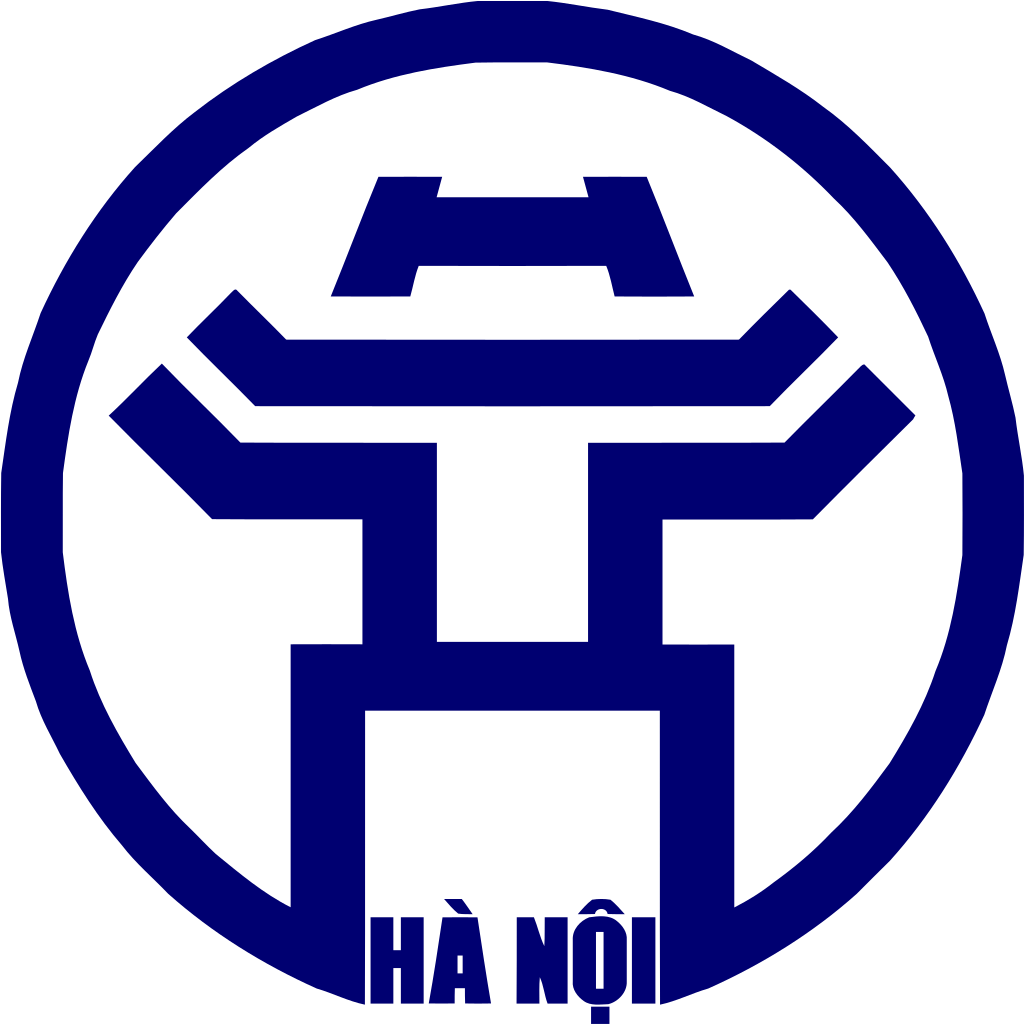
(Similar regulations had also been introduced in Haiphong in 1886.)
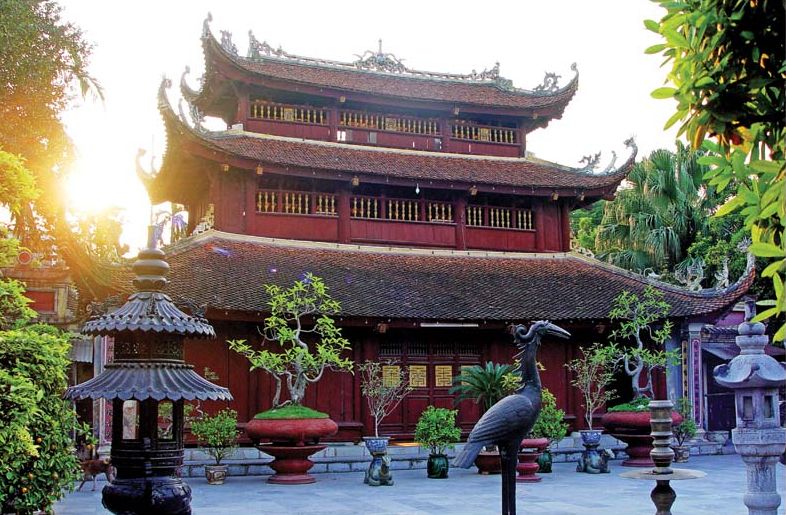
The 1888 regulations include a provision for the official licensing of brothel houses.
These licensed brothels (French: maisons de tolérance) were the only places where sex work was permitted.
At the same time, sex workers had to register their names, ages, places of origin, and place of employment with the municipal police, who maintained an official register of sex workers.
Registered prostitutes were known in French as filles publiques, ‘public girls‘ or filles soumises, ‘submissive girls‘ (i.e., they have submitted to the regulatory regime), or in Vietnamese as có giấy, ‘has papers‘.
The regulations also establish a municipal dispensary to screen sex workers for venereal diseases and house them for treatment if necessary — the same institution that would come to occupy the attention of Vũ Trọng Phụng in 1937.
In addition, the regulations expressly forbid the act of procuring, and dictated that only a woman could be the proprietor of a brothel.
The Hanoi regulations were not set in stone:
A modified set of rules, promulgated in 1891, permitted independent sex workers (French: filles isolées) to be licensed to work at a location of their own choosing rather than only at a licensed brothel.
In 1907, municipal authorities created a separate “vice squad” or service des moeurs (Vietnamese: đội con gái) in the police force to deal with all matters relating to sex work, including the registration of brothels.
Eventually, an extensive, uniform law governing sex work in all of Tonkin was promulgated by the protectorate’s résident supérieur in 1921.
Besides instituting requirements for registration and regular health checks, and mandatory treatment if a venereal infection were to be discovered, the 1921 law also taxed sex workers’ incomes.
The 1921 law, though ostensibly uniformly applied throughout Tonkin, was, strictly speaking, in force only in the French concessions — the cities of Hanoi and Haiphong, provincial capitals, and military bases — because the rest of the protectorate was indirectly ruled by the French through the Vietnamese emperor of the Nguyễn dynasty (Emperor Khai Dinh at the time).

(It has also been suggested that the special attention paid to military bases reveals that protecting the health of soldiers in the colonies was a key objective for regulating sex work and preventing the spread of venereal diseases in Tonkin.)

This patchwork legal situation created many spaces of non-regulation that sex workers would flock to if they did not wish to submit themselves to a regulatory system that they deemed onerous and oppressive, thus creating a thriving black market for clandestine sex work in Tonkin in the interwar years.
The presence of this black market was something that colonial officials frequently worried about, owing to fears about the possibility, in their minds, of an uncontrolled spread of venereal diseases among the buyers and sellers of clandestine, unregulated sex.

Much less research has been done on the history of sex work during the colonial period in central and south Vietnam, compared to north Vietnam (Tonkin).
Whatever details that have been uncovered by historians about the regulation of sex work in Cochinchina suggests great similarity with the situation in Tonkin.
There exist provisions in an 1878 ordinance for the regulation of licensed brothel houses (maison de tolérance), the registration of sex workers either as attached to specific brothels or as independent filles isolées, and regular checks for venereal diseases (French: visite sanitaire) at the municipal dispensary, especially in Saigon and Cho Lon (which would merge with Saigon to form a single city in 1931).
Just like in Tonkin, the regulatory system was run by a specialized “vice squad” or police des moeurs of the municipal police forces.
According to police and court records from the Cochinchinese archives, proprietors of brothel houses, as well as sex workers themselves, were given short prison sentences of 15 to over 30 days for violating any of the regulations concerning the registration or regular medical inspection of sex workers.
In particular, clandestine sex workers — who refused to be subjected to registration and medical requirements — were targeted for harsh enforcement, due to the colonial government’s public health fears about them spreading venereal diseases, both amongst themselves and to their European male clients.
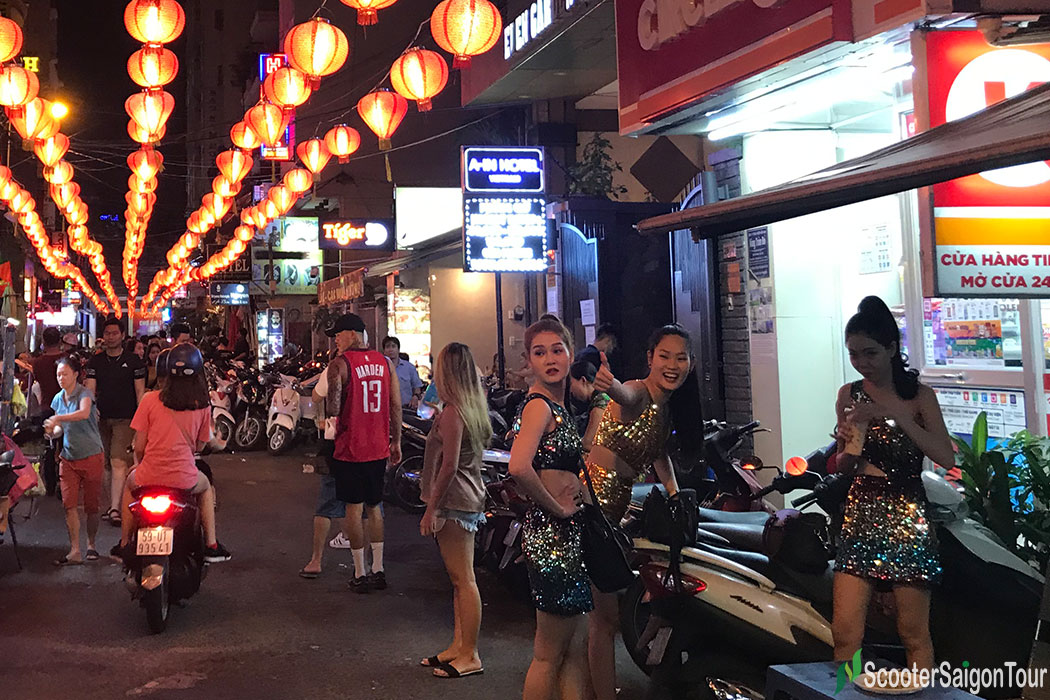
Besides native Vietnamese women, the sex industry in colonial Vietnam also saw the participation of sex workers of other nationalities, including Chinese, Korean, and Japanese.
Japanese women who travelled to other places to become sex workers were known as karayuki-san (唐行きさん, ‘Ms. Gone Abroad‘).
In Vietnam, the French word mousmé was used to refer to Japanese sex workers more specifically as well as all Japanese women more generally, which suggests either that most Japanese women in Vietnam at the time were sex workers or that Japanese women were always seen by the French in highly sexualized terms.
Perspectives on Japanese women in Vietnam at the time were also possibly affected by the 1887 publication of Pierre Loti’s novel, Madame Chrysanthème, which has as one of its main characters a mousmé who marries a French naval officer stationed in Japan.
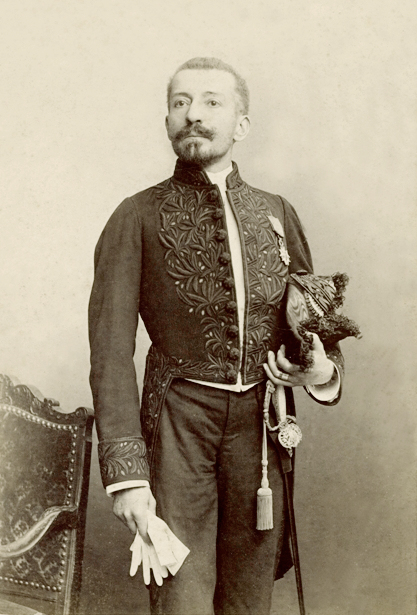
Japanese sex workers were present from early in the colonial period:
Records show that the first mention of a Japanese sex worker in Cochinchina dates to 1883, while in Haiphong, it dates to 1885.
They were engaged in similar activities as their native peers, but they would typically offer their services in separate brothels and places of entertainment, or as independent workers.
Unlike their Vietnamese peers, many Japanese sex workers would start off being under the yoke of indenture to cover the cost of their journey from Japan to Indochina.
Officials saw the Japanese sex workers, in an Orientalizing manner, as allegories or representations of the Japanese nation or certain essentialized Japanese values.
The colonial authorities did not seek to prohibit Japanese women from sex work, but merely subjected them to the same registration and medical regulations that applied to Vietnamese sex workers.
![Photos] The Japanese Prostitutes of Colonial Vietnam - Saigoneer](https://media.urbanistnetwork.com/saigoneer/article-images/legacy/v3LzMWkb.jpg)
There was also a sizeable number of Chinese sex workers who were present in Vietnam at the time.
Their clientele was likely more narrowly focused on the significant populations of Chinese men located throughout the Indochinese colonies then.
Significantly, an attempt in 1903 by the Saigon authorities to subject places that house Chinese entertainers to the same regulations as all other brothels in the city did not go well, as the Chinese Chamber of Commerce in Saigon intervened to argue that the new regulations were dehumanizing as well as to force the authorities to refrain from imposing new regulations.
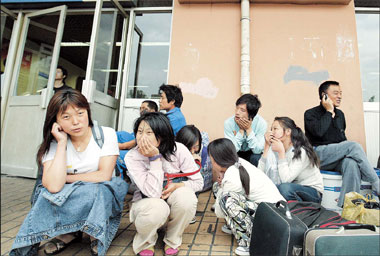
During the Vietnam War (American War in Vietnam), a whole sex industry sprung up around American servicemen.
It has been estimated that there were 300,000 prostitutes in the country during this period.
Prostitutes congregated at bars frequented by GIs and offered their services.
Sometimes, the prostitutes got pregnant.
The resulting Amerasian children, of whom there were estimated to be about 50,000, were ostracized and given the derisive name bui doi (‘dust of life‘).
Often, these children were themselves forced into prostitution.
During the war, hooch maids would often clean up after the soldiers in their dwellings.
One soldier described the maids as being “good Catholics who might flirt with you but would never date an American soldier.“
At the same time it was not unheard of for maids to “keep the plumbing clean” for soldiers to earn some extra income.

A survey of 150 prostitutes by the Vietnamese government-run Institute of Labour Science and Social Affairs found that 44% of prostitutes had suffered violence at the hands of clients.
Just under a half did not report the crimes to the authorities.

The Vietnam Network of Sex Workers have called for decriminalization to make sex work safer.

Kimberly Kay Hoang, assistant professor of sociology at the University of Chicago, who conducted a 2011 study of prostitutes in Ho Chi Ming City is quoted as saying:
“Legalising prostitution would also reduce violence and sex crimes such as rape and sexual violence.
Prostitutes would feel safe calling the police to report instances of violence and abuse by clients, traffickers, and pimps to law enforcement officials.”


Mr. Le Duc Hien, deputy director of a government department tasked with fighting social evils under the Labour Ministry, crystallized this by telling the media:
“It would be a strategic mistake to tap prostitution as an industry to boost tourism revenues.
What would happen if we recognize sex work as a profession but fail to manage it later on?“
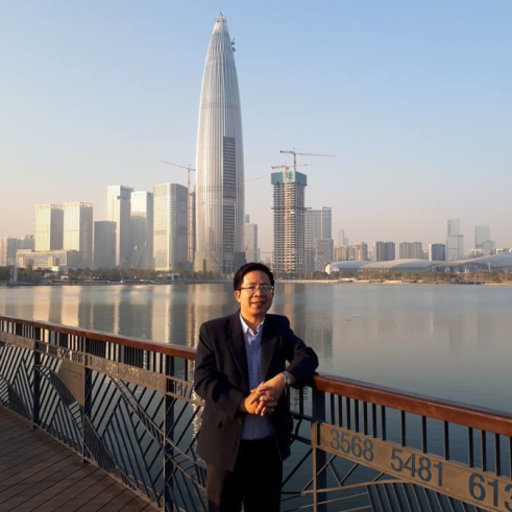
Various groups and individuals in Vietnam, including sex worker activists, scholars, the media, and non-governmental organizations, such as the Vietnam Network of Sex Workers (part of the Asia Pacific Network of Sex Workers), prefer using the term sex work instead of prostitution.

The Vietnamese government still refers almost exclusively to prostitution and prostitutes as the targets of its policies, whether that is the criminalization or the potential legalization of sex work in the country.
There is no clear or consistent pattern in how the terms are applied, even though there is an increasing awareness of other forms of sex work that so-called prostitutes may in fact be engaging in, such as webcam modelling.
There is also a recognition that the term sex work may not fully encompass the problem of sex trafficking, which Vietnam continues to deal with, as the term implies that a certain level of agency and willingness to engage in sexual labour, which victims of sex trafficking have been denied.
In discussing the historical phenomenon, some scholars argue that using the term sex work is anachronistic and prefer the term prostitution instead, as the latter term is what was used in documents and texts from the past.
Conversely, other scholars argue that the phenomenon was just as diverse in the past as it is in the present, so the term sex work is perhaps more appropriate than the term prostitution as an all-encompassing reference, and certainly more aligned with the ways in which sex workers in the present prefer to be identified and discussed.

There is a problem of HIV among sex workers.
Fear of detection prevents prostitutes accessing health services and so infections go untreated and spread.
Advocates of decriminalization submit that where prostitution is illegal, sex workers are more susceptible to sexually transmissible infections (STIs).
At a conference in 2011, a paper presented by Vietnam’s Labour Ministry, said 9.3% of prostitutes in the country were infected by HIV.
However it was considerably higher in some areas: Hanoi 20%, Ho Chi Minh City 16%, and Hai Phong 23%.
Lack of access to condoms and medical services were primary causes.
Prostitutes may also avoid condoms as they can be used as evidence of prostitution.
A study of 5,298 prostitutes published in 2015 by “Drug Alcohol Depend” concluded that injected drug use is also a key risk factor for HIV transmission amongst prostitutes.

Vietnamese prostitution is not confined to the country itself.
In Ho Chi Minh City and the Mekong Delta, there are reports of women being forced into prostitution after marrying overseas, particularly in other Asian countries.
In Macau, exploitation of women has been supported by legal organizations.
In the end, these women were often forced into indentured servitude or prostitution.
Many women travel from Lao Cai (northwest Vietnam) to Hekou County in China to work in brothels that cater to Chinese men.

In Ho Chi Minh City, many of the prostitutes are under 18 years of age.
Some were forced into the trade because of economic needs.
The prostitutes are both girls and boys (called trai bao (“covered boy“) and trai gọi (“call boy“)).
In addition, children are trafficked due for the need for prostitution in other countries.
One non-governmental organization estimates that the average age of trafficked girls is between 15 and 17, although the average age of girls trafficked to Cambodia is estimated to be much lower.

In the Sa Pa (northwest Vietnam) tourist region, an Australian non-governmental organization uncovered 80 commercial cases of child exploitation by foreign nationals in 2007, the same year that the nation established a child sex tourism investigative unit within the Vietnam Ministry of Public Security.
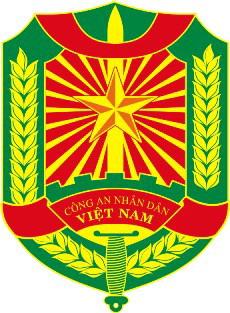
Vietnam is listed as a Tier 2 country for human trafficking by the US Department of State Office to Monitor and Combat Trafficking in Persons.

Vietnam is a source and, to a lesser extent, a destination country for women, and children subjected to sex trafficking.
Vietnamese women and children are subjected to sex trafficking abroad.
Many are misled by fraudulent employment opportunities and sold to brothel operators on the borders of China, Cambodia, and Laos, and elsewhere in Asia, including Thailand, Malaysia, Korea, Taiwan and Singapore.
Some Vietnamese women who travel abroad for internationally brokered marriages or jobs in restaurants, massage parlors, and karaoke bars — mostly to China, Malaysia and Singapore – are subjected to forced prostitution.
False advertising, debt bondage, passport confiscation and threats of deportation are tactics commonly used to compel Vietnamese victims into servitude.
Traffickers increasingly use the Internet, gaming sites, and particularly social media to lure potential victims into vulnerable situations.
For example, men entice young women and girls with online dating relationships and persuade them to move abroad, then subject them to sex trafficking.
Many children from impoverished rural areas, and a rising number from middle class and urban settings, are subjected to sex trafficking.
Child sex tourists, reportedly from elsewhere in Asia, the United Kingdom and other countries in Europe, Australia, Canada, and the United States, exploit children in Vietnam.

The protagonist of the 1989 musical Miss Saigon is a Vietnamese prostitute named Kim.
Echoing the plot of Puccini’s opera Madama Butterfly, Kim falls in love with and is left pregnant by a client who is a white American soldier with a wife at home.
After he has abandoned her for his American wife, Kim realizes her child’s father will never return and shoots herself.
The show drew criticism for promoting the stereotype of a dominant/submissive relationship between a Western man and an Asian prostitute.
It might also have attracted criticism on other grounds, such as its lack of originality in repeating the basic theme of Madame Butterfly, and the improbability of a sex worker’s coming to love a man who pays for her services.
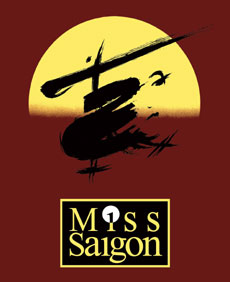
F**k Miss Saigon is a 2017 book on the sex trade in Vietnam, written by a working prostitute from the Mekong Delta.
This is the first account of prostitution in Vietnam by a prostitute.

The 2008 Vietnamese television series Am Tinh was a documentary about Lam Uyen Nhi, a former beauty contest winner turned prostitute and drug addict.
Eventually, Lam died in 2007 after a battle with HIV/AIDS.
The 20-part series focuses on Lam’s ups and downs, with 2006 Miss Vietnam winner Mai Phuong Thuy playing the part of Lam.

The 1987 film Full Metal Jacket features scenes wherein prostitution is depicted with the soldiers.
In one scene, Private Joker (Matthew Modine) and Private Rafterman (Kevyn Major Howard) are approached by a Da Nang hooker (Papillon Soo Soo).

The 1974 film Hearts and Minds features scenes of prostitution, at both the beginning of the film, and during the middle of it.
The first scene depicts soldiers’ soliciting prostitutes in Saigon, and the second scene includes interviews with soldiers who are with prostitutes, with questions asked about the war and their current activities.

The 2011 film Lost in Paradise is a film that features two storylines.
The main storyline focusing on gay male prostitution and the secondary storyline featuring a female prostitute.
The film also includes violence against prostitutes for being gay.
A Vancouver International Film Festival reviewer said that he felt the film’s portrayal of gay prostitution was “authentic.”

Under no circumstances do I wish to equate Heidi with the unfortunate folks who have felt that prostitution was their only option.
For the primary difference between women like Heidi and those involved in sex work is that Swiss Miss has been fortunate to have lived a life free of abusive behaviour, has been blessed with a belief in herself that does not require affirmation from her appearance, has been fortunate to have been raised in a safe environment that was, for the most part, though imperfect, was generally both psychologically and financially healthy.
Not every woman has been so fortunate.

Furthermore, Heidi was raised with an instinctive self-preservation that has mostly kept her away from threatening scenarios and dodgy neighbourhoods after midnight.
Heidi has, for the most part, been blessed with happiness.
She has not needed to seek it from without, for it usually remains within herself, secure in the knowledge of her own worth.
I cannot condemn anyone who has been compelled to engage in intercourse for reasons removed from passion or love.
I comprehend the drive that compels men to seek sexual gratification, but I cannot condone practices that demean and diminish the objects of their lust.
When the target of one’s urges ceases to matter more than the bestial nature of the act then prostitution does not only damage the prostituted but the prostituter as well.

According to family therapist Steve Biddulph, what should be one of our greatest glories in life is often one of the greatest disappointments.
Deep down many men feel themselves to be “creeps“.
Biddulph estimates that 60% of men under forty are sex-addicted as opposed to being sexual in a whole and balanced way.

There is a deep danger for boys and men in the power of sex.
If this much energy doesn’t flow in a good direction, it can sometimes go in a very bad one.
There is a major and justified focus in feminism on the capacity of men to hurt and harm in the sexual arena – to exploit, harass, rape and kill.
This isn’t a peripheral concern – sexual abuse occurs virtually everywhere.

That “all men are animals” isn’t an explanation or a cure for this.
We urgently have to explore male sexual development, to find out how a healthy energy can avoid becoming so badly misdirected.

Women, authors of their own transformation, produce femininity by means of cosmetics, hair style and clothes.
Too many emphasize their sexual characteristics to the neglect of their natural selves.
Some women are so preoccupied with self and with beautification that men have come to the conclusion that they lack beauty, that they are unworthy of beauty in a culture that encourages us to look-but-don’t-touch.

Despairing of ever winning the unapproachable woman’s love and closeness, a man can become a creep to have the upper hand.
Here can be the genesis of the rapist, the molester, the porn addict, the slayer and the beater.
Every man struggles to feel okay about his wants and desires in a seemingly losing position with women – knowing too well the feelings expressed in the Dr. Hook song, “Girls can get it any time they want“.

This is more than just a problem of sexual confidence.
Many men confuse sexual rejection with outright rejection – of themselves and their loveability.

All human beings need to feel loved.
There’s nothing you can do that can’t be done
Nothing you can sing that can’t be sung
Nothing you can say, but you can learn how to play the game
It’s easy
Nothing you can make that can’t be made
No one you can save that can’t be saved
Nothing you can do, but you can learn how to be you in time
It’s easy
There’s nothing you can know that isn’t known
Nothing you can see that isn’t shown
There’s nowhere you can be that isn’t where you’re meant to be
It’s easy
All you need is love
All you need is love
All you need is love, love
Love is all you need

To be valued as we are, treated with kindness and to experience daily intimacy.
Since many men come to women with a deep lack of inner worth, they can be tempted – instead of risking rejection as an equal – to use their strength, their sneakiness, their money and other power plays to improve their needs.
Women pay a great price for this.
The whole of the prostitution industry relies on the emotional impoverishment of men – so many of whom feel more comfortable buying “pretend” love than dealing with the complexities of the real thing.

We tend to forget that sex is more than an intimate meeting between individuals.
Sex is an inward, personal thing.
For a man to relate to a woman successfully, he must first be comfortable with himself as a man.
To be successful as a lover, one must first see oneself as loveable, able to receive and give tenderness, as the possessor of a magical soul and a powerful heart.

A man’s sexual energy is good, that animal heat, that fierceness and passionate spontaneity is good.
With this confidence, there is no need for aggression or competitiveness, no need to put women down.
When men accept their yearnings they can be unashamed and free of the need to dominate.
If your desired woman wants you, then that’s great.
If she doesn’t, then that’s OK.
Eventually someone else will.

When a man has his inner esteem sorted out – with quiet confidence – then he can approach an adult woman as an equal.
He can enter the dance of love with pride.

Women hold such visual and tactile magic for men that it is easy to make the serious mistake of handling one’s power over to them.
In seeing women as the holders of sexual attraction – as having power over men’s desires – men give away their own sexual energy.
We put women on a pedestal and then resent them for being there.
We have to become aware that sexual attraction lies not in the way a woman looks, but in the way we choose to look at a woman.

No one arouses us.
We amuse ourselves, no matter how convincingly we project such a capacity onto another.
Men are not bewitched by women, but are bewitched by their own appetites, by their own animation and submission to these appetites.
Women create themselves into glossy images, but provocative perfection offers no warmth, no fealty, just the promise of pleasure and then a long emptiness.

Women don’t turn you on.
You turn yourself on by the way you focus on women.
Knowing this means each man has a choice and a responsibility, to pay attention to both his needs and the needs of others.

If a man could travel to Ha Long City and rather than seek release in dark shadows, instead take himself to a water puppet show and listen to the harmony of strings or to a park and smile at sunlight on a leaf, to feel the grace of the wind, then lust may one day be ready to surrender to love.
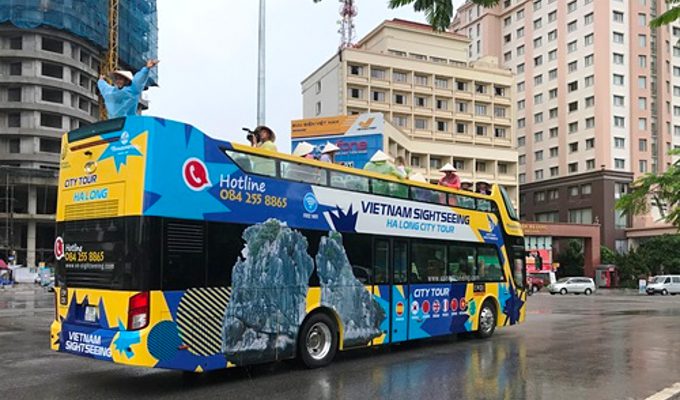
To taste her body on your lips, your tongue savouring her crevices, akin to plunging your face into a bowl of ripe summer fruit and inhaling the mingled fragrances of peaches and apples and pears.
To experience a woman each time anew, where all of her is fresh, all of her is beautiful, where her glory brings ecstasy to even a village, where her spirit causes the grass to wave, where her imagination makes barns into palaces and lightpoles into temple pillars, and small roads are populated by the passion she invokes.

Imagine a world where men’s passions are ruled by trust, rather than ruined by the blind rage which both genders possess and which achieves nothing but the loss of love and feeling.
It is the frustration of needing each other so much and yet not knowing how to overcome a tradition of estrangement and misunderstanding.
We must fight, we must debate, we must be true to ourselves, otherwise our closeness is just an act.
But in fighting, both genders must show restraint and respect towards one another.

In Ha Long City, in Hanoi, in Haiphong, in Ho Chi Minh City….
In Hartford, Hertford and Hampshire….
In Hawkesbury, Hull and Hamilton….
Better balanced men might one day make the subjugation of women unnecessary, the demand for dark deeds done on dark streets undesirable, where women might once again feel free to be themselves rather than the fantasy figures for frustrated boy-men.

The core message of feminism is true.
We are equal but different.
Men need to learn to be considerate and patient and persistent.
Both genders have a part within that is wild and free.
She wants passion and purpose in a man, that fierce longing for her.
Tenderness, skill and intensity that set her alight and which in turn allows him to abandon himself to his passion, catching up with her in joyous release.

Love, lovemaking, was never meant to be a sprint.
It is and has always been a marathon.
It has had to be, for a woman risks more than a man.
She seeks her freedom, but needs to know that she will be protected in her quest for her self.

Quite frankly, many men need to learn trustworthiness, not in how others trust them, but in the truth of trusting his own inner spirit and convictions.
To risk being disliked by another in the affirmation of self.
This is why there is in the initation of seduction, the risk of rejection.

She will trust you when you have proven that as much as you respect and desire her, you respect yourself too.
When the desperation dissolves, when what is offered is real companionship, when a man is confident enough in himself to “take it or leave it“, when her love and affection is no longer a matter of life and death to him, then and only then is he worthy of her attention and respect.
How can she love someone she does not respect, who in his longing to be loved sacrifices himself and all that he could be?
When a man is complete within, with or without a woman’s love, then and only then is he truly free.
Then and only then will he allow women the freedom to be themselves, to be all they can be, without the insecurities of powerplay between the sexes.
A woman cannot complete a man, she can only compliment him.
He is responsible for himself.
By the same token, it is not a man’s job to fix a woman, only to love and respect the miracle that she is.

And this is the sadness that Ha Long City suggests, what any urban environment suggests, that people are hurting.
Too many of us are the walking wounded, seeking solace in that which cannot satisfy.
We travel, for there is a need for a place, a search for a home where we can dwell at peace with ourselves, a private place where one can be restored by their own sense of self.
When that retreat cannot be found, the inner death seeks a spark, withdrawing from the responsibilities and difficulties of life into the unreality of escape.

Ho Long City has potential that even the World Bank has recognized, but it must resolve to be more than its reputation as a den of robbers and rogues, preying on the gullible tourist, the lonely man and the desperate woman.

Legalizing prostitution is not the answer to the debasement of women, though regulation of the sex trade might ensure that sex workers are afforded the health care and legal protection that illegal work cannot provide.
Fiercer focus should be placed on those who exploit the vulnerable and force them into the selling of self.
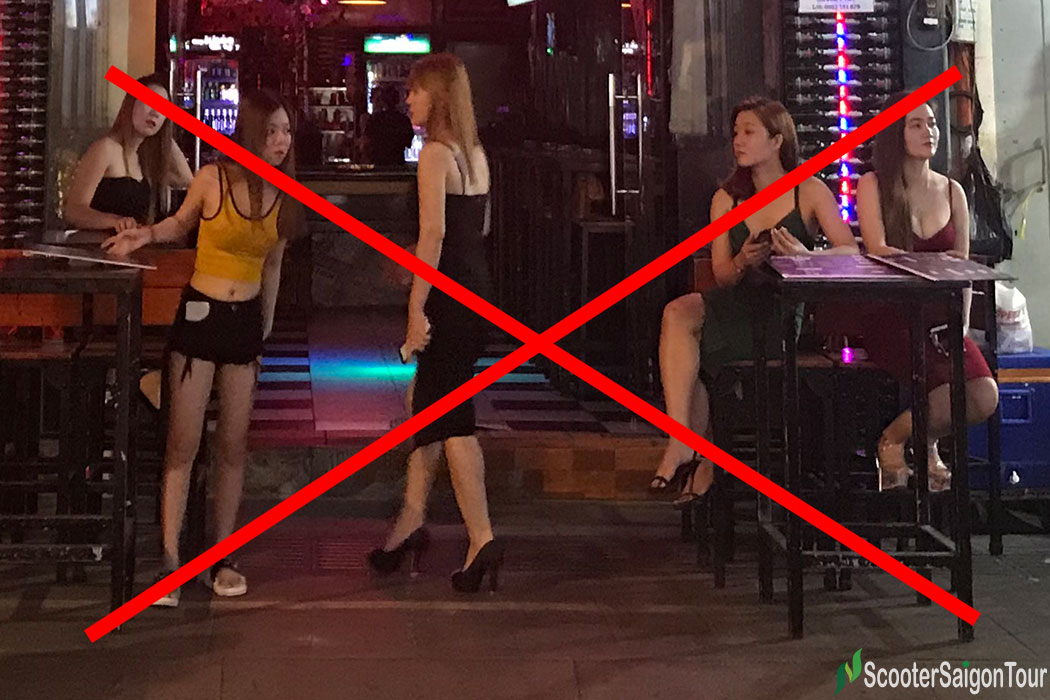
Communism might be respectable if it acted as it should, ensuring the dignity and equality of everyone in its sway.
But Vietnam and China and North Korea are Communist regimes in name only.
They are autocracies, pure and simple.
Autocrats confuse fear with respect.
But the people will do as you desire only out of fear of consequences and they will flaunt the rules because they do not respect the ruler.

Marx and Engel were fierce proponents of human dignity, were fierce opponents of capitalism that views the vulnerable elements of humanity as mere pawns in the pursuit of wealth.
Communism that allows dark capitalism to go unchecked, that allows bullies to dominate with fear and prostitutes women and children, is not the Utopian version that Marx and Engel envisioned.

Certainly, it is a good and positive thing that the Western tourist is encouraged to visit.
Certainly, it is a good and positive thing that traditions can be maintained, if for no other reason than to generate income from travellers.

But if Ha Long City is an example of Communism in action, then the image belies the reality.
Too few see Ha Long City’s virtues as they are lost in the cacophony of tourist touts by day and illicit excitation by night.
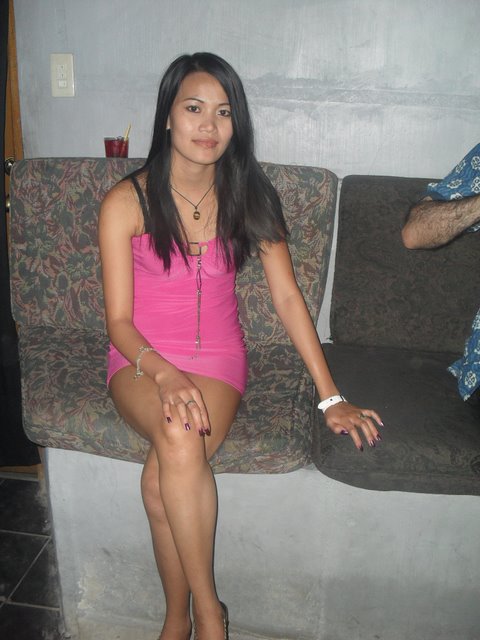
Heidi, like any other Westerner, saw only what she wished to see, by remaining where she was safely oblivious to local realities.
Hostels and hotels are not real life, but rather an escape from it.
They are an illusion of home without any of its demands or responsibilities.

Illusions are lost in the maze of back streets.
There is no wisdom to be found after midnight nor before dawn.
Harsh real life is lived in the shadows and the darkness.
Real life is fraught with fear and danger.
Why explore the City when the Bay beckons?
And the Bay beckons.

Heidi recalls little of the City, for there was little to attract her attention or respect.
The markets are markets, the museum is a museum, and the darkness offered nothing new.
She would meet a family from Canada and they would part company with neither regret nor nostalgia.

She would meet a girl from England with whom the moment was pleasant but not even her name was memorable.

The Canadian family and the Englishwoman shared one commonality with the City.
They generate acknowledgement but do not engender love nor respect beyond the pretense of polite behaviour.
There is no love without respect and respect must be earned, must be self-evident.
So the tourist may spend a night or two in anonymous accommodation in an anonymous city, but the Bay beckons and the City is merely a pit stop, a waystation between what was seen and what one seeks to see on the morrow.
Anonymous lives lost in the lacklustre lamplight of a restless longing for more beyond the obvious do not seduce the traveller.
The needy do not generate respect.

The City reminds me of an Aimee Mann song:
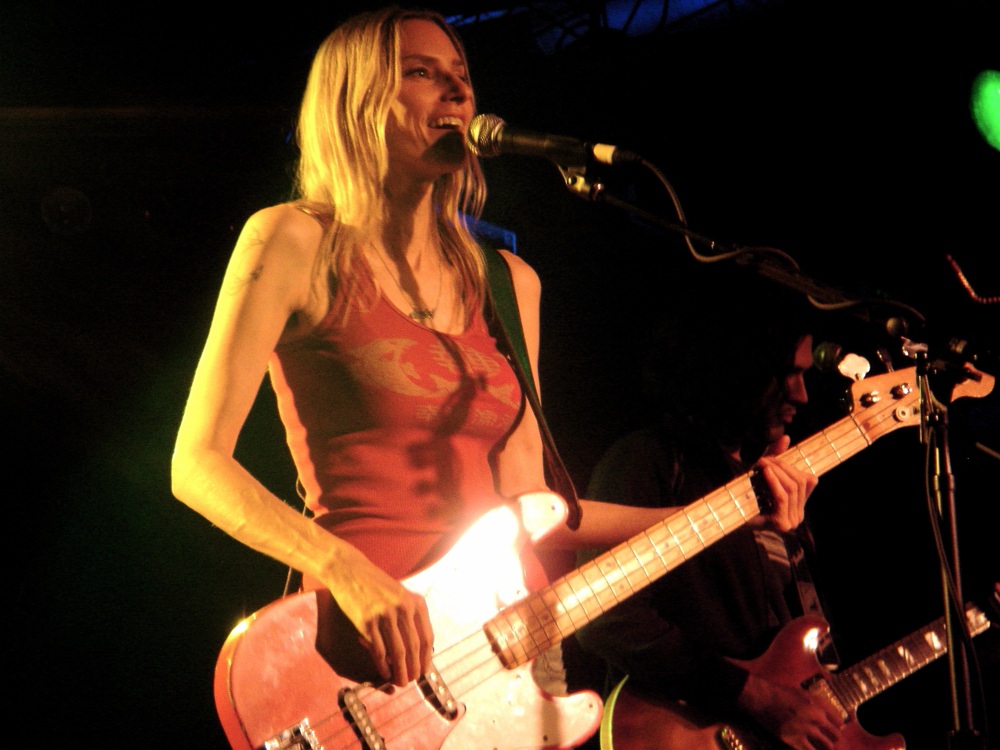
You look like
A perfect fit
For a girl in need
Of a tourniquet
But can you save me?
Why don’t you save me?
If you could save me
From the ranks of the freaks
Who suspect
They could never love anyone
Above: Aimee Mann, William H. Macy (Donnie Smith) and Henry Gibson (Thurston Howell), Magnolia – Save Me video
Cause I can tell
You know what it’s like
A long farewell
Of the hunger strike
But can you save me?
Come on and save me
If you could save me
From the ranks of the freaks
That suspect
They could never love anyone
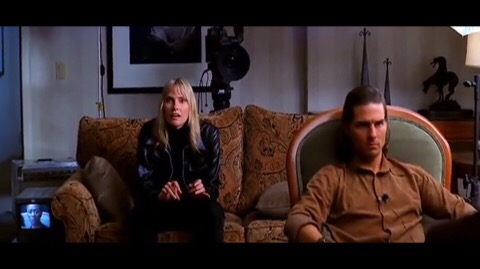
Above: Aimee Mann and Tom Cruise (Frank T.J. Mackey), Magnolia – Save Me video
You struck me dumb
Like radium
Like Peter Pan
Or Superman
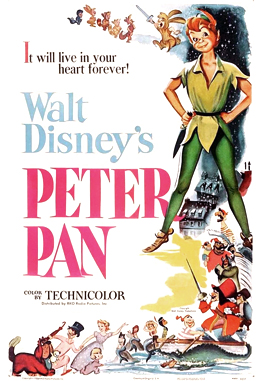
You have come to save me
Why don’t you save me?
If you could save me

From the ranks of the freaks
Who suspect
They could never love anyone

Above: Jason Robards (Earl Partridge) and Philip Seymour Hoffman (Phil Pharma), Magnolia
Except the freaks
Who suspect
They could never love anyone

Above: John C. Reilly (Jim Kurring) and Melora Waters (Claudia Gator), Magnolia
But the freaks
That suspect
They could never love anyone.

Heidi neither wishes to rescue anyone nor be rescued by anyone.
Life is complex enough, survival of self complicated sufficiently by itself.

And that is the vibe of Ha Long City.
It is needy.
The boats need you.
The girls need you.
The men upon the boats and the men that wander the lonely streets long after the sun has set are needy.

But do we need the needy?
And what of your needs, of your wants, of your desires?
The City cannot respond beyond its cries for your attention.
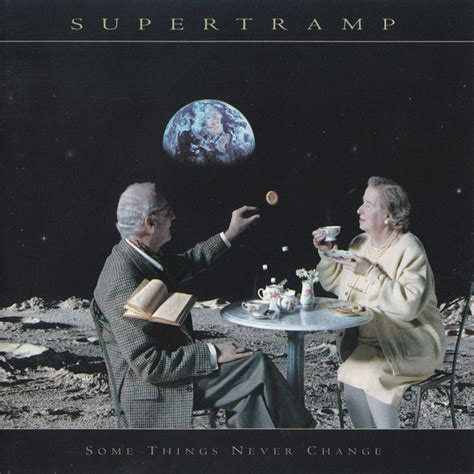
We do not need Ha Long City, except as a departure point for Ha Long Bay.
The dragon has descended into the depths of its own despair.
And drowning dragons are dangerous, detrimentally drawing the unwary to their own doom.
Reality is too real for the tourist and is therefore best avoided.
Ha Long City is needy.
And no one really needs that.

Sources: Wikipedia / Google / The Beatles, “All You Need Is Love” / Steve Biddulph, Manhood / Aimee Mann, “Save Me“, Magnolia (soundtrack) / National Institute for Urban and Rural Planning (NIURP) under Vietnam Ministry of Construction with technical advice of World Bank, City Development Strategy for Halong, World Bank Report 68753